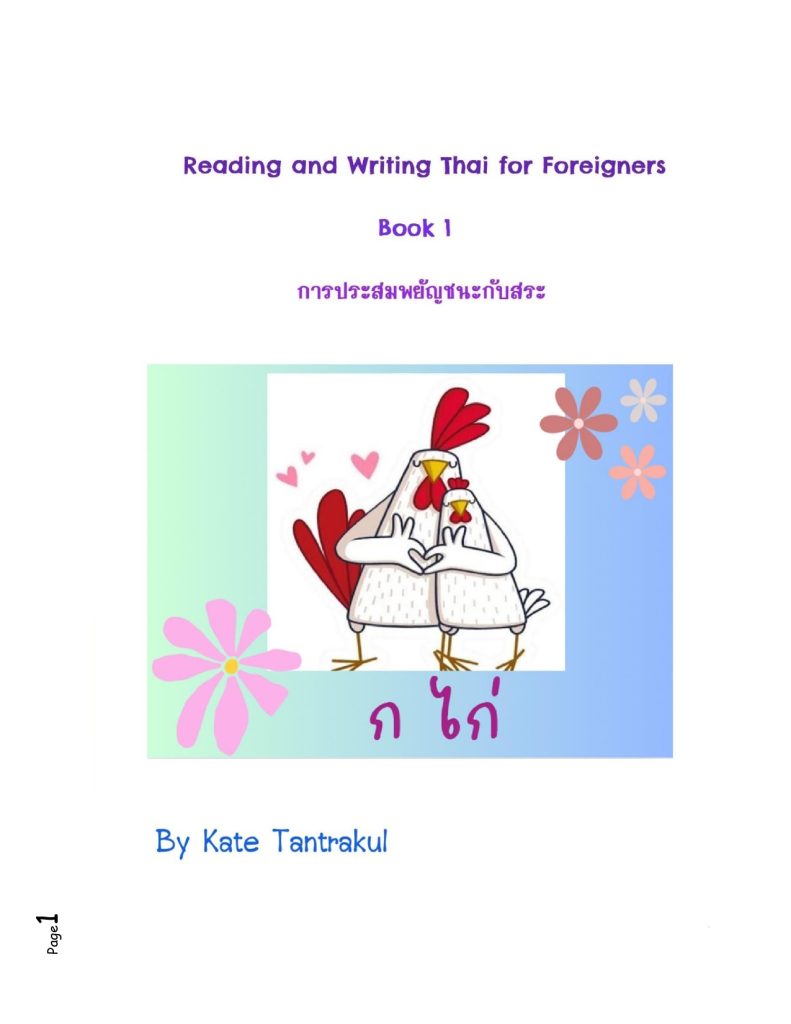
บทที่ 1
Thai Consonants
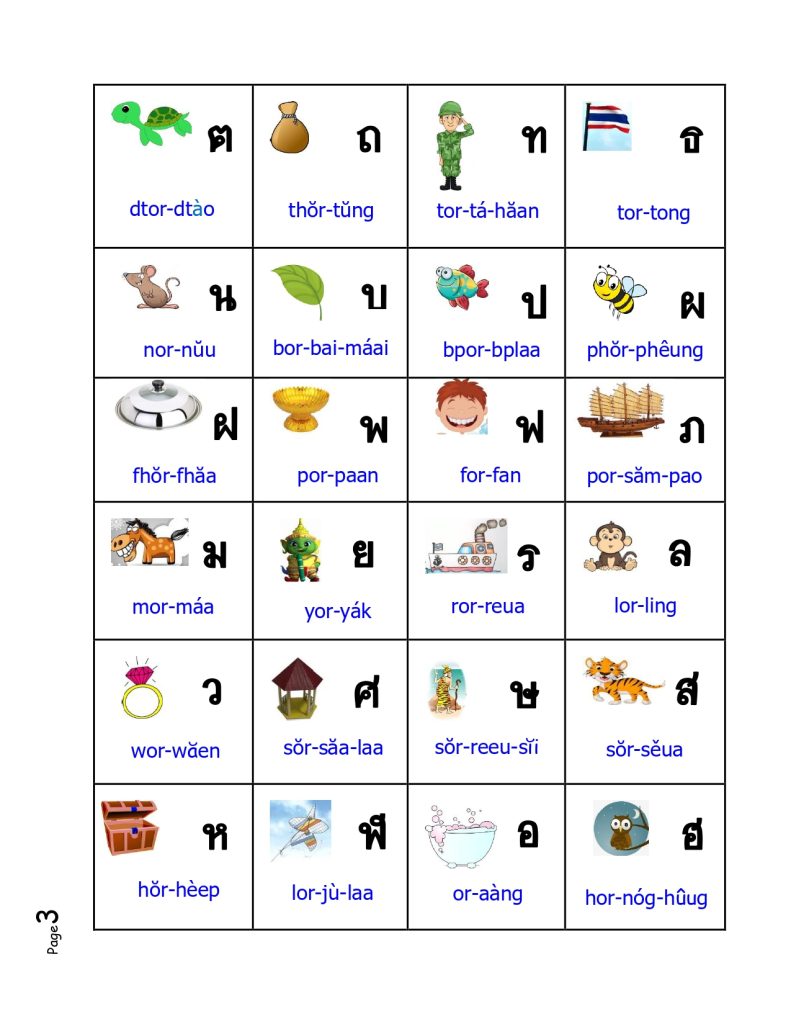
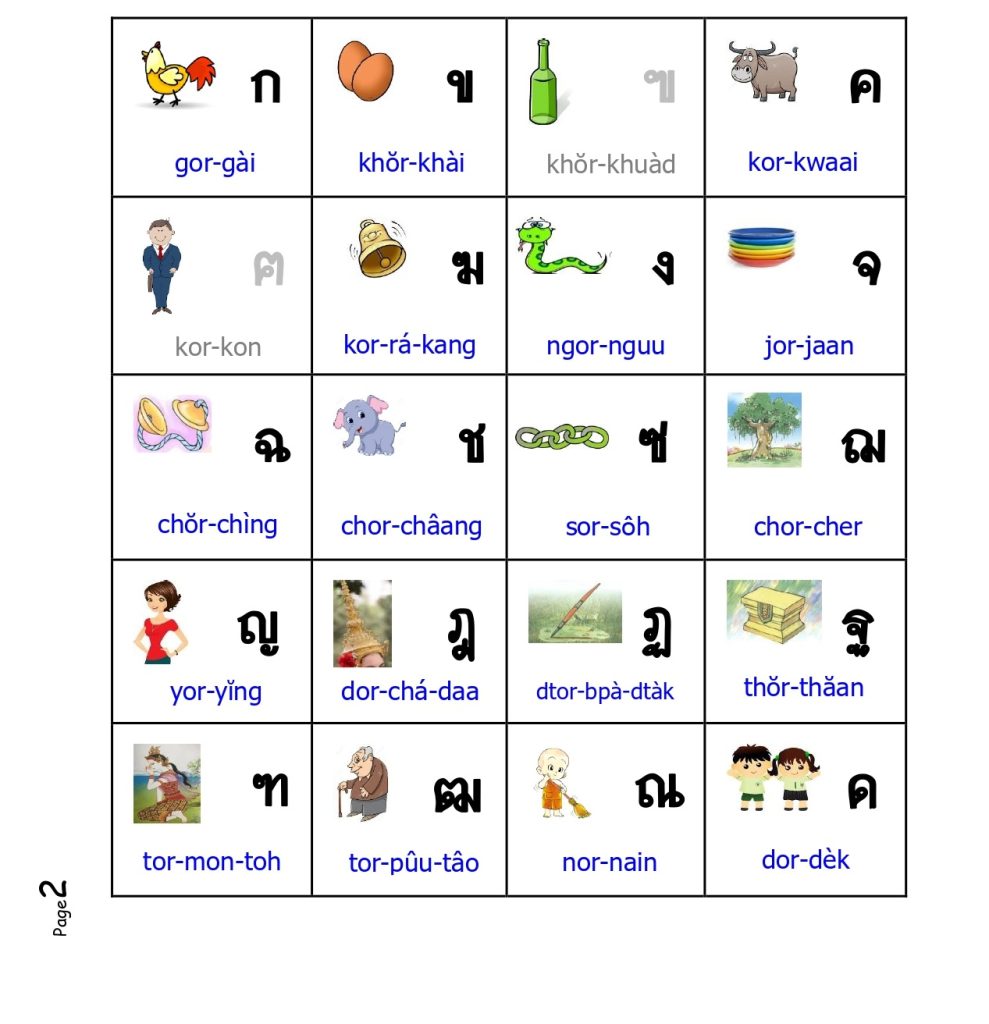
บทที่ 2
sà-rà / สระ / vowels
24 forms of Thai vowels
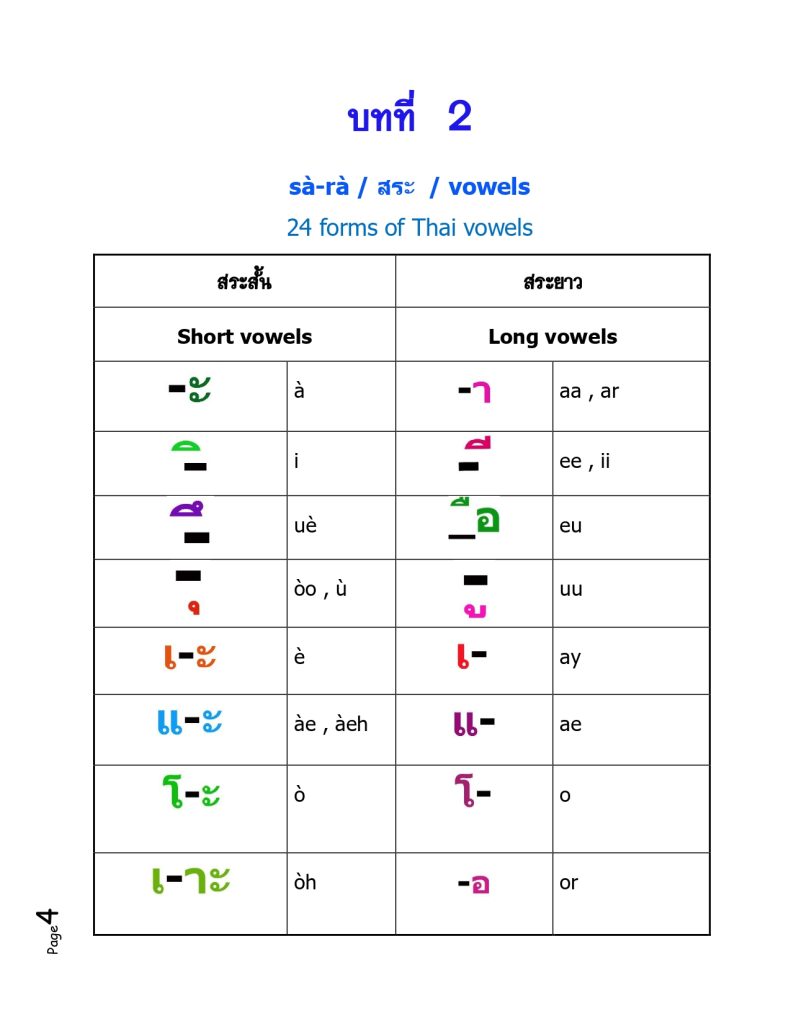
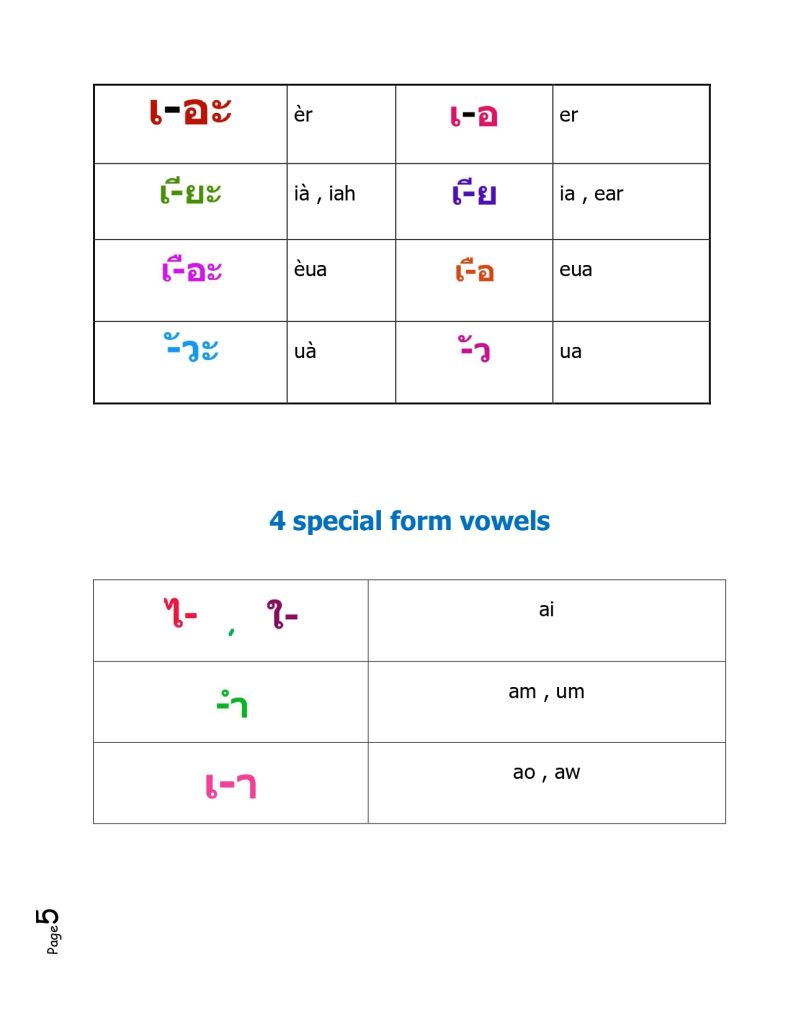
first consonants (พยัญชนะต้น)
3 group of consonants
อักษรกลาง (Middle consonants)
The basic tone is the middle tone.
ก จ ฎ ฏ ด ต บ ป อ
อักษรสูง (High consonants)
The basic tone is the rising tone.
ข ฉ ฐ ถ ผ ฝ ศ ษ ส ห
อักษรต่ำ (Low consonants)
The basic tone is the middle tone.
ค ฆ ง ช ซ ฌ ญ ฑ ฒ ณ ท
ธ น พ ฟ ภ ม ย ร ล ว ฬ ฮ
Lesson 3
combine first consonant and vowel -า
The Thai vowel “า” (sàrà aa) typically extends the sound of the vowel “a.” To combine it with a consonant, you’ll place the consonant before the vowel. For example:
ก (g) + า = กา (gaa)
ม (m) + า = มา (maa)
The vowel “า” makes the consonant sound long, so กา is pronounced like “gaa” and มา is pronounced like “maa.”
Lorem ipsum dolor sit amet, consectetur adipiscing elit. Ut elit tellus, luctus nec ullamcorper mattis, pulvinar dapibus leo.
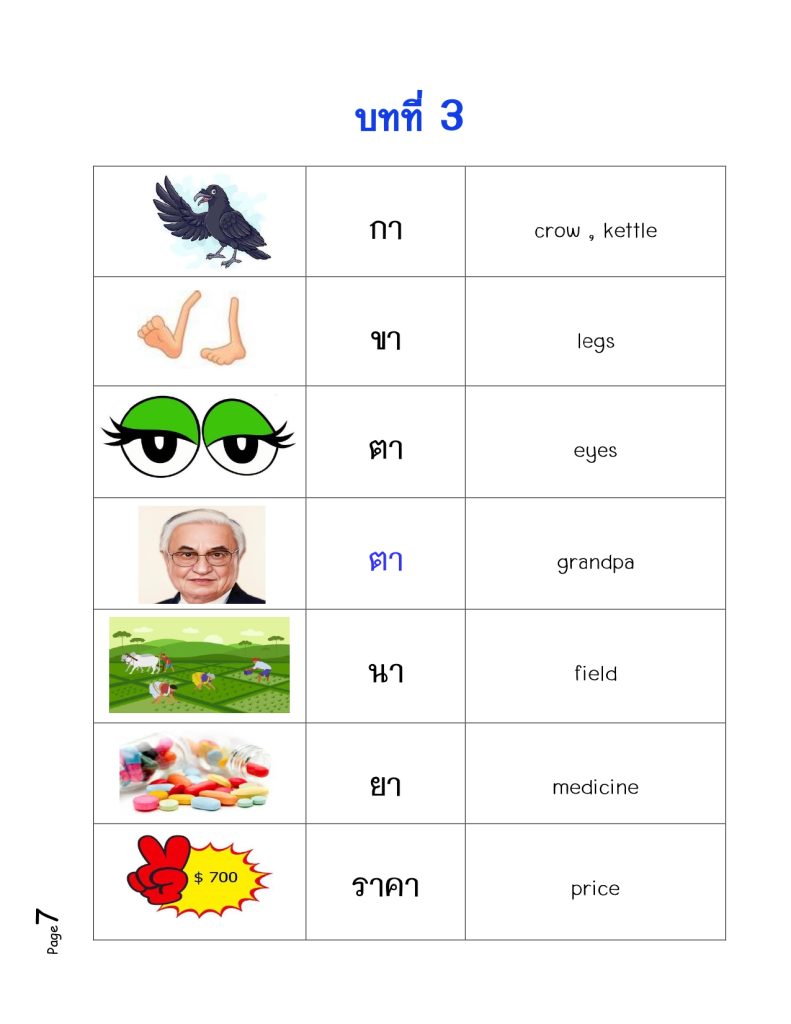

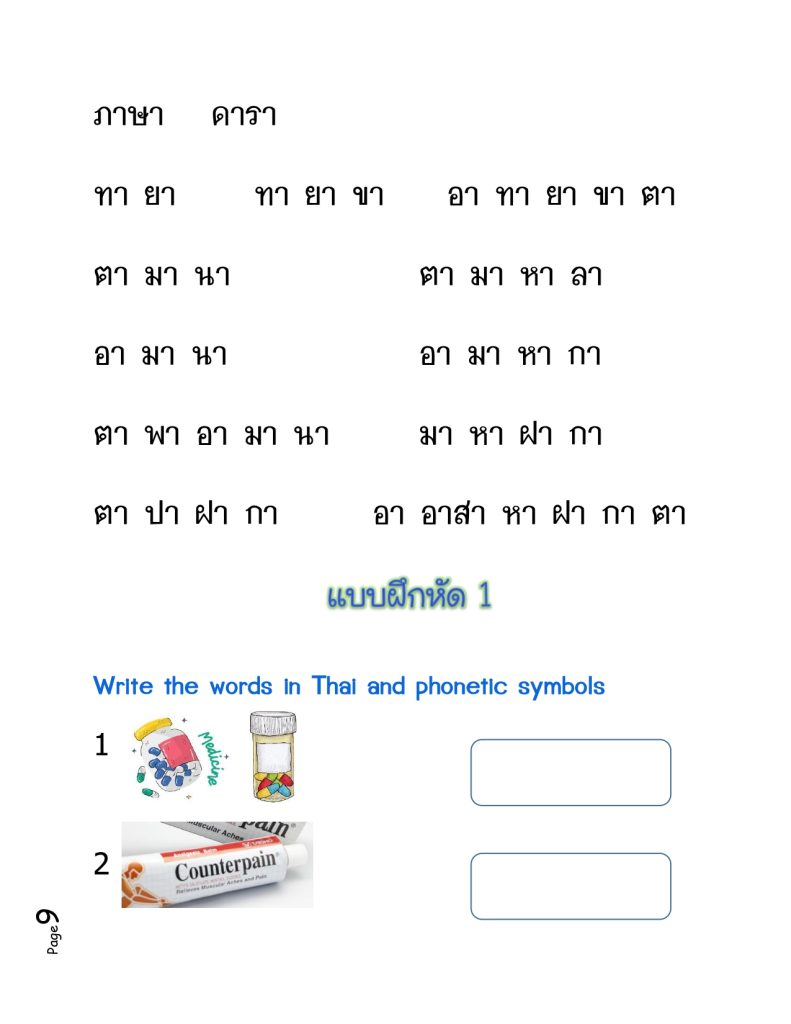
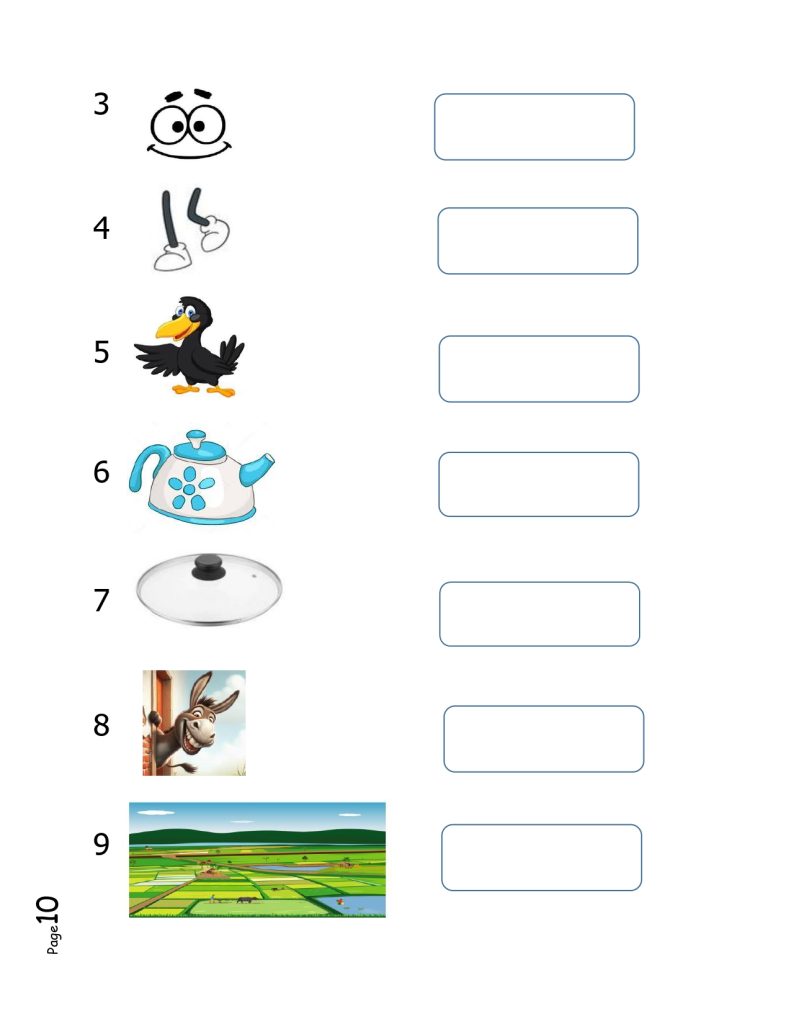

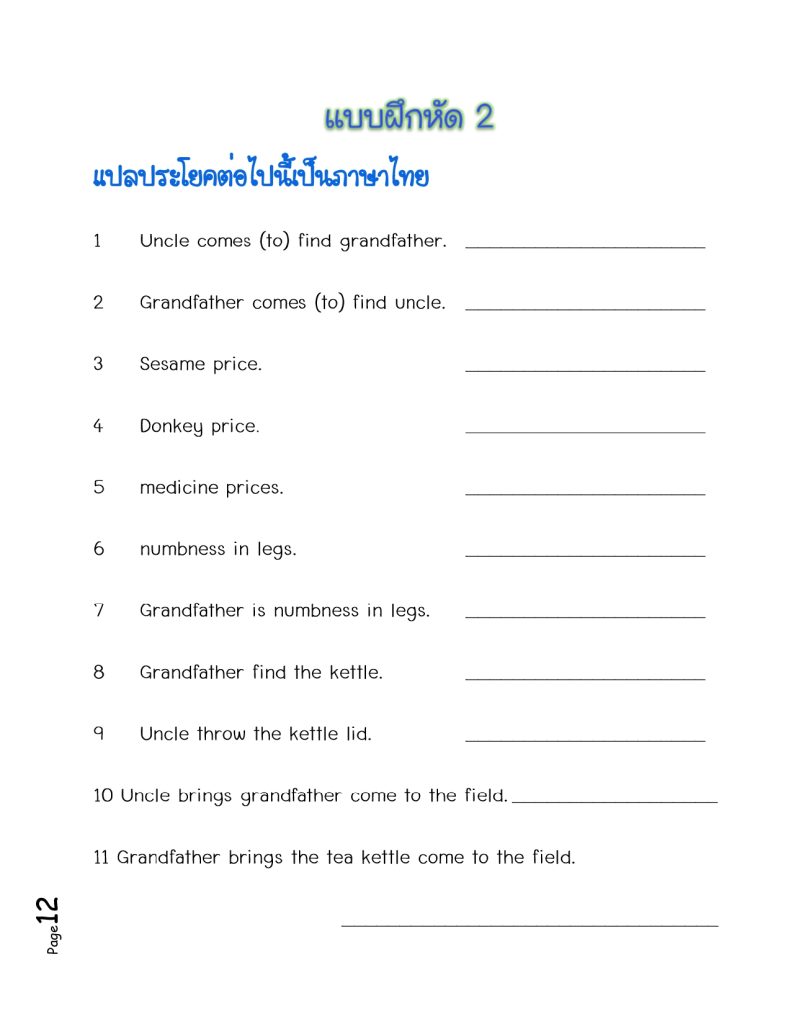
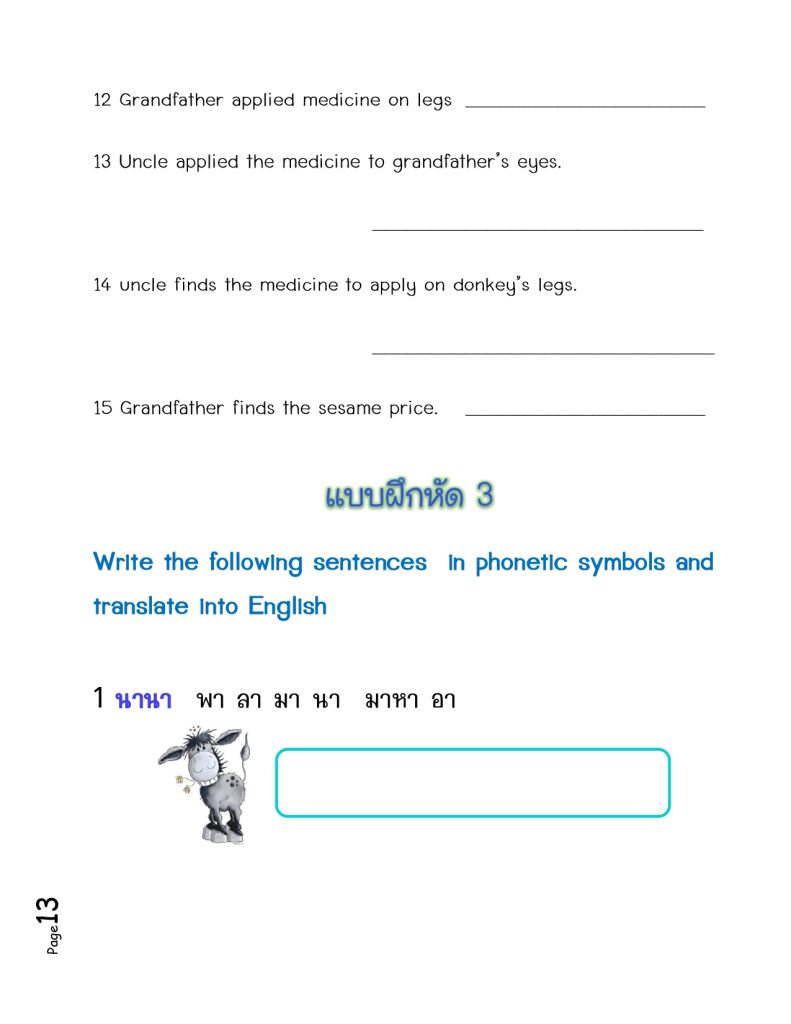
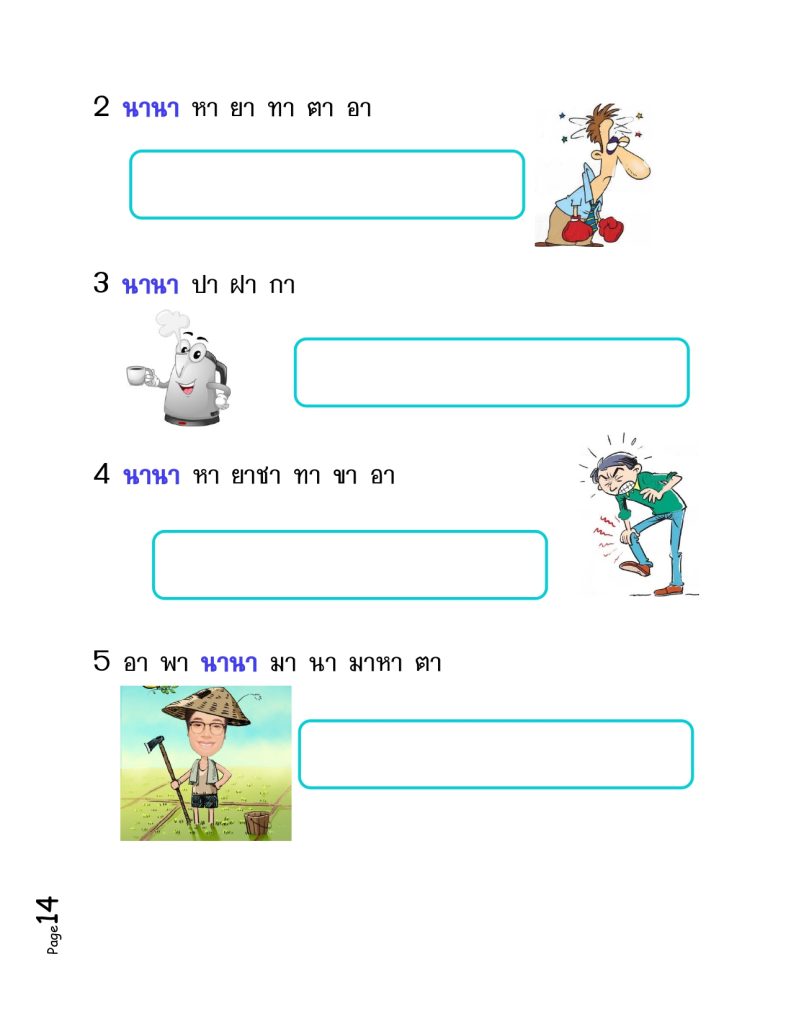
Lesson 4
การประสมอักษรต้นกับ สระ -ะ
combine first consonant and vowel -ะ
The Thai vowel “ะ” (sara à) is a short vowel that typically appears after a consonant. To combine it with a consonant, you’ll place the vowel directly after the consonant. For example:
- ก (g) + ะ = กะ (gà)
- ม (m) + ะ = มะ (má)
In these combinations, the vowel “ะ” makes the consonant sound short. So กะ is pronounced like “gà”
and มะ is pronounced like “má”
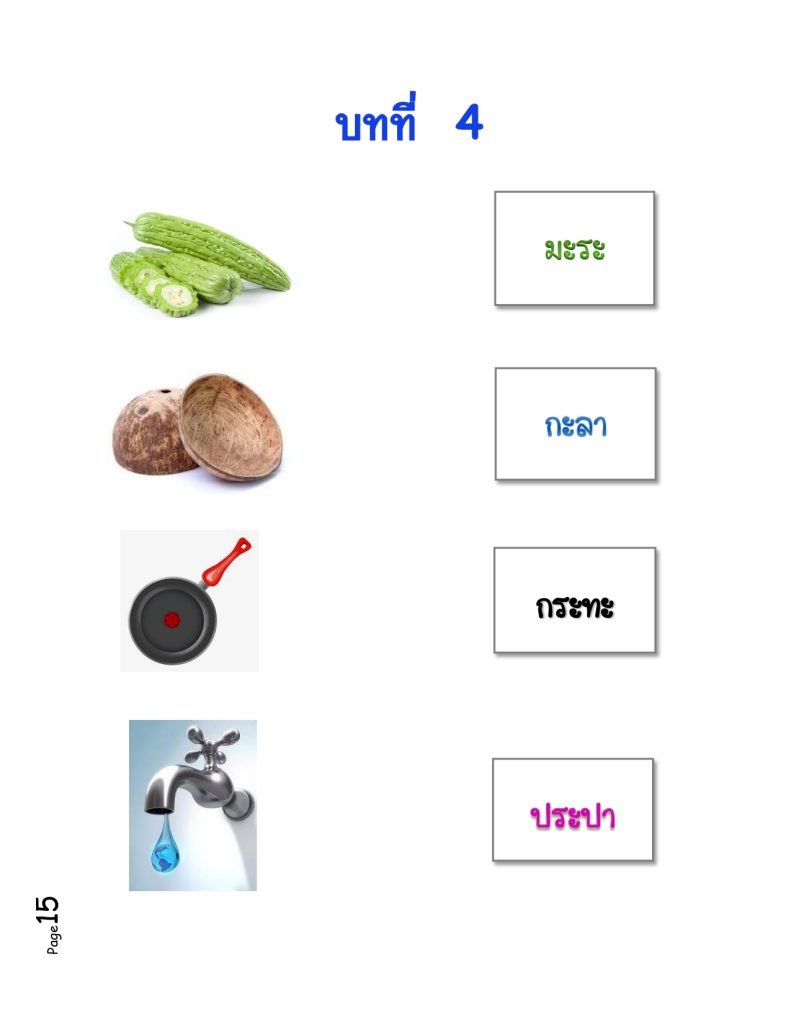
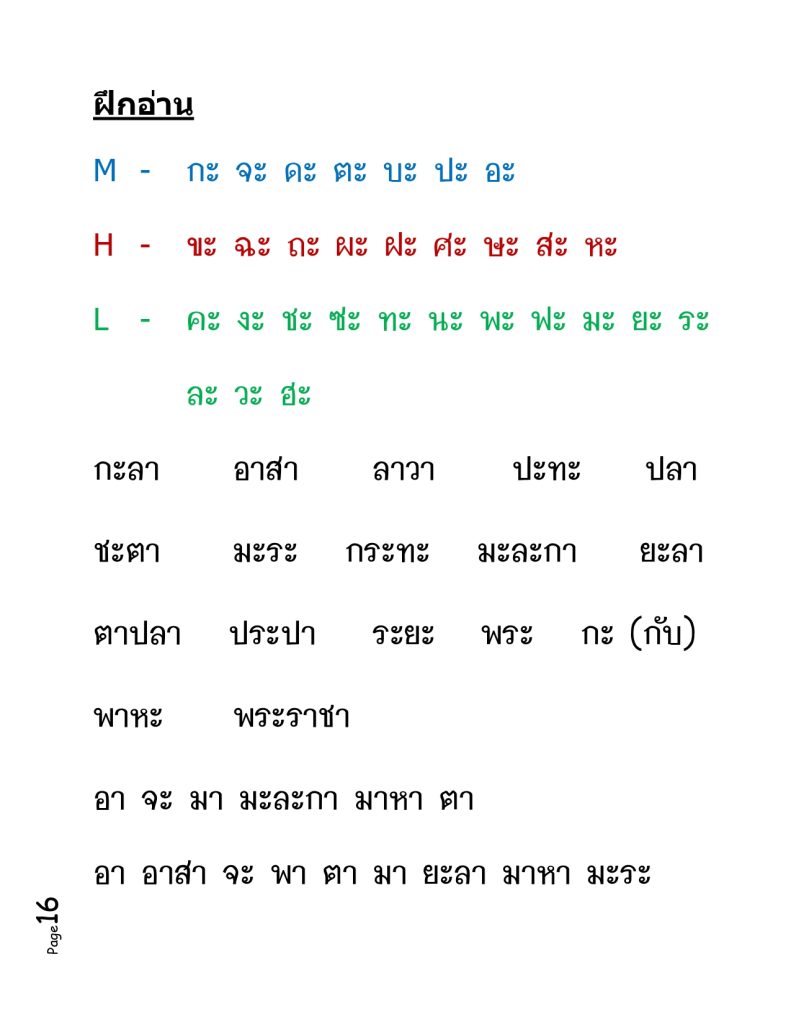

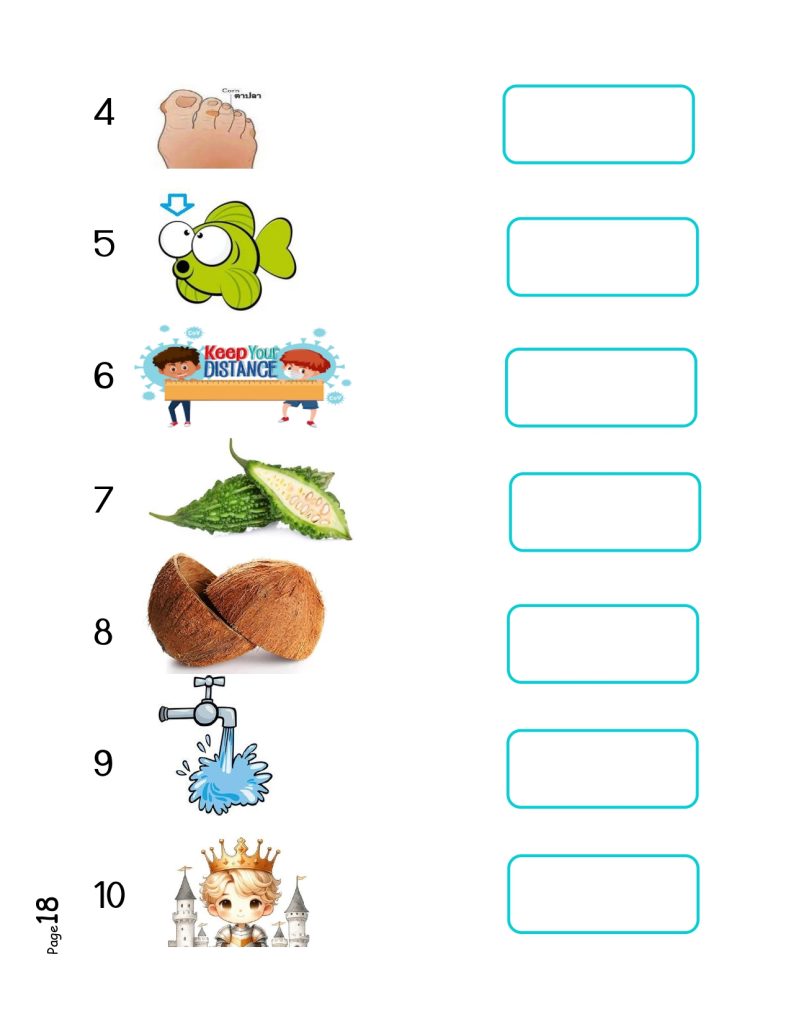
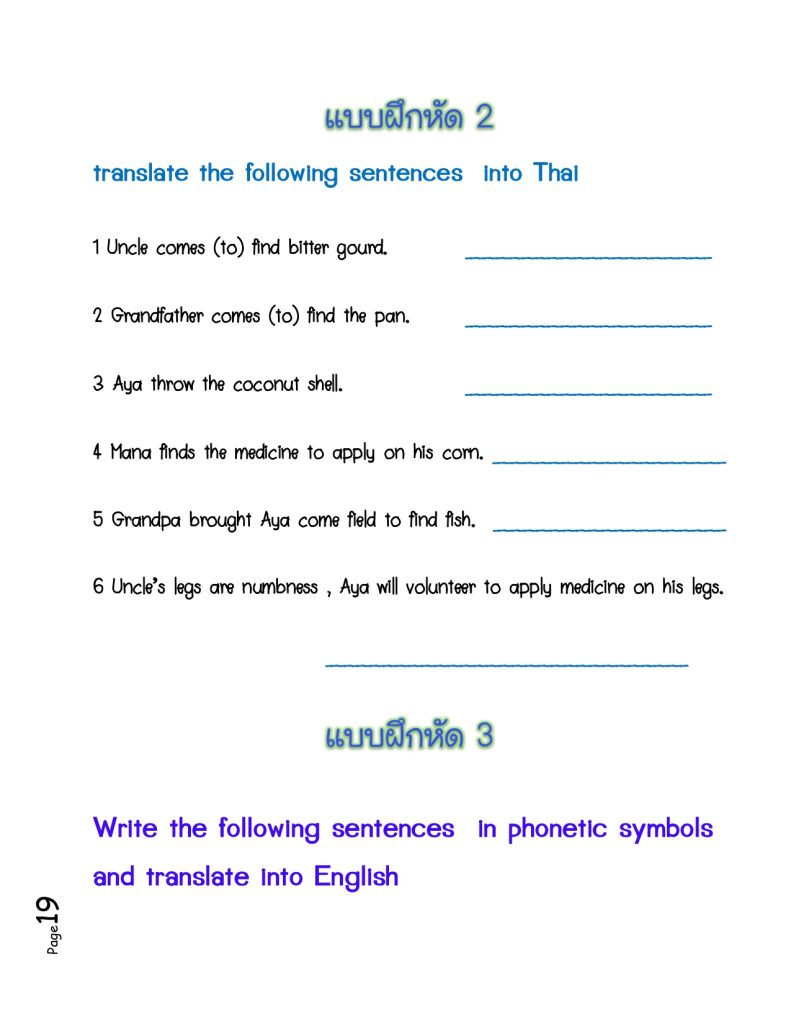
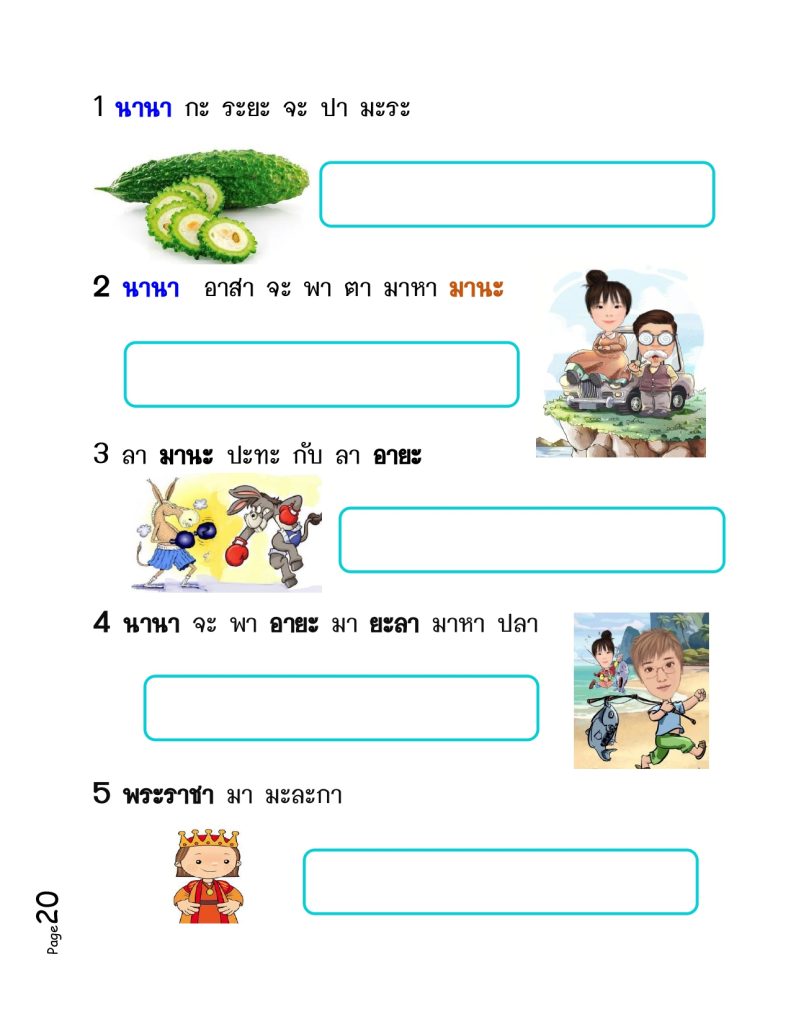
Lesson 5
The Thai vowel -ิ (sara ì)
When vowel -ิ is combined with a consonant, it is written above the consonant and creates a short “ì” sound. For example:
ก (g) + ิ = กิ (gì)
ม (m) + ิ = มิ (mí)
So the vowel -ิ modifies the consonant to produce a short “ì” sound, and it appears above the consonant in writing.
The Thai vowel – ี (sara ii)
The Thai vowel – ี (sara ii) is a long vowel that is placed above the consonant. When combined with a consonant, it creates a long “ee” sound. Here’s how it works:
ก (g) + ี = กี (gii or gee)
ม (m) + ี = มี (mii or mee)
In these combinations, the vowel – ี extends the sound of the consonant to produce a long “ee” sound. So กี is pronounced “gii” and มี is pronounced “mii.
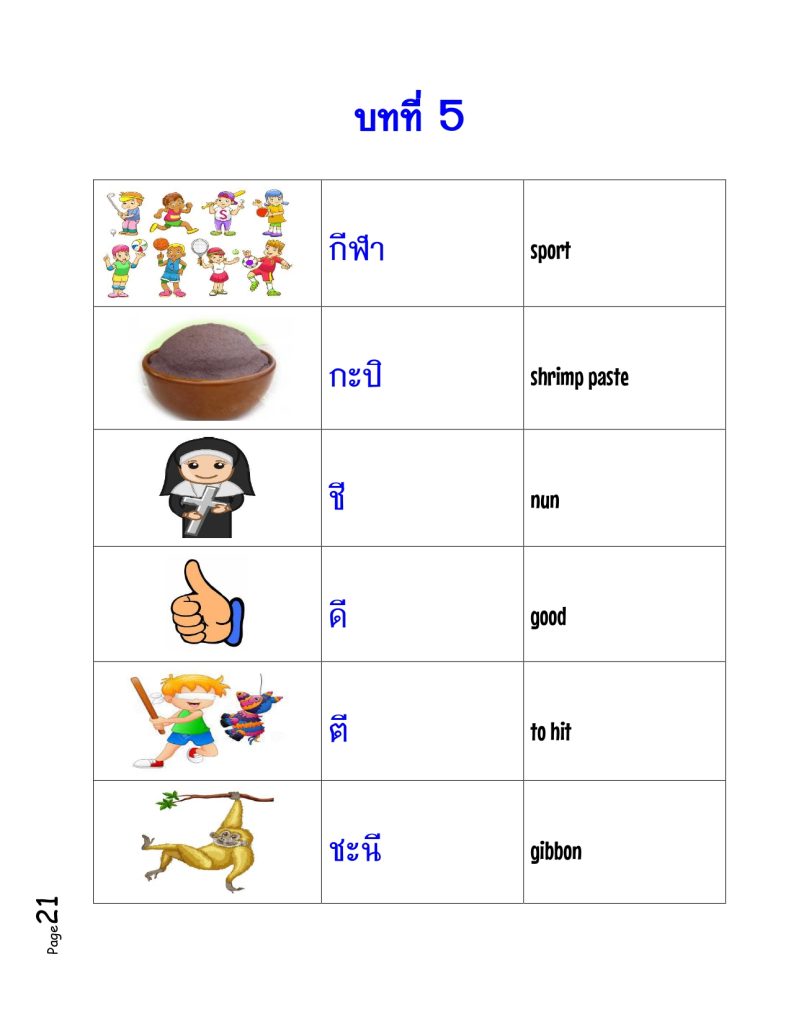
Lorem ipsum dolor sit amet, consectetur adipiscing elit. Ut elit tellus, luctus nec ullamcorper mattis, pulvinar dapibus leo.
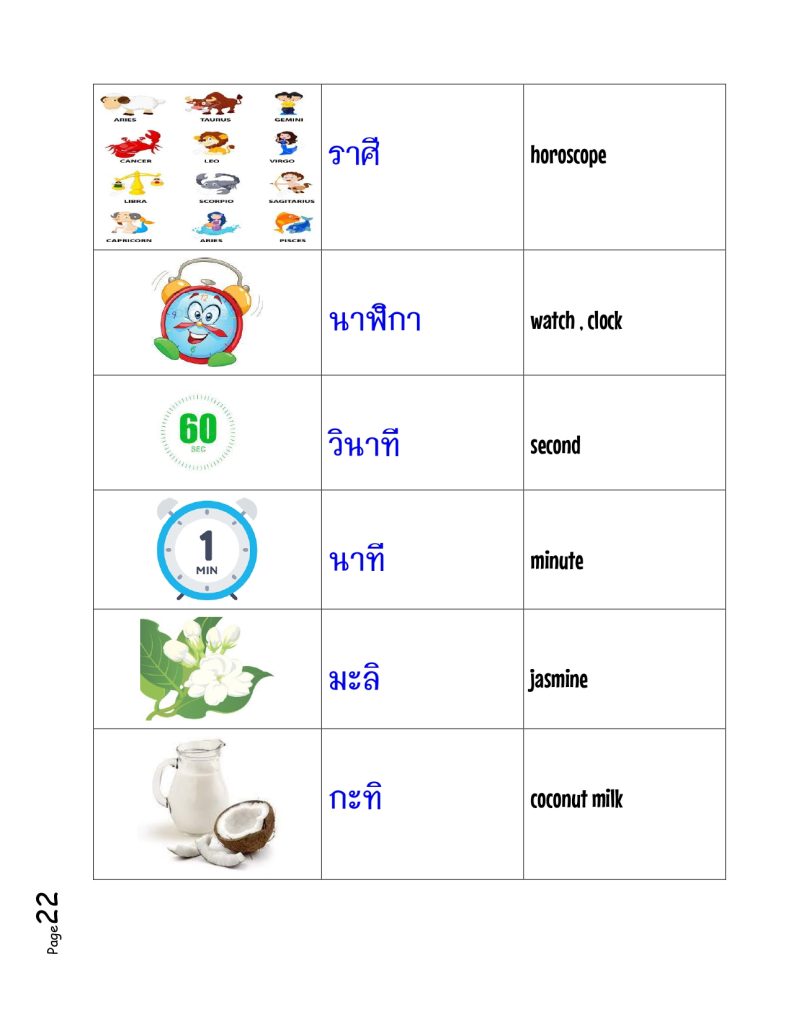
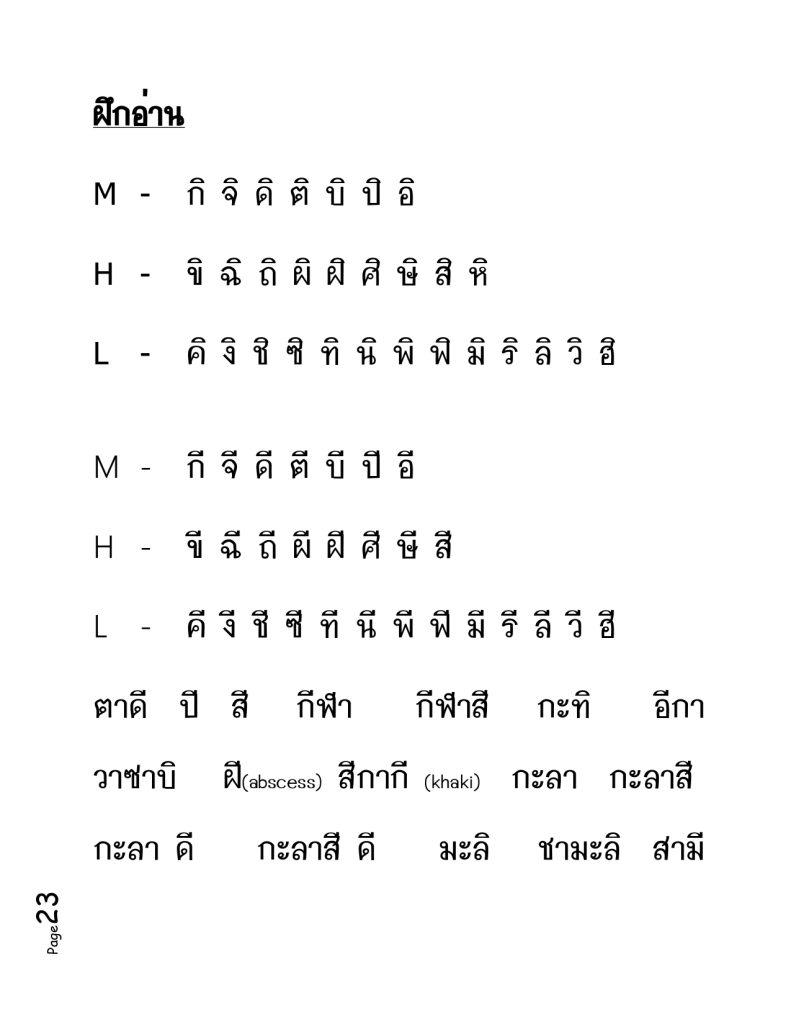
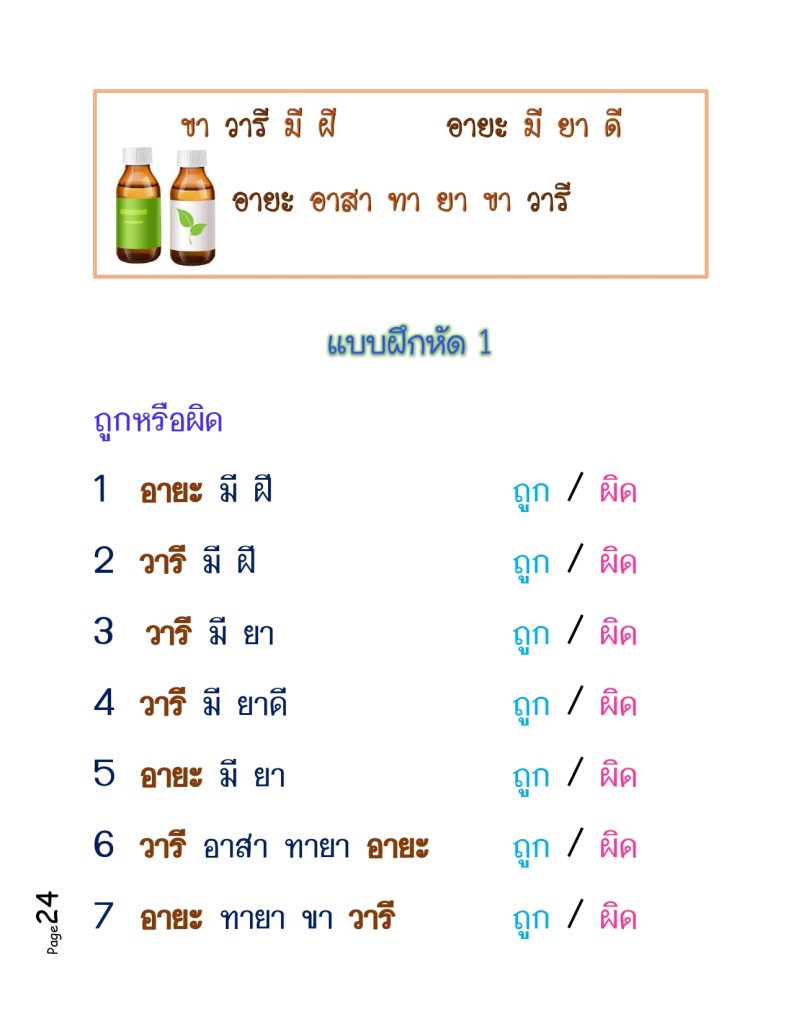
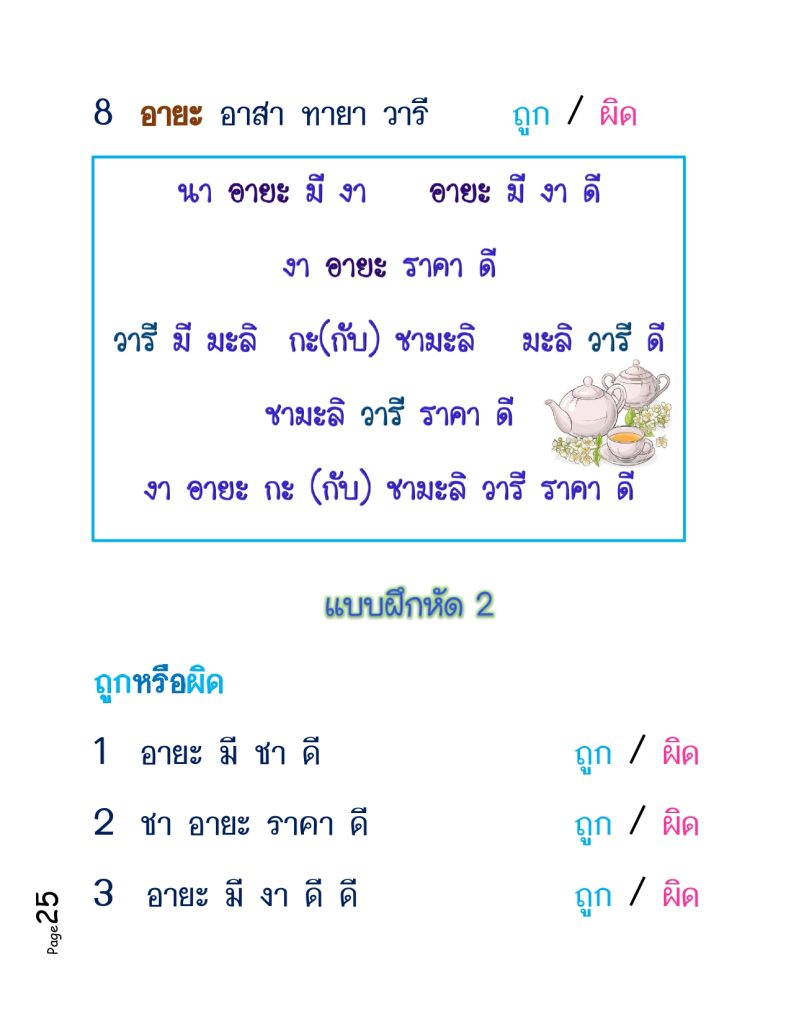
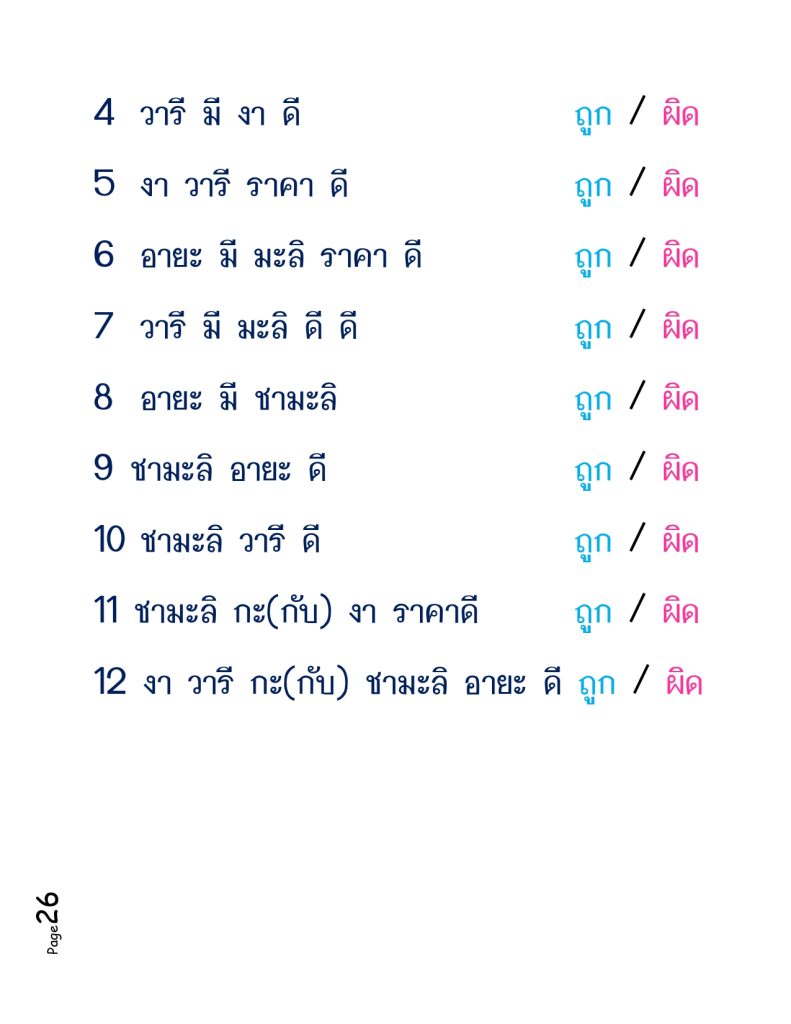
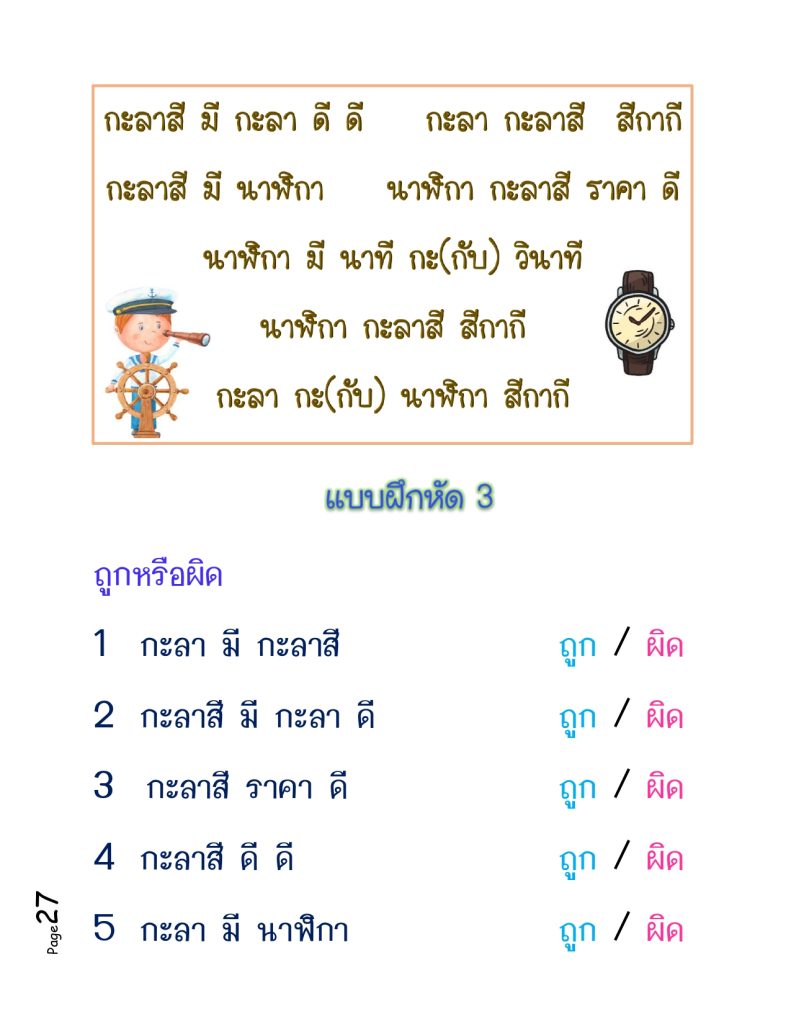
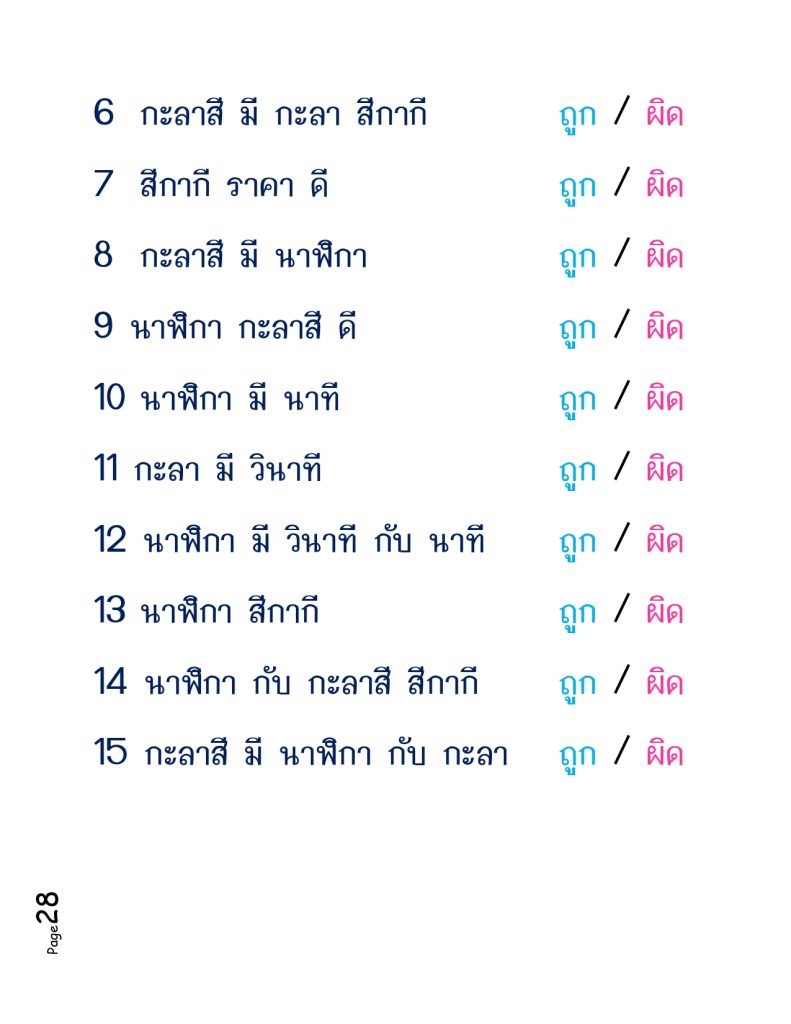
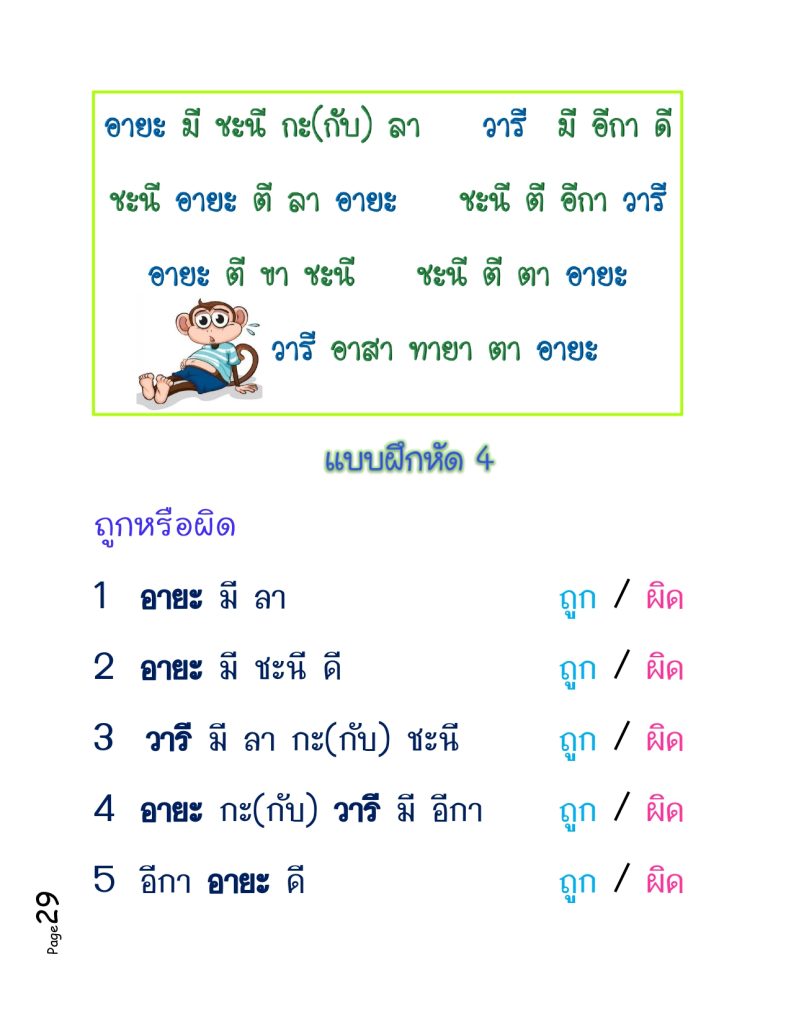
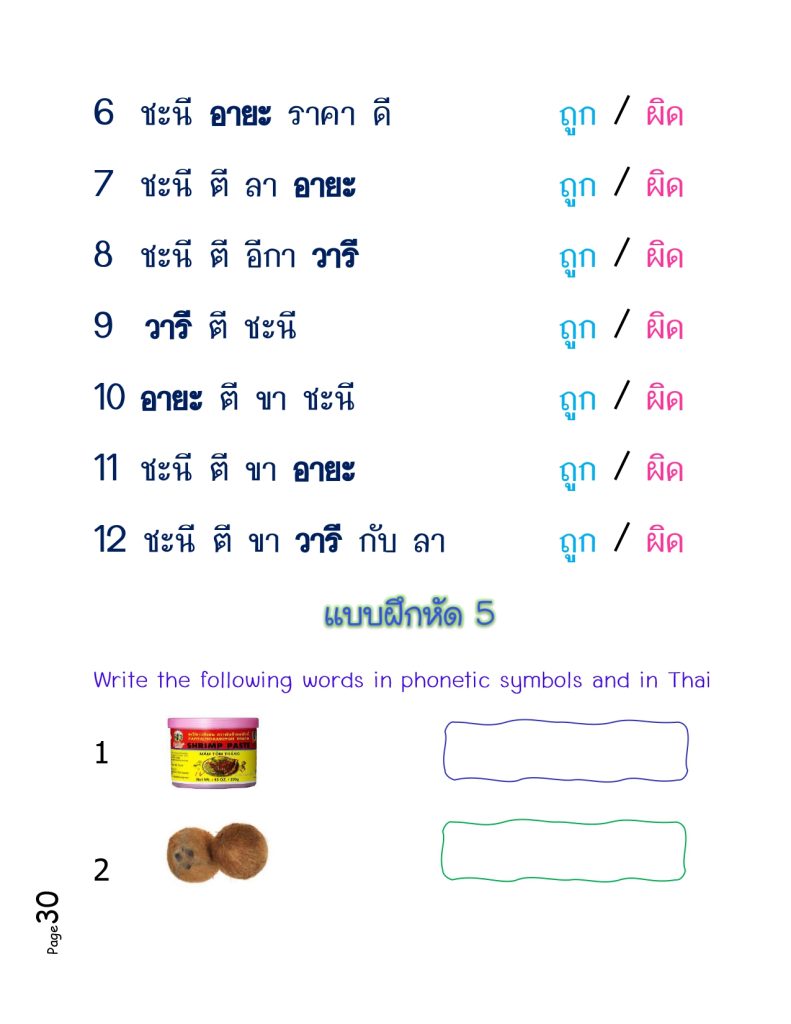
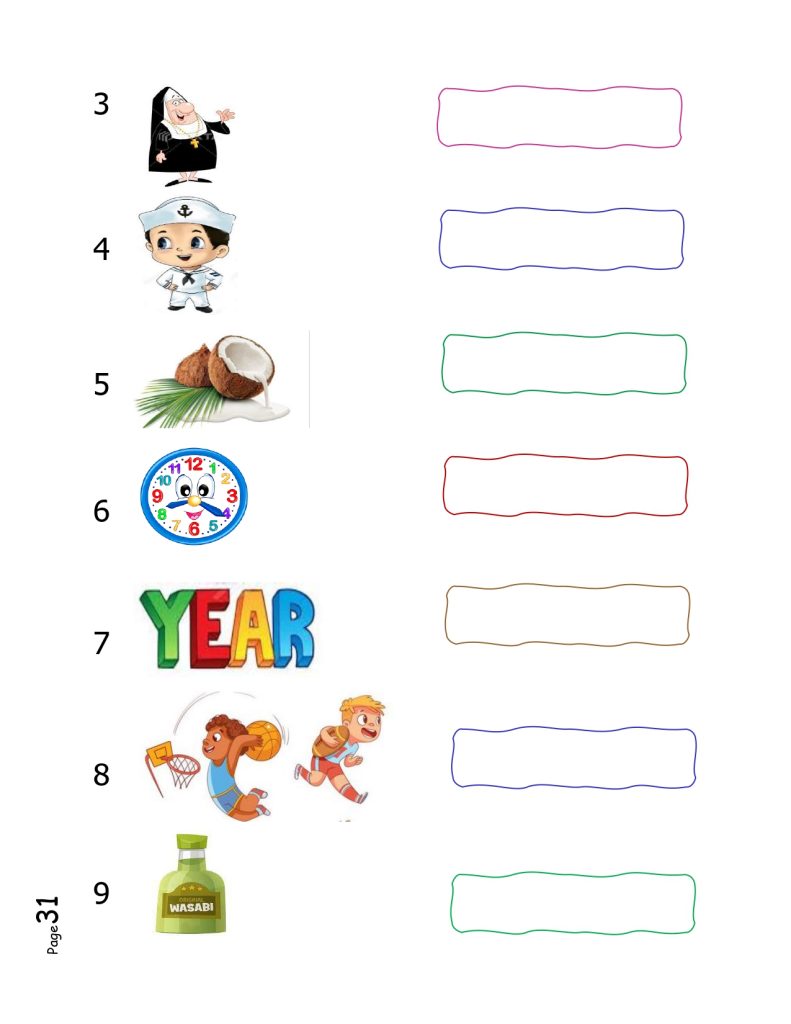
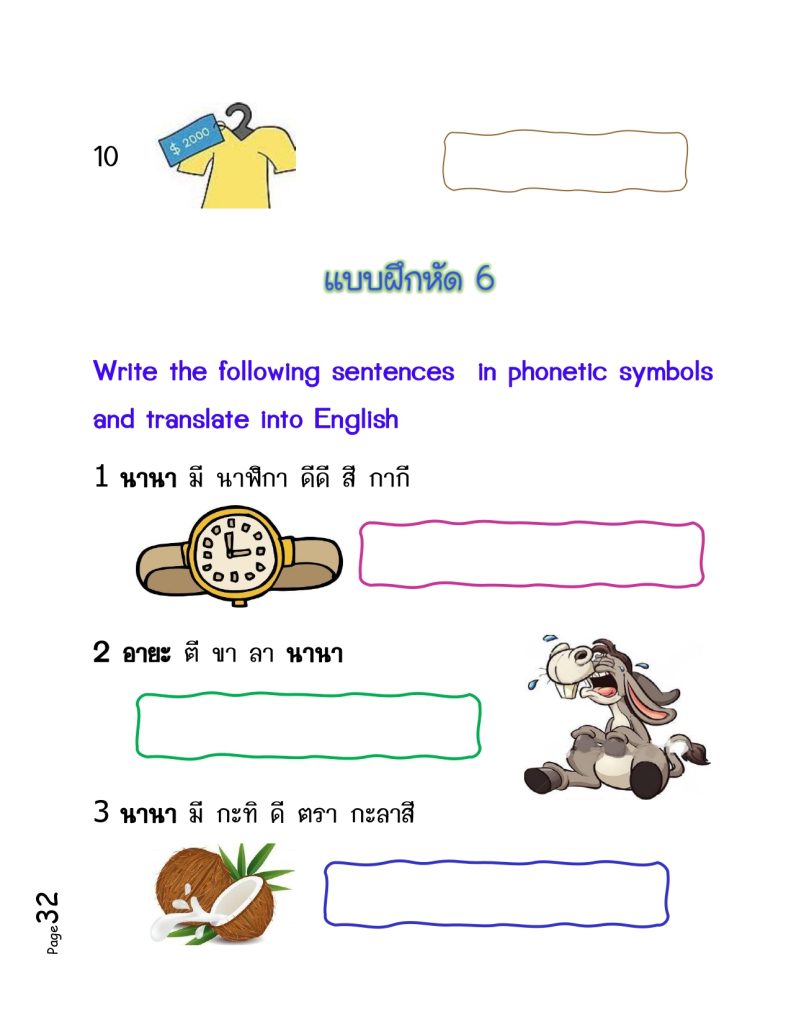
lesson 6
combine first consonant with vowel -ึ
The Thai vowel -ึ (sara ùe) is a short vowel that is placed above the consonant. Here’s how it combines with a consonant:
ก (g) + ึ = กึ (gùe)
คึ (m) + ึ = คึ (kúe)
combine first consonant with vowel -ื
The Thai vowel – ื (sara ue) is a long vowel that is placed above the consonant. It creates a sound similar to the – ึ”ùe” but with a longer duration. Here’s how it combines with a consonant:
ก (g) + ื = กือ (gue)
ม (m) + ื = มือ (mue)
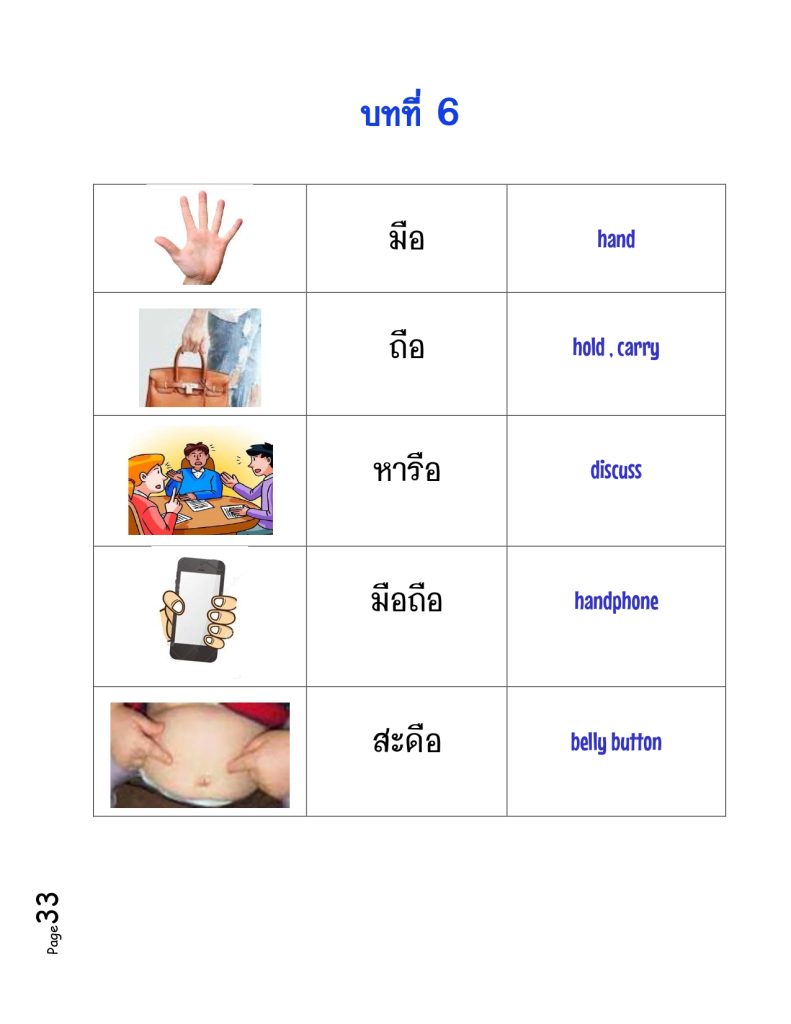
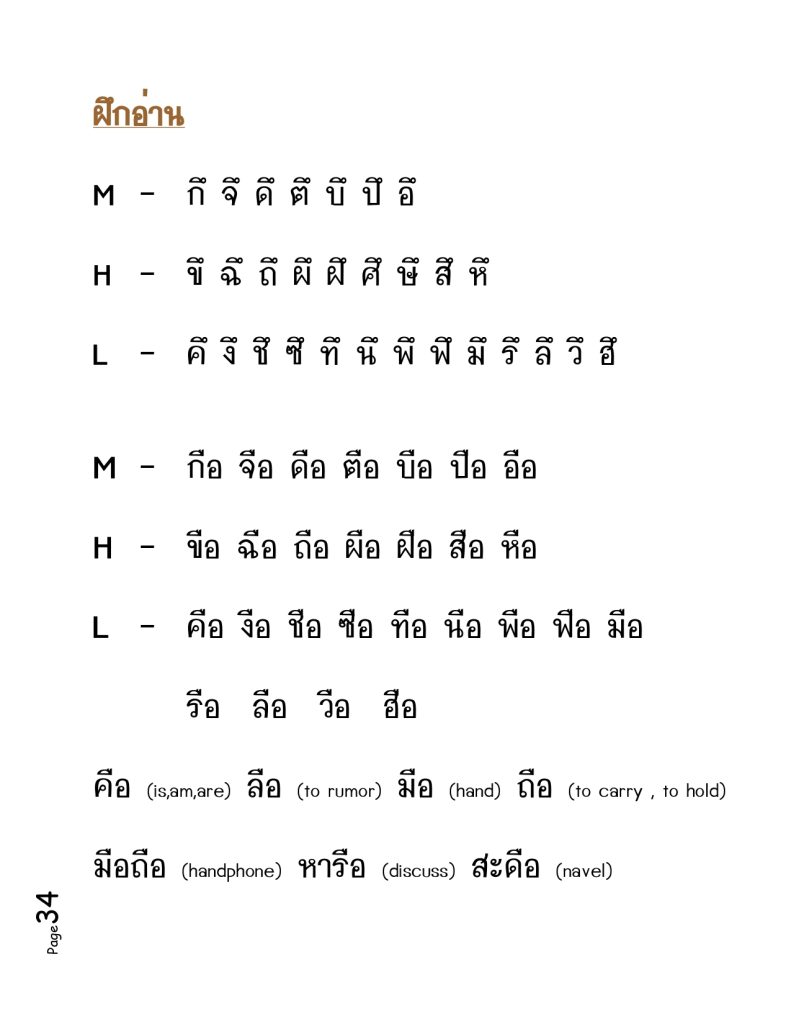
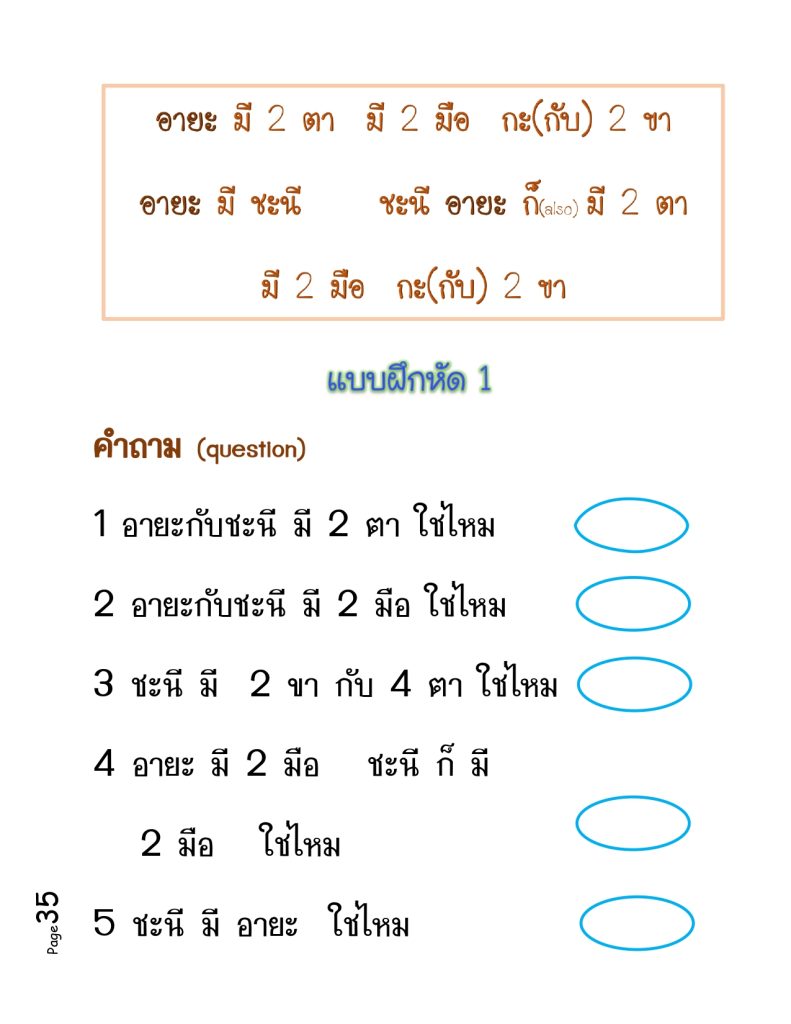
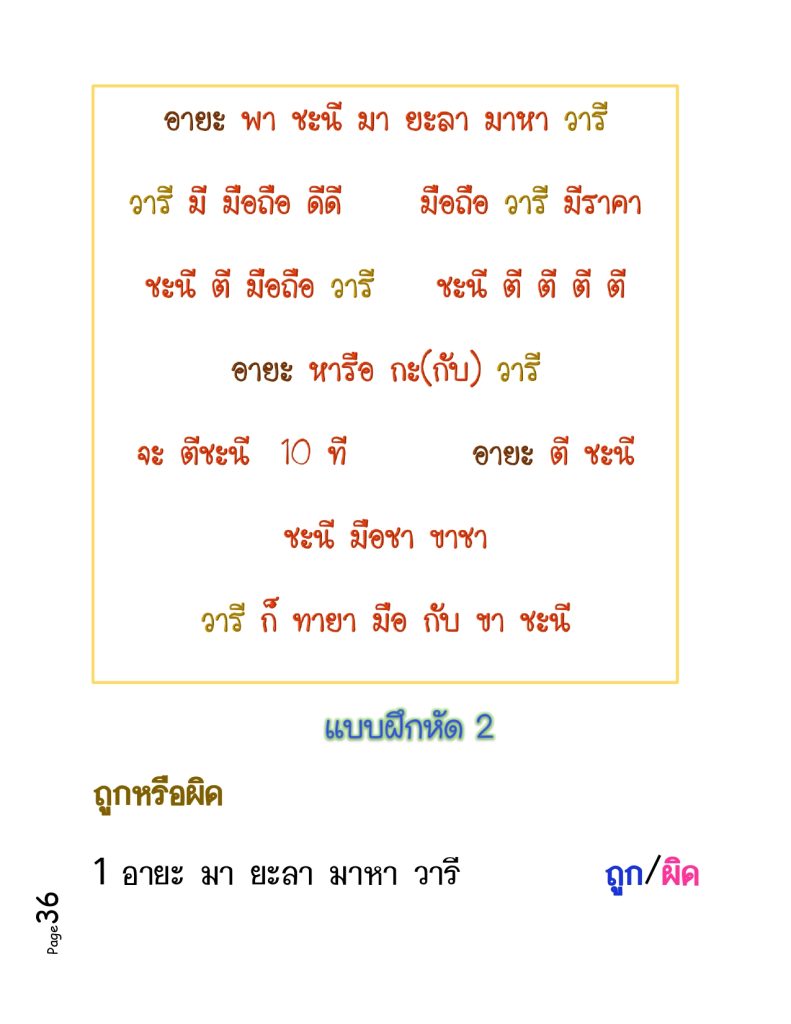
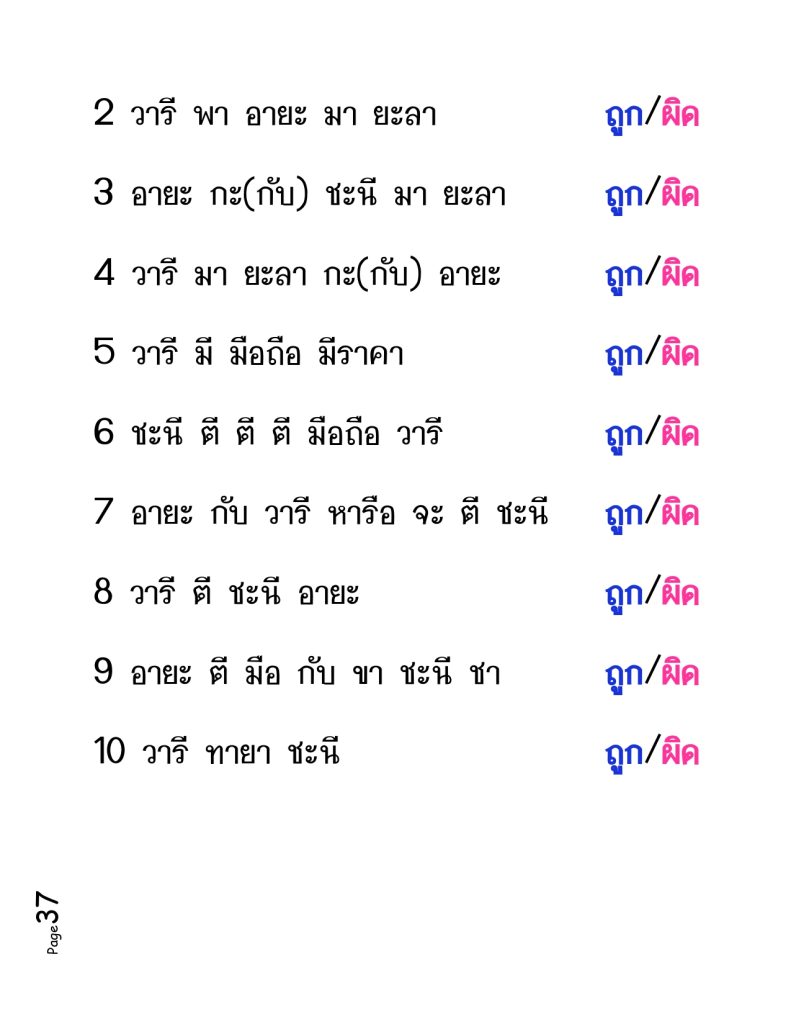
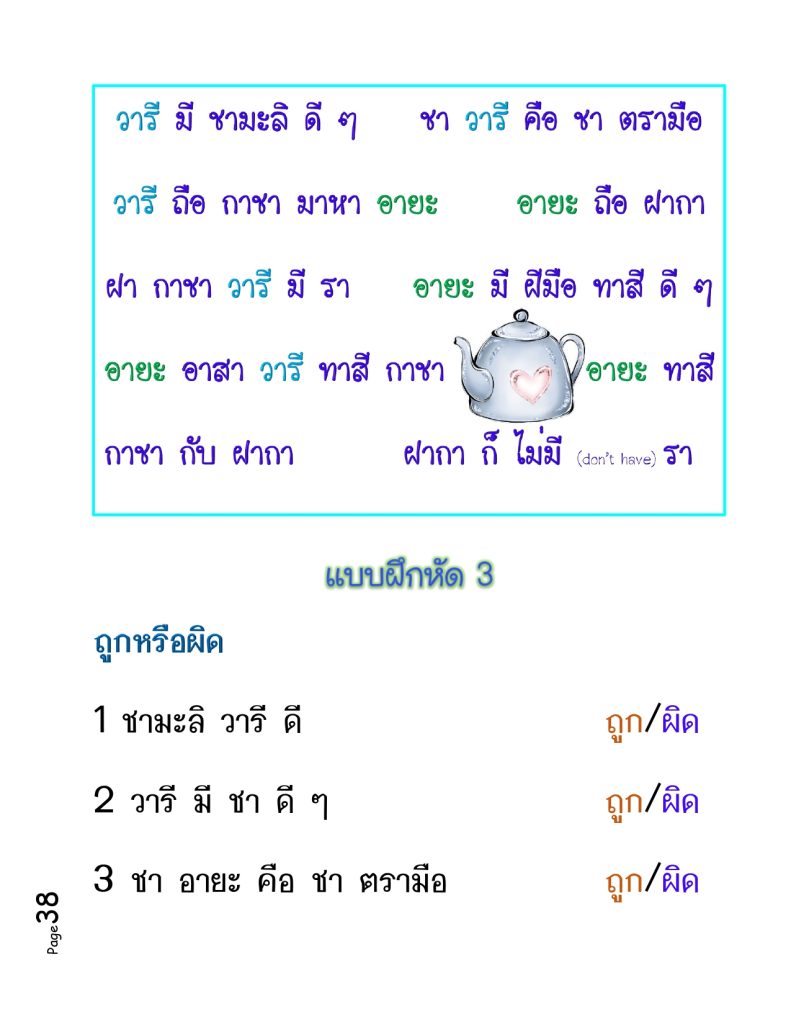


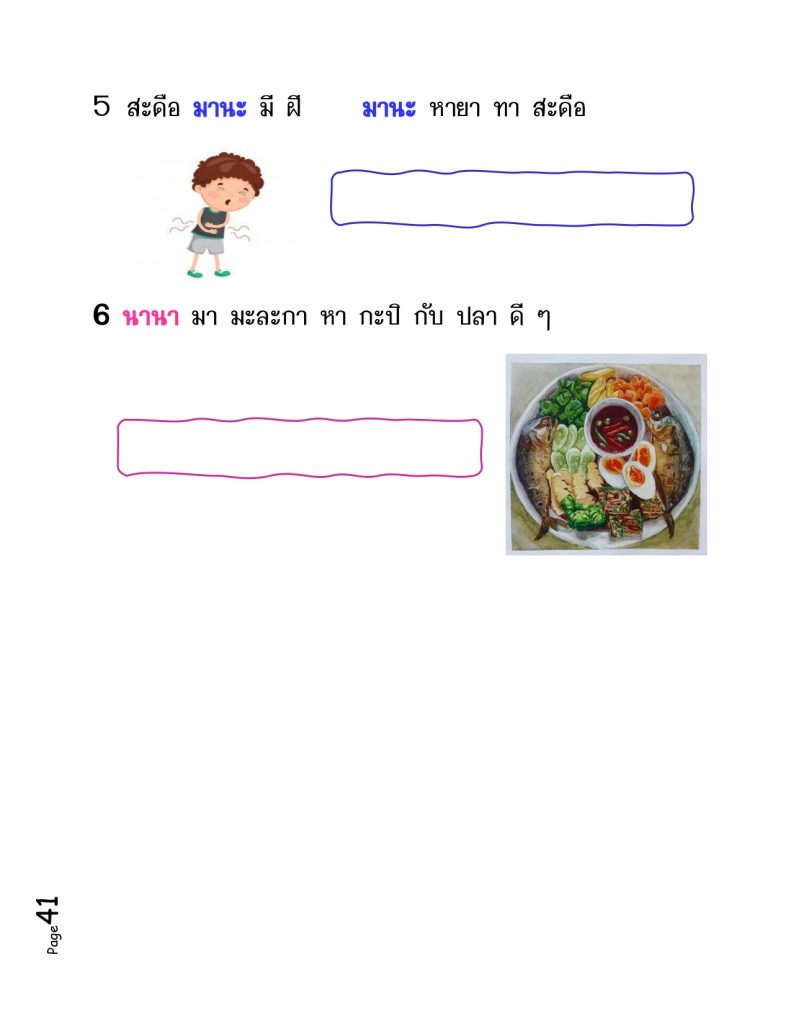
Lesson 7
combine first consonant with vowel -ุ
The Thai vowel – ุ (sara ù) is a short vowel that is placed below the consonant. It creates a short “u” sound, similar to the “u” Here’s how it combines with a consonant:
ก (g) + ุ = กุ (gù)
ม (m) + ุ = มุ (mú)
In these combinations, the vowel “ุ” gives the consonant a short “u” sound. So กุ is pronounced “gu” and มุ is pronounced “mu.
combine first consonant with vowel -ู
The Thai vowel “ู” (sara uu) is a long vowel that is placed below the consonant. It creates a long “uu” sound, similar to the “oo” in “moon.” Here’s how it combines with a consonant:
ด (g) + ู = ดู (duu or Doo)
ม (m) + ู = มู (muu or moo)
In these combinations, the vowel “ู” extends the vowel sound to be long. So ดู is pronounced “doo” and มู is pronounced “moo
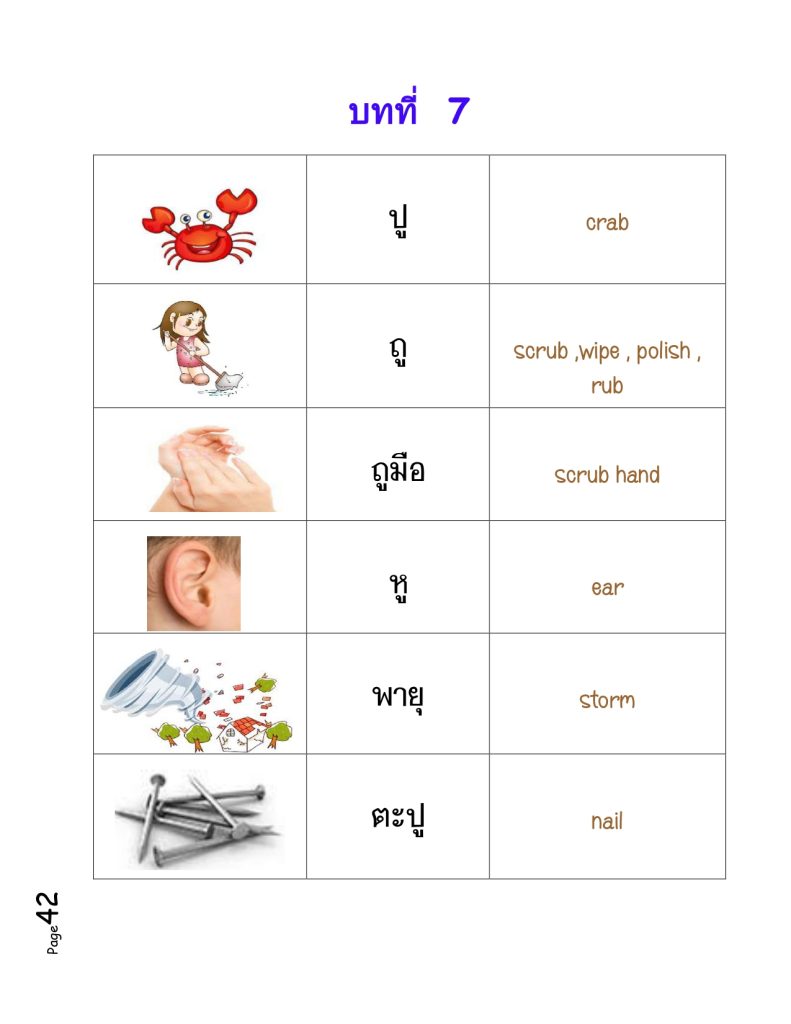
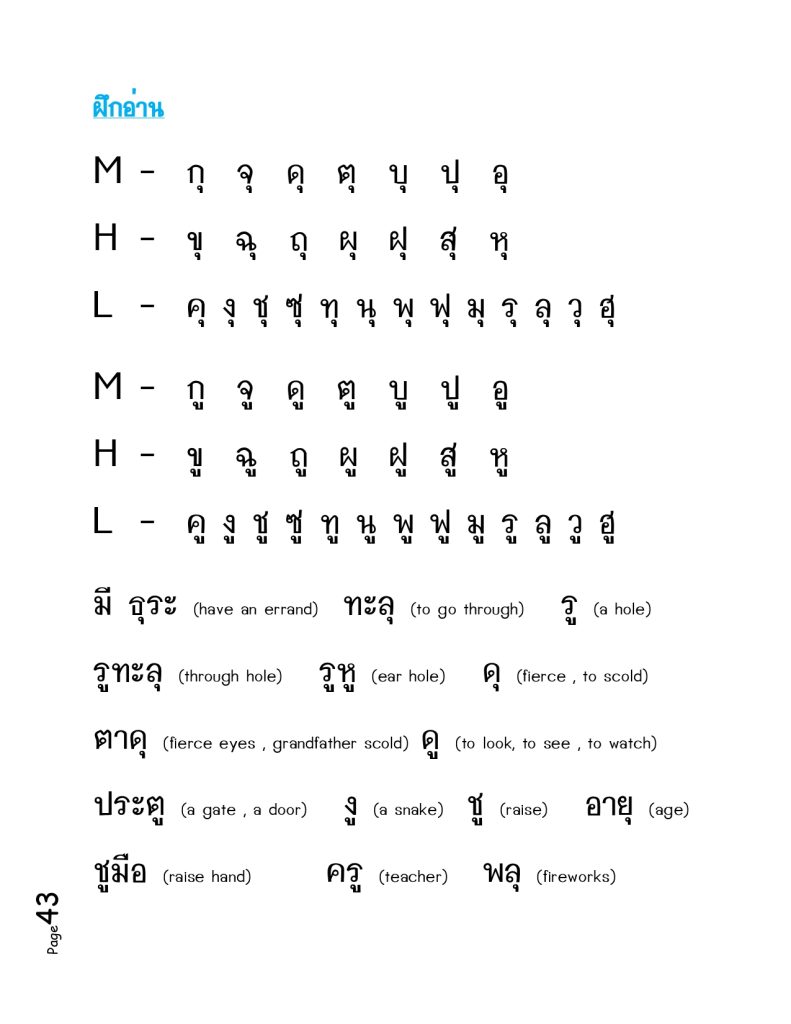
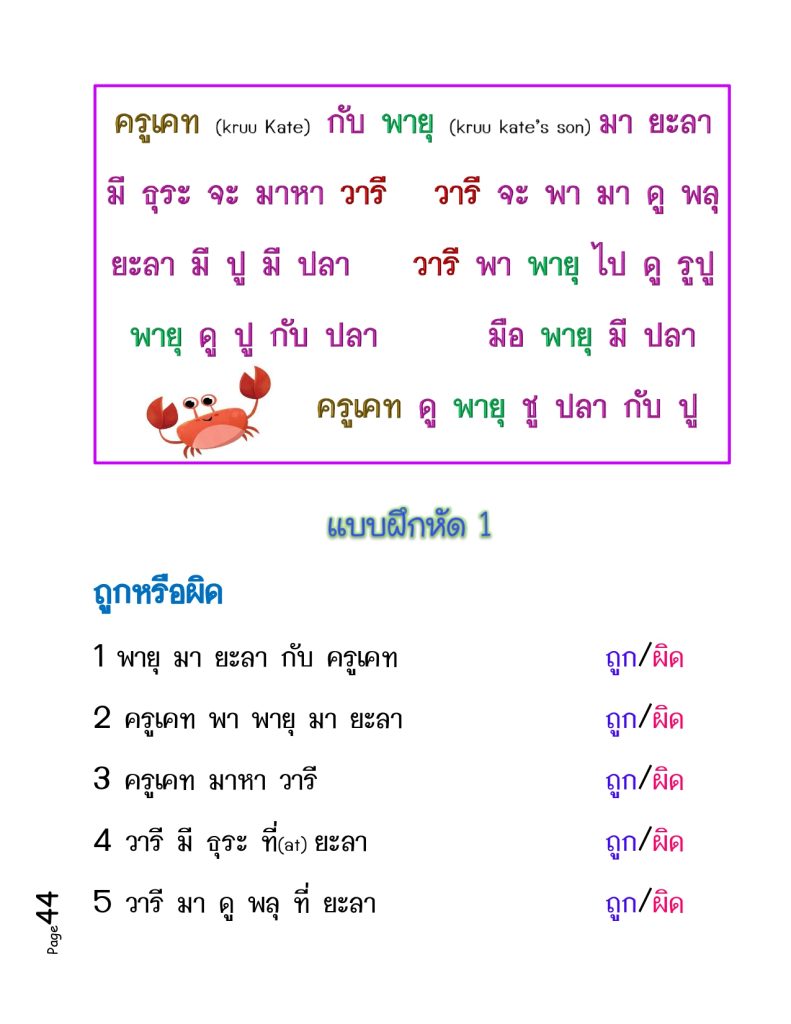
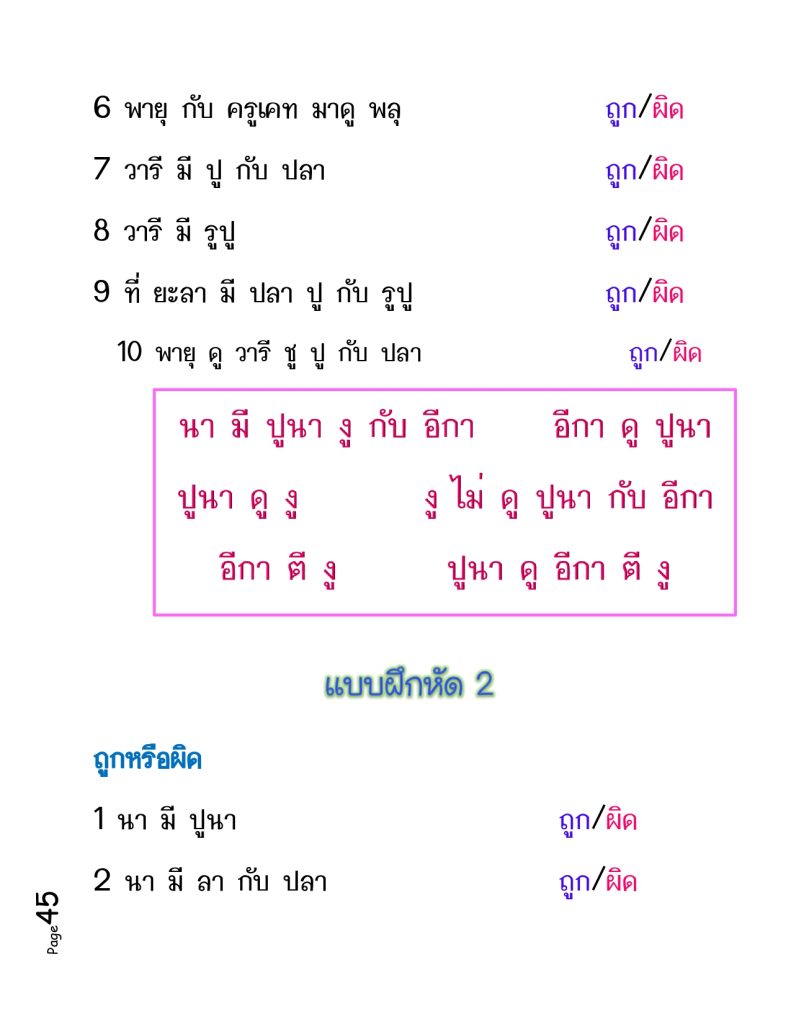
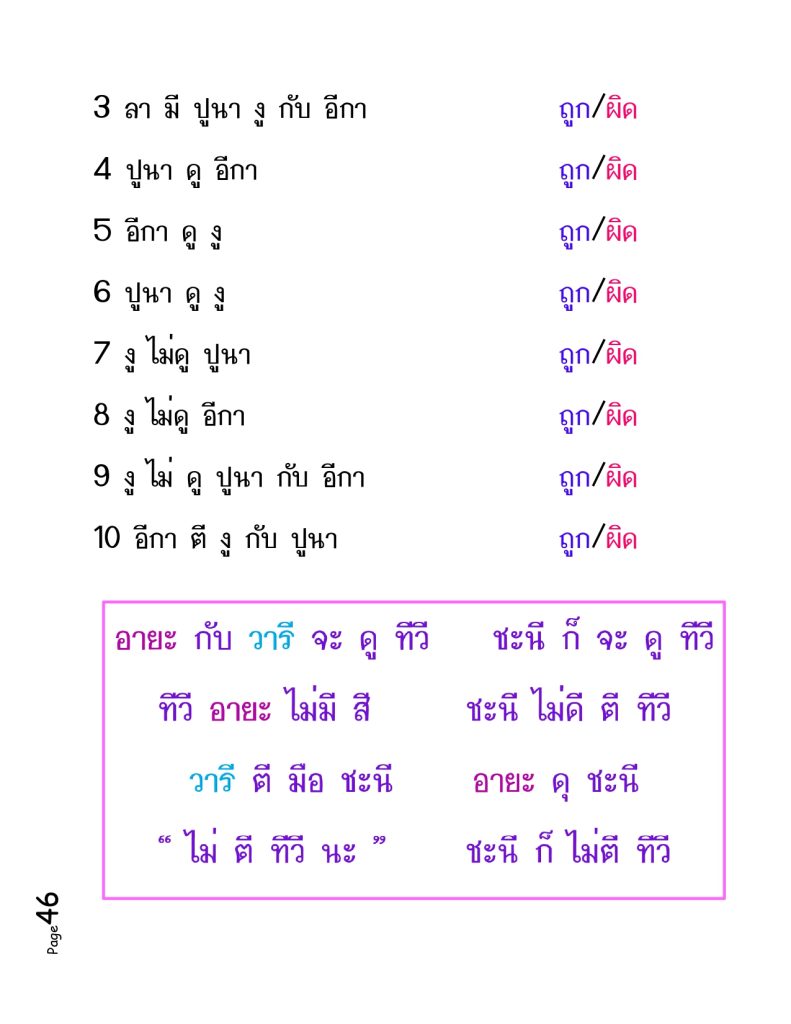
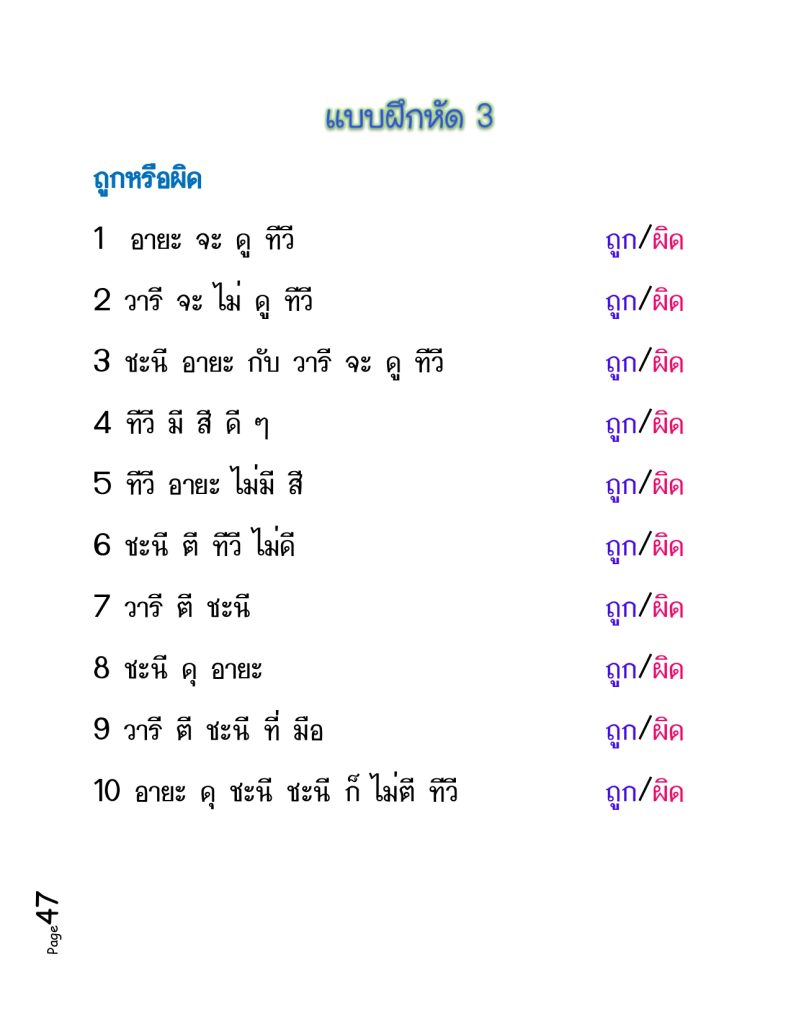
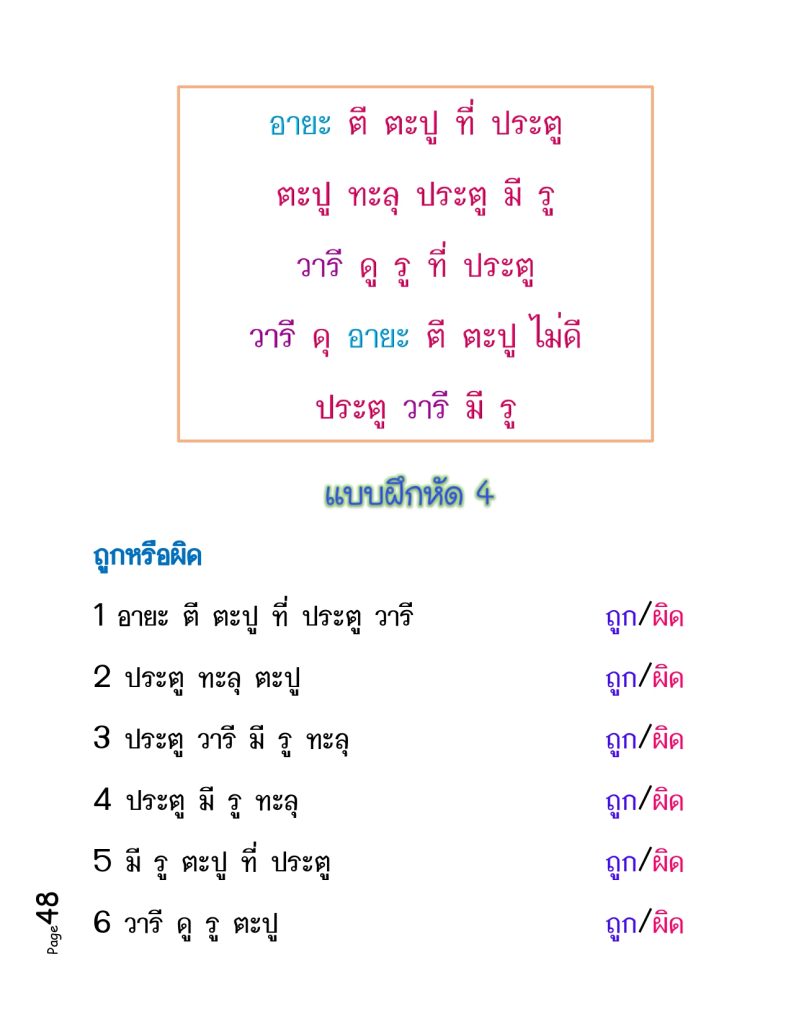
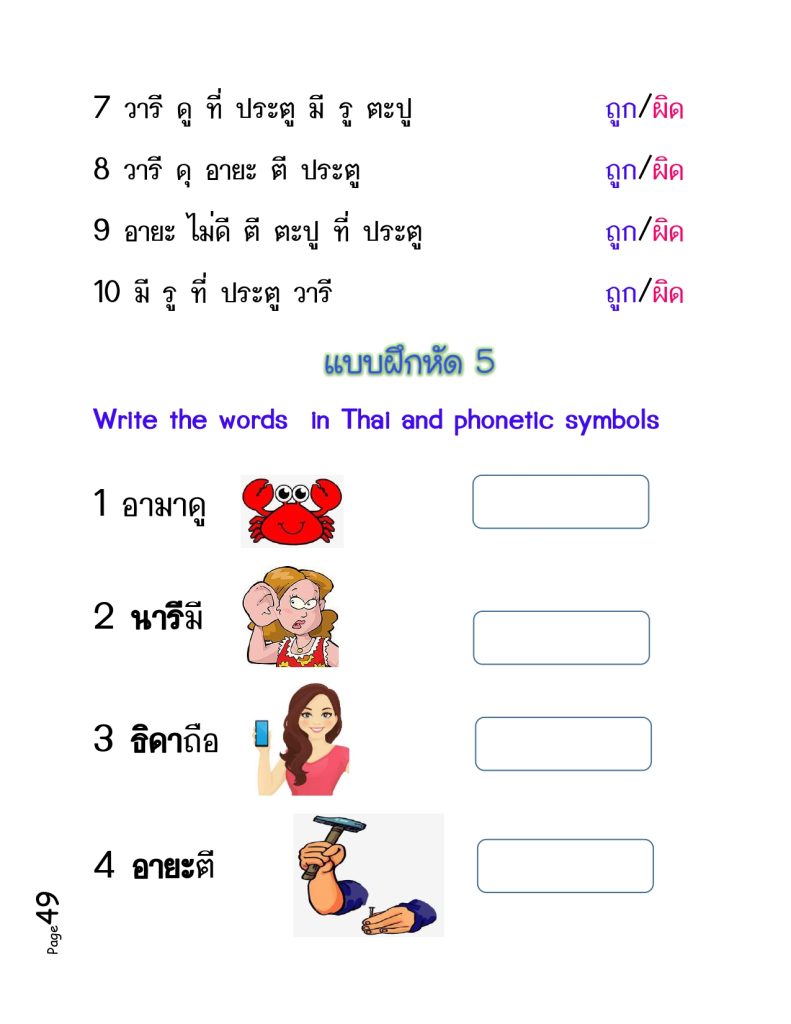
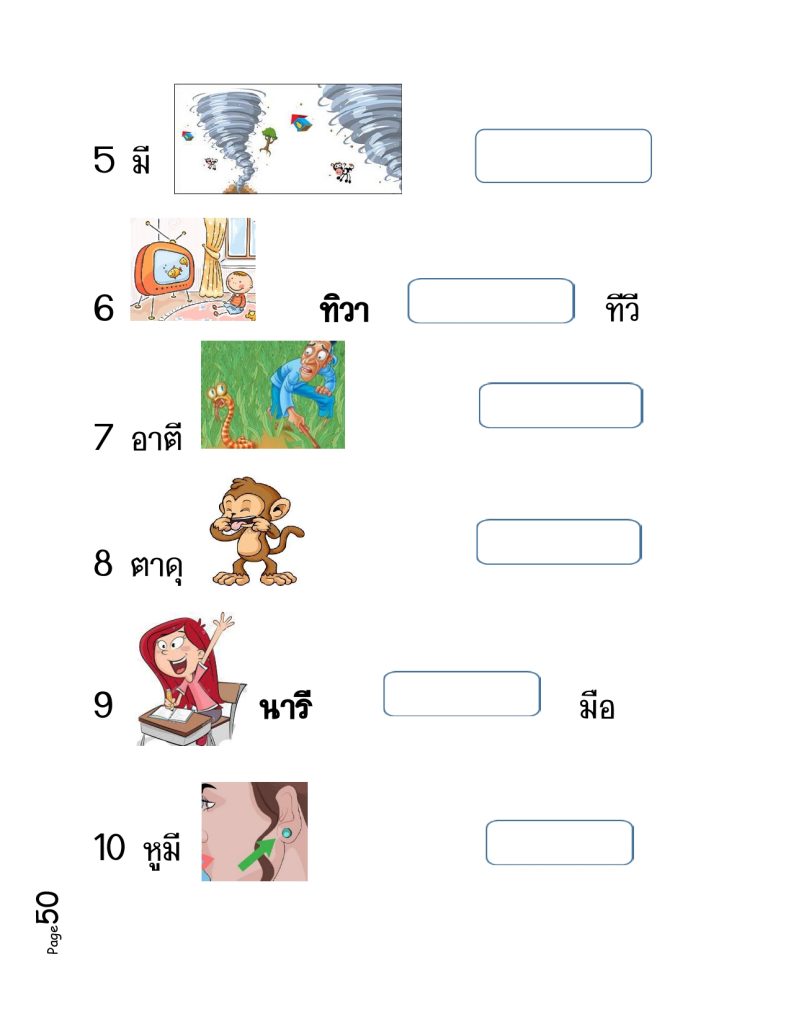
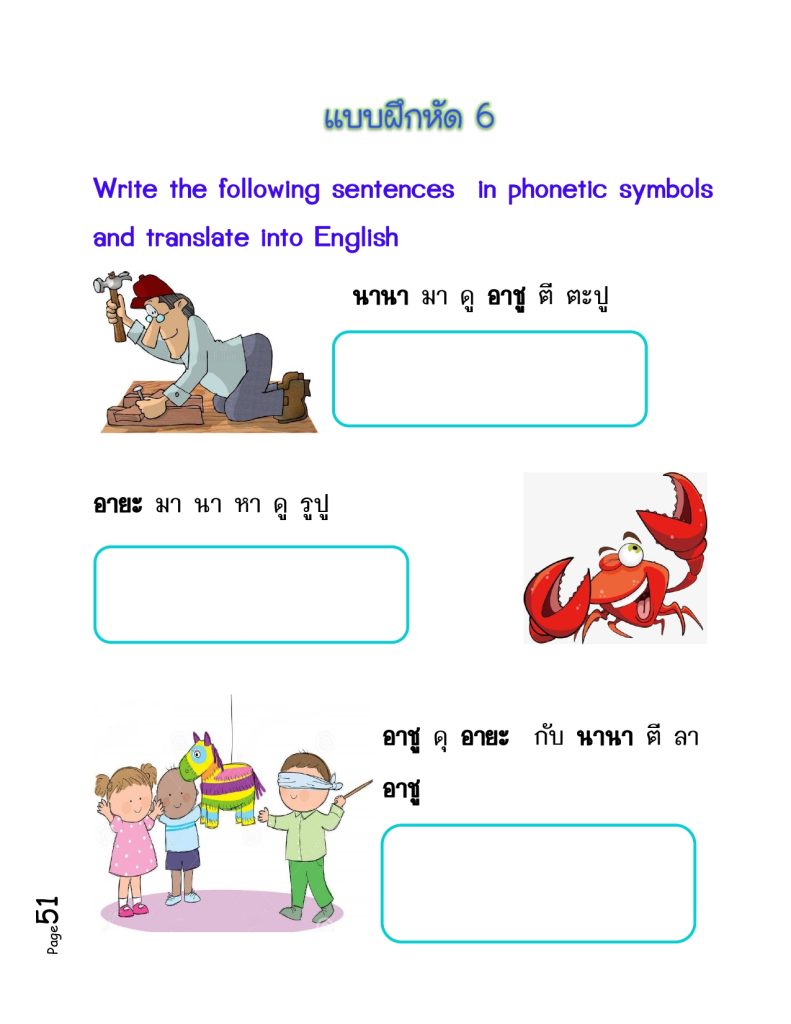
Lesson 8
first consonant combine with vowel เ-ะ
In Thai, the vowel “เ-ะ” (e) is used to produce a short “e” sound. This vowel is part of a set of vowels that create different sounds based on their combination with consonants.
The vowel symbol “เ-ะ” is used in Thai to denote a short vowel sound, similar to the “e” in the English word “pen.”
for example :
ก (g) + เ-ะ = เกะ (gèh)
จ (j) + เ-ะ = เจะ (jèh)
ด (d) + เ-ะ = เดะ (dèh)
บ (b) + เ-ะ = เบะ (bèh)
พ (ph) + เ-ะ = เพะ (phèh)
first consonant combine with vowel เ-
In Thai, the vowel “เ-” (e) is used to produce a mid-length “e” sound, similar to the “e” in the English word “bed.” When this vowel is combined with a consonant, it typically creates a syllable where the consonant is followed by the vowel sound “เ-“.
for example :
Combining “เ-” with Consonants:
ก (g/k) + เ- = เก (ke)
จ (j) + เ- = เจ (je)
ด (d) + เ- = เด (de)
บ (b) + เ- = เบ (be)
first consonant combine with vowel แ-ะ
The vowel “แ-ะ” (ae) in Thai is used to produce a short “ae” sound, similar to the “a” in the English word “cat.” This vowel is represented by “แ” and combined with “ะ” to create the short vowel sound.
Combining “แ-ะ” with Consonants:
ก (g/k) + แ-ะ = แกะ (kàe)
จ (j) + แ-ะ = แจะ (jàe)
ด (d) + แ-ะ = แดะ (dàe)
บ (b) + แ-ะ = แบะ (bàe)
first consonant combine with vowel แ-
The vowel “แ-” (ae) in Thai represents a long “ae” sound
Combining “แ-” with Consonants:
ก (g) + เแ- = แก (kae)
จ (j) + เแ- = แจ (jae)
ด (d) + เแ- = แด (dae)
บ (b) + เแ- = แบ (bae)
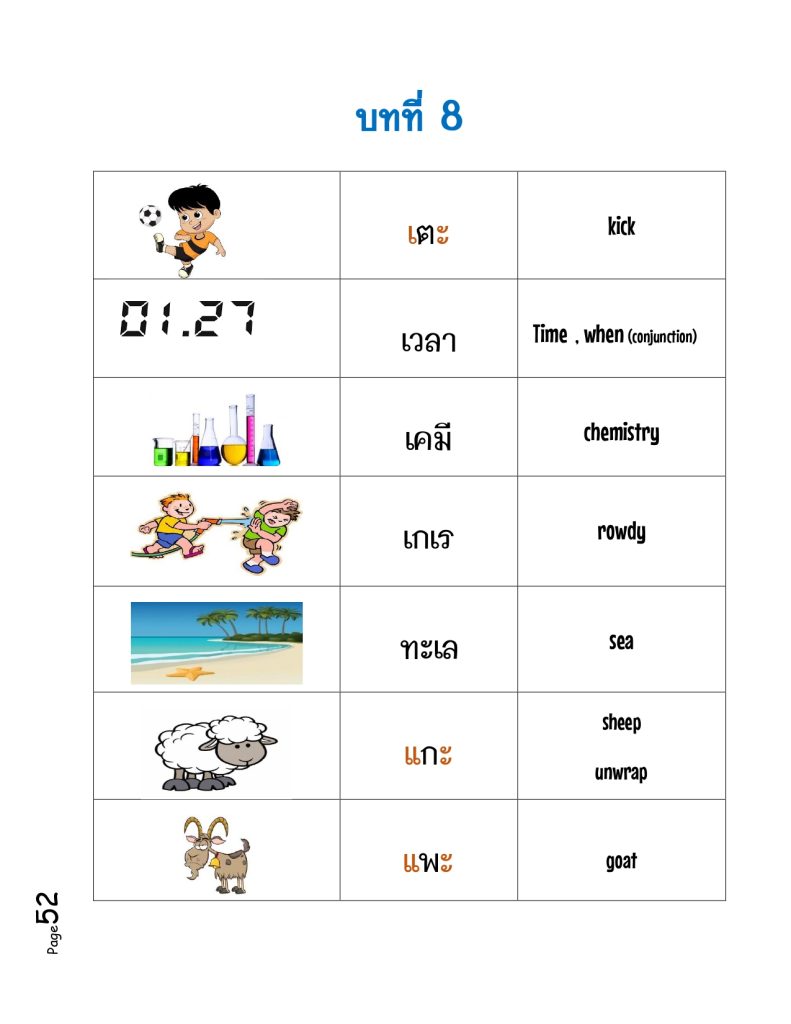
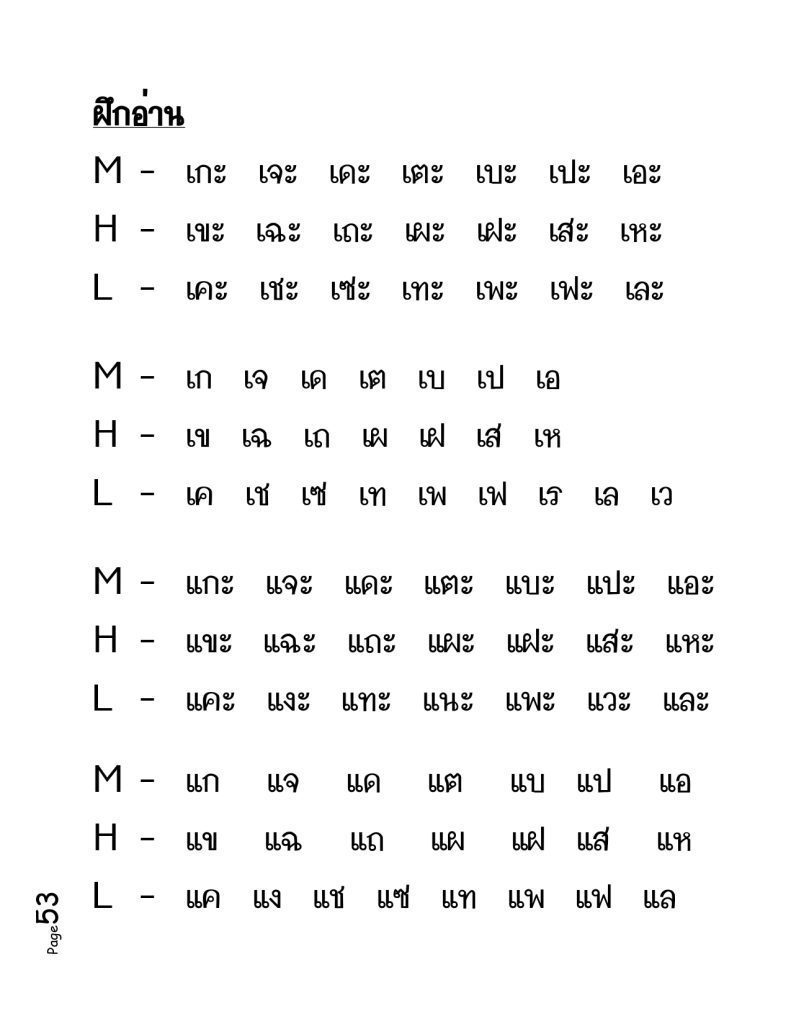


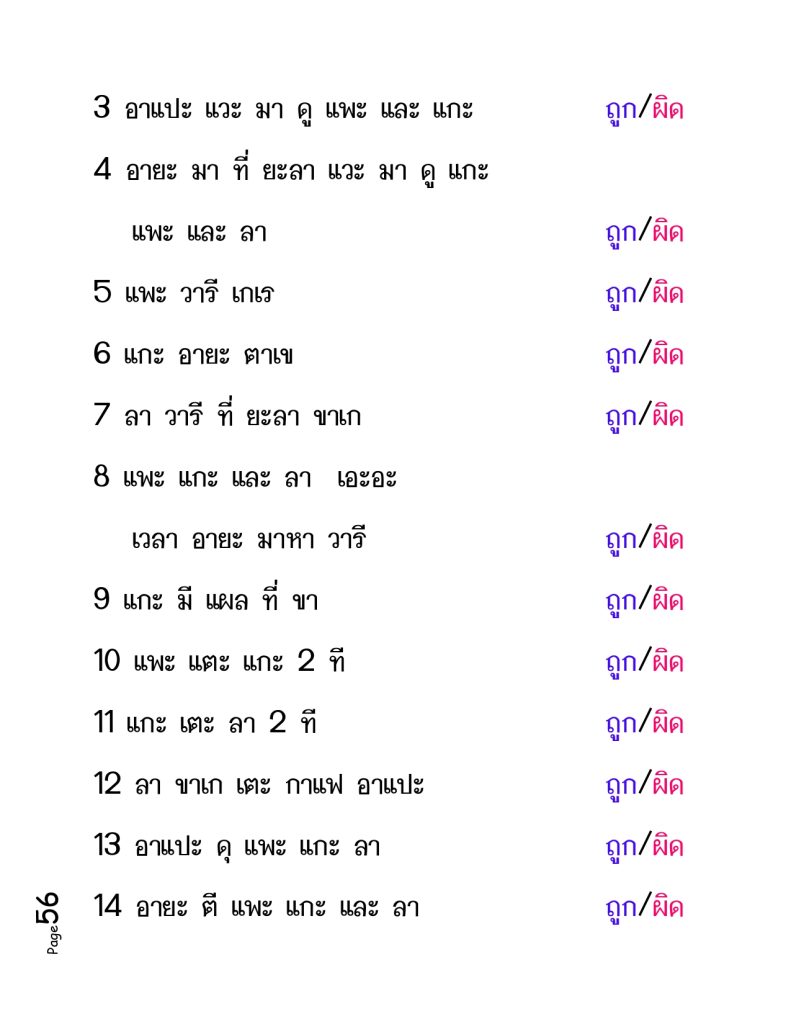
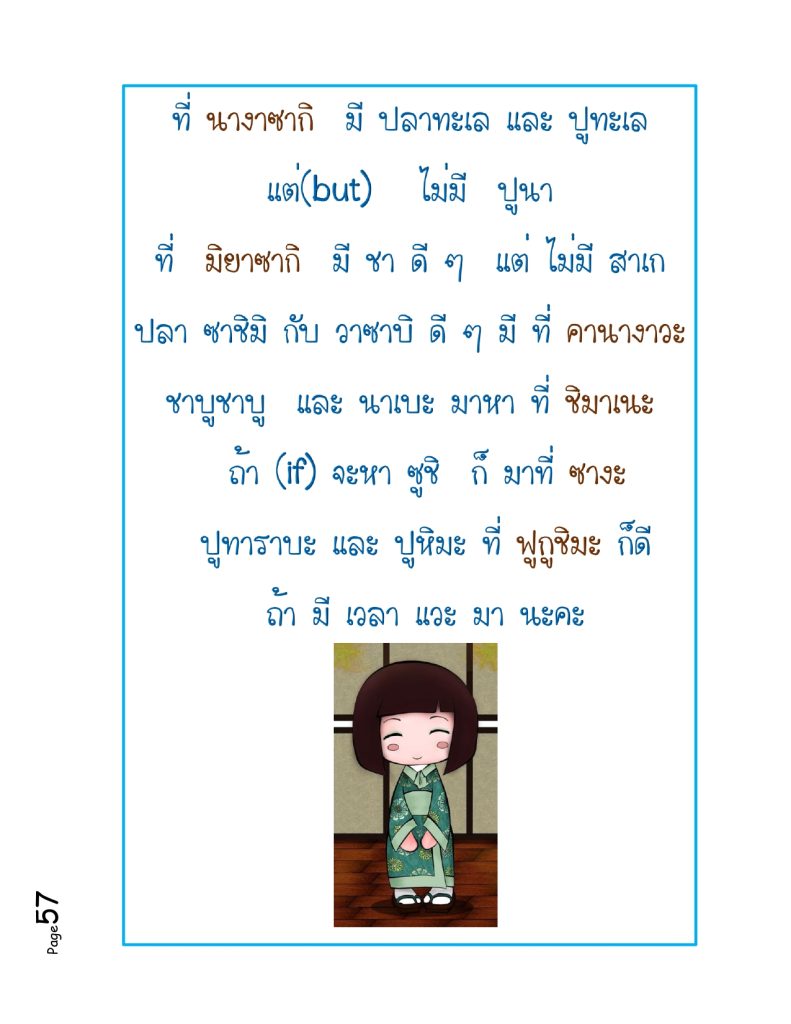
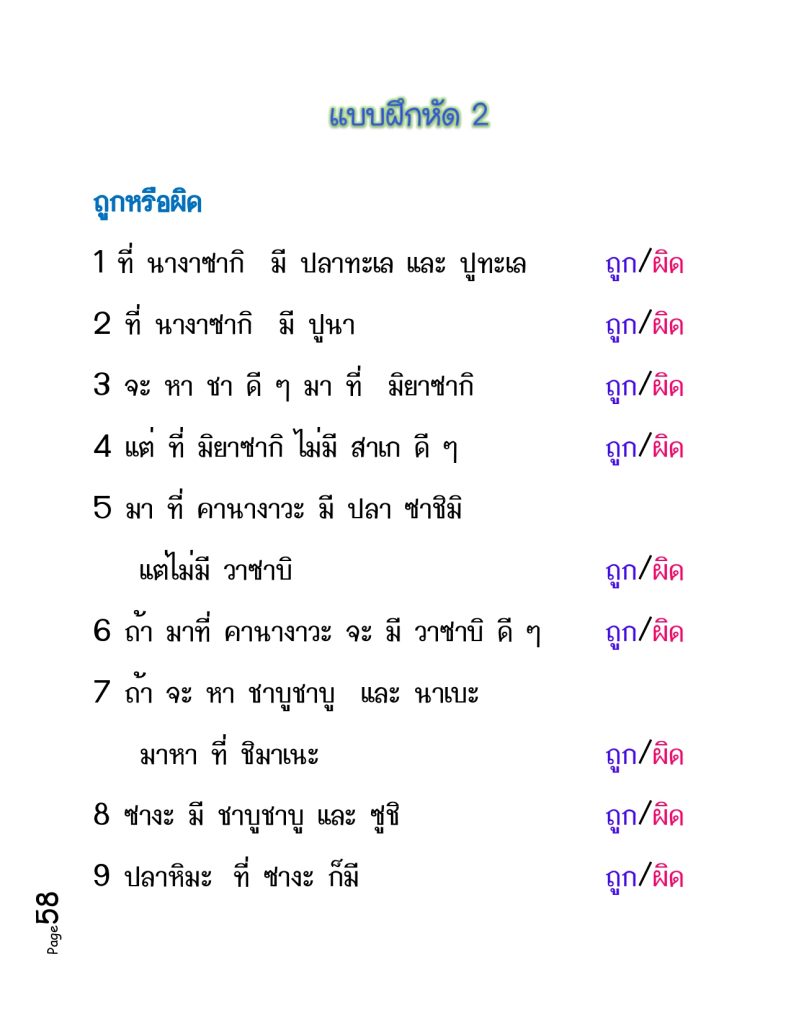
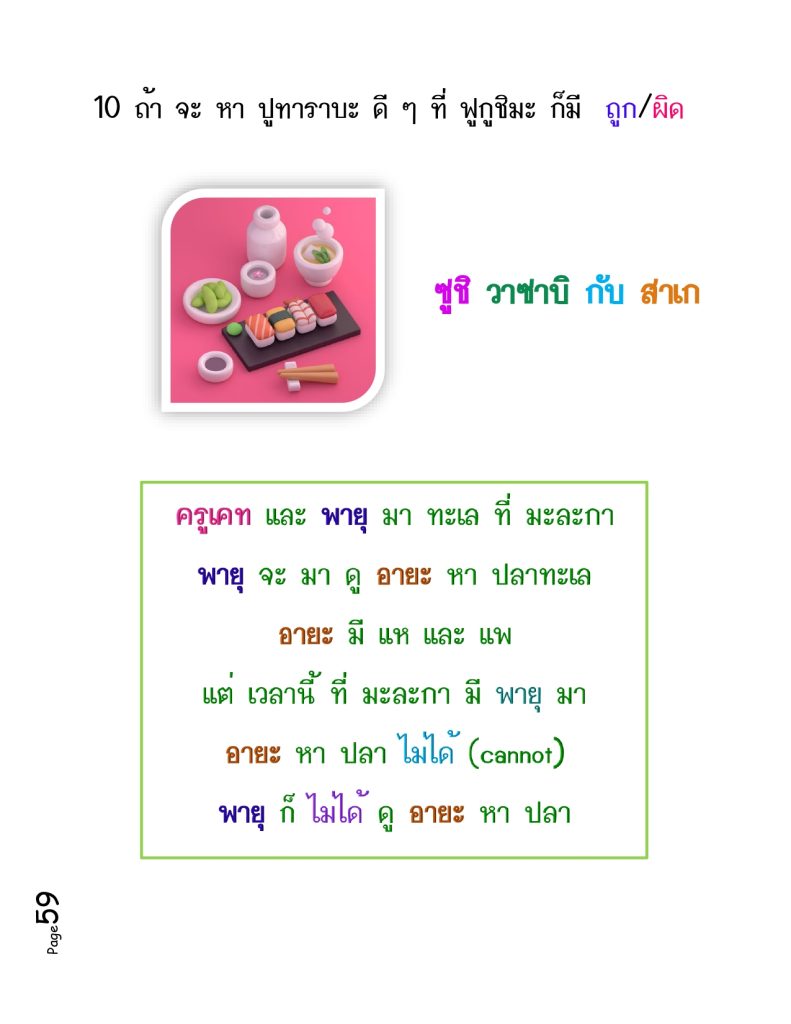
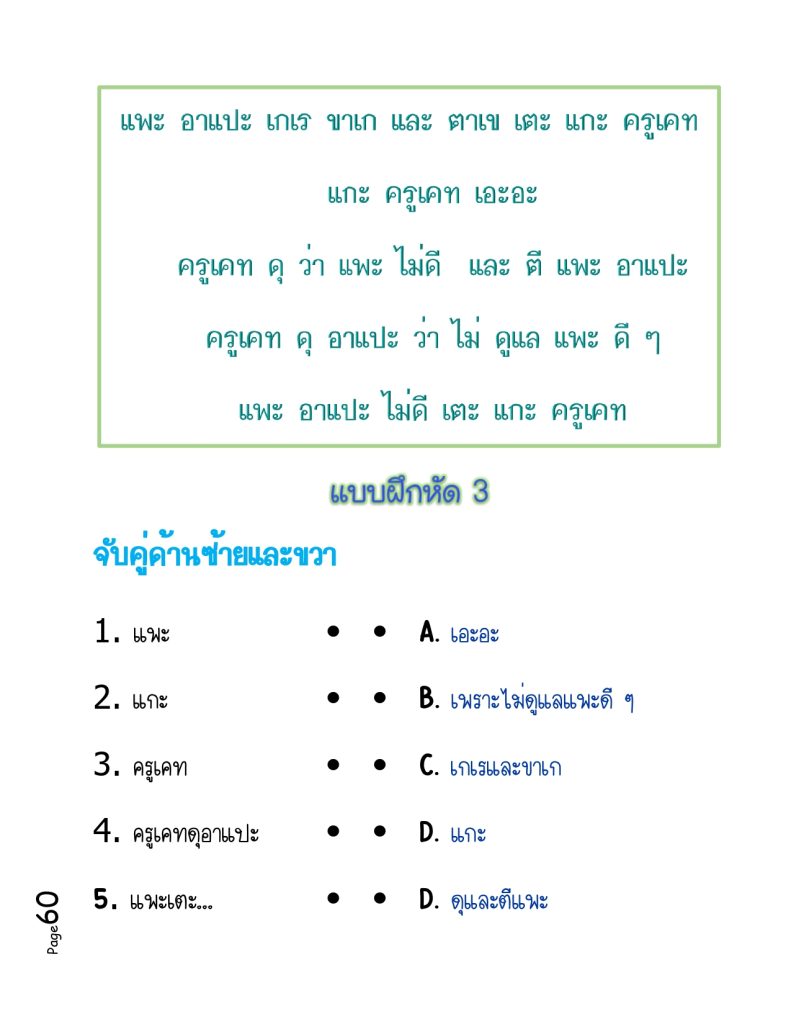
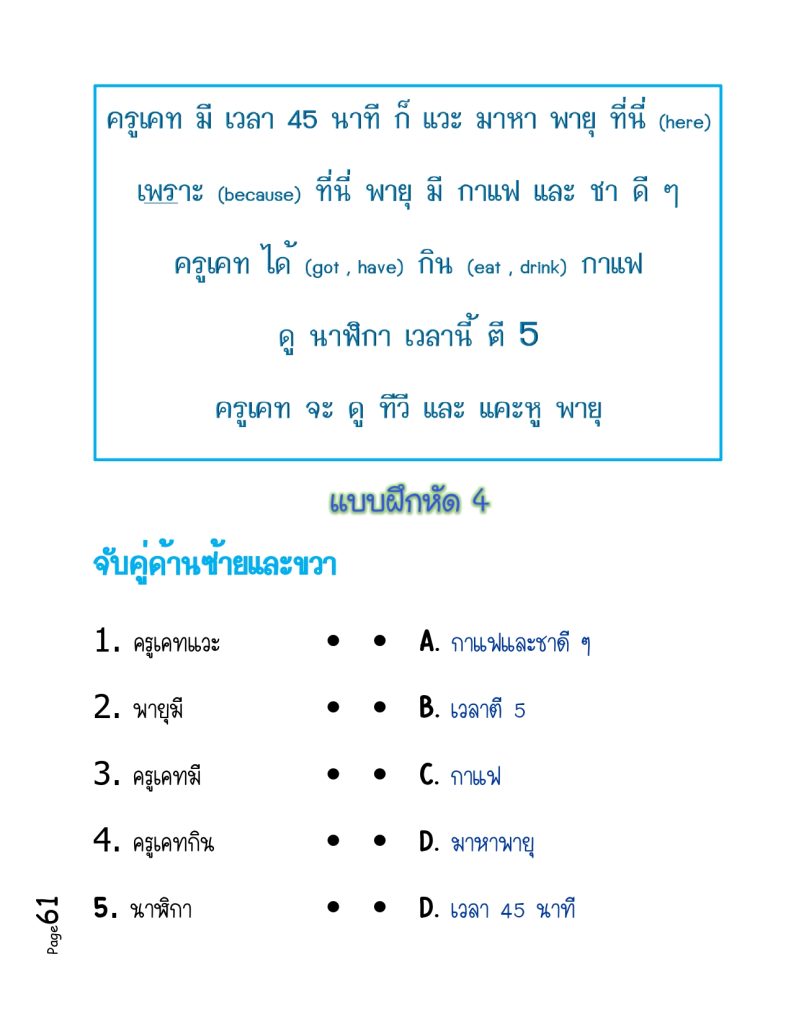
first consonant combine with vowel โ-ะ
The vowel “โ-ะ” (o) in Thai is a short “o” sound, similar to the “o” in “note” but shorter.
Combining “โ-ะ” with Consonants:
ก (g) + โ-ะ = โกะ (gò)
จ (j) + โ-ะ = โจะ (jò)
ด (d) + โ-ะ = โดะ (dò)
บ (b) + โ-ะ = โบะ (bò)
พ (ph) + โ-ะ = โพะ (phó)
first consonant combine with vowel โ-
The vowel “โ-” (o) in Thai produces a long “o” sound, similar to the “o” in “go.”
Combining “โ-” with Consonants:
ก (g) + โ- = โก (go)
จ (j) + โ- = โจ (jo)
ด (d) + โ- = โด (do)
บ (b) + โ- = โบ (bo)
o.
first consonant combine with vowel เ-าะ
The vowel “เ-าะ” (aw) in Thai produces a short “aw” sound, similar to the “o” in “pot” or “cot” but shorter.
Combining “เ-าะ” with Consonants:
ก (g) + เ-าะ = เกาะ (gàw)
จ (j) + เ-าะ = เจาะ (jàw)
ด (d) + เ-าะ = เดาะ (dàw)
บ (b) + เ-าะ = เบาะ (bàw)
first consonant combine with vowel -อ
The vowel “อ” (or) in Thai produces a long “or” sound, similar to the “or” in “more.
Combining “อ” with Consonants:
ก (g) + อ = โก (gor)
จ (j) + อ = โจ (jor)
ด (d) + อ = โด (dor)
บ (b) + อ = โบ (bor)
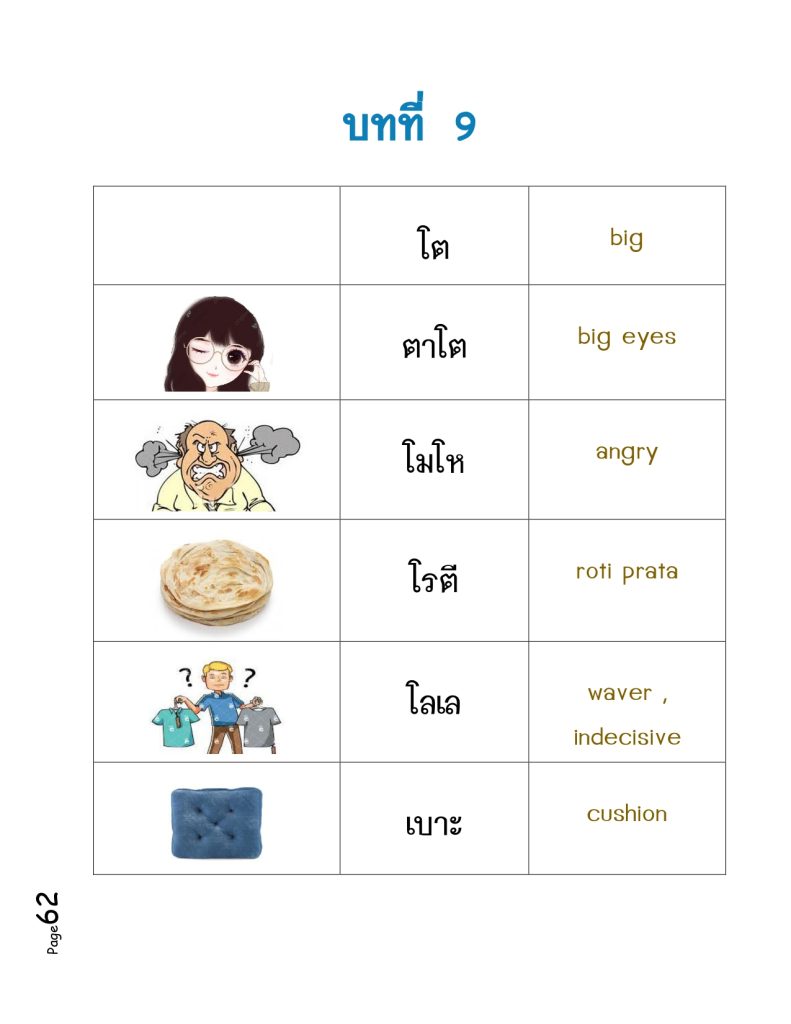
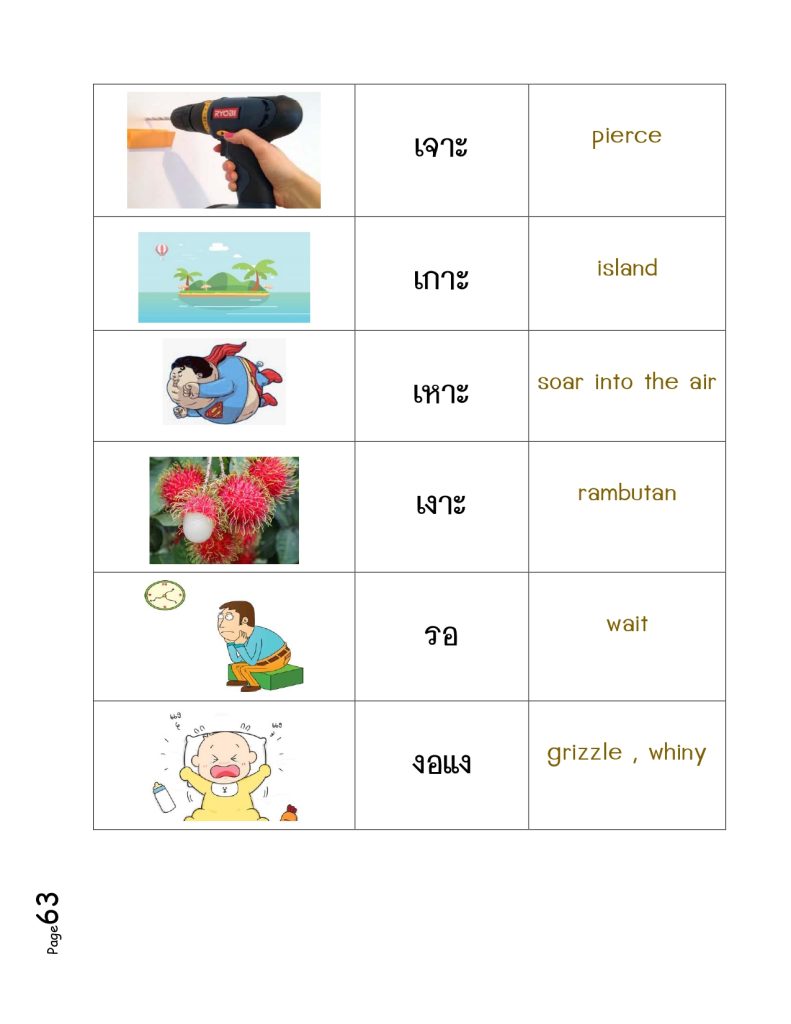
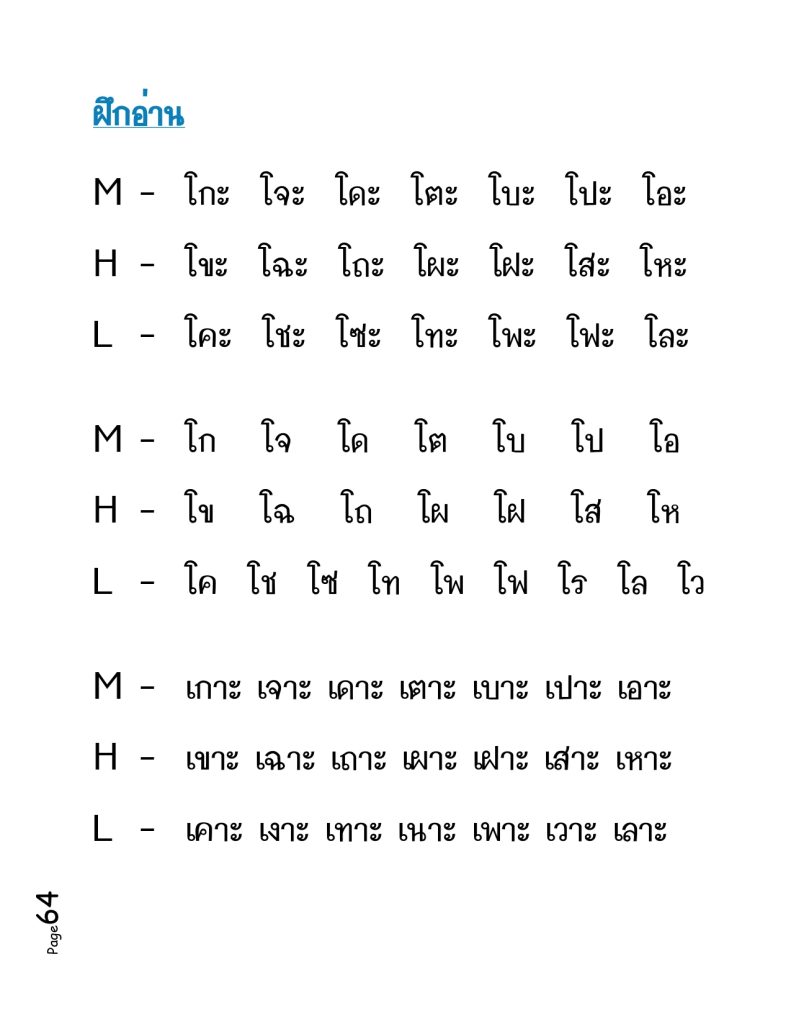
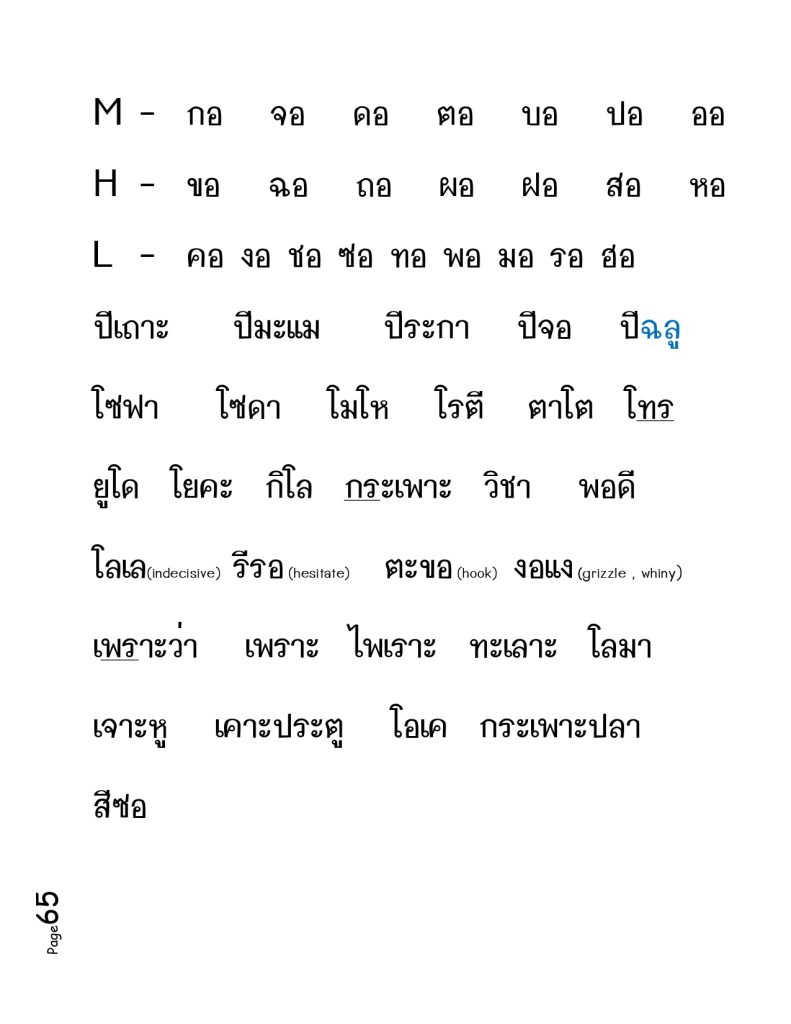
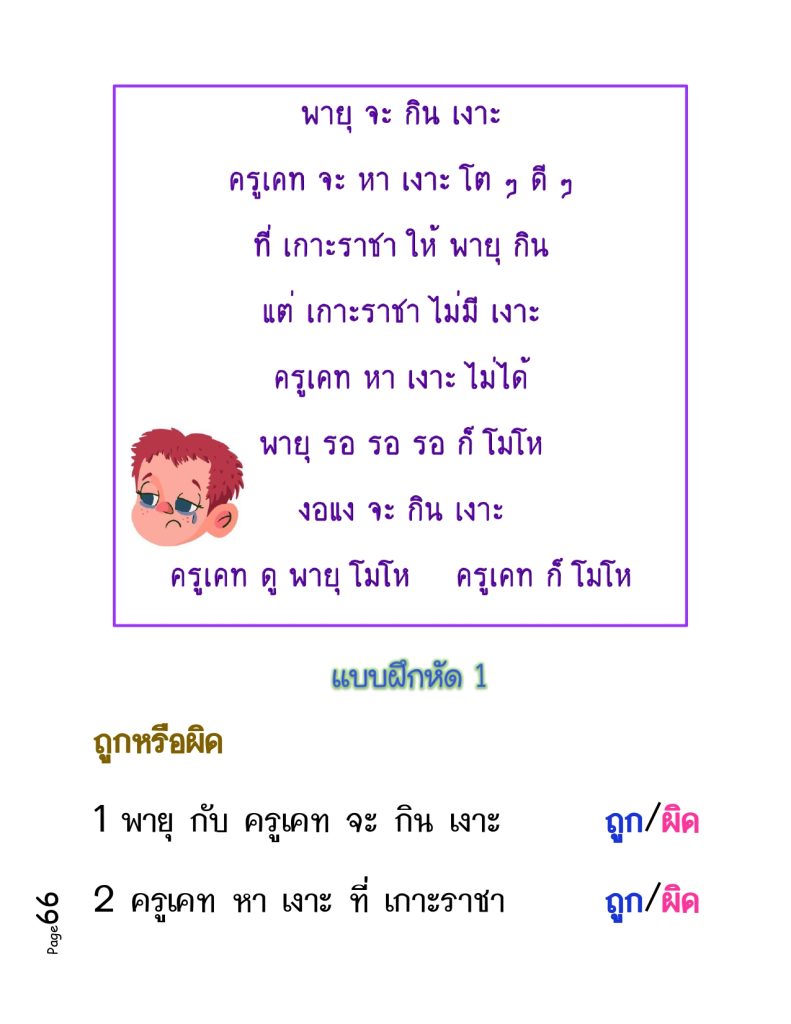

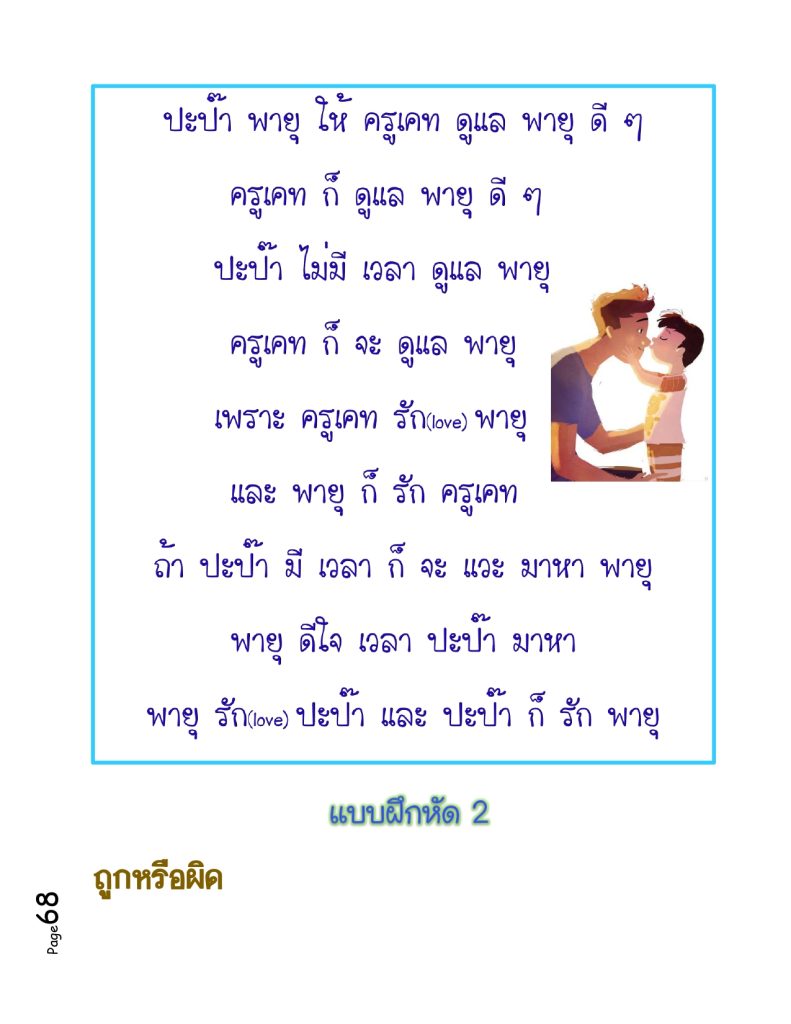
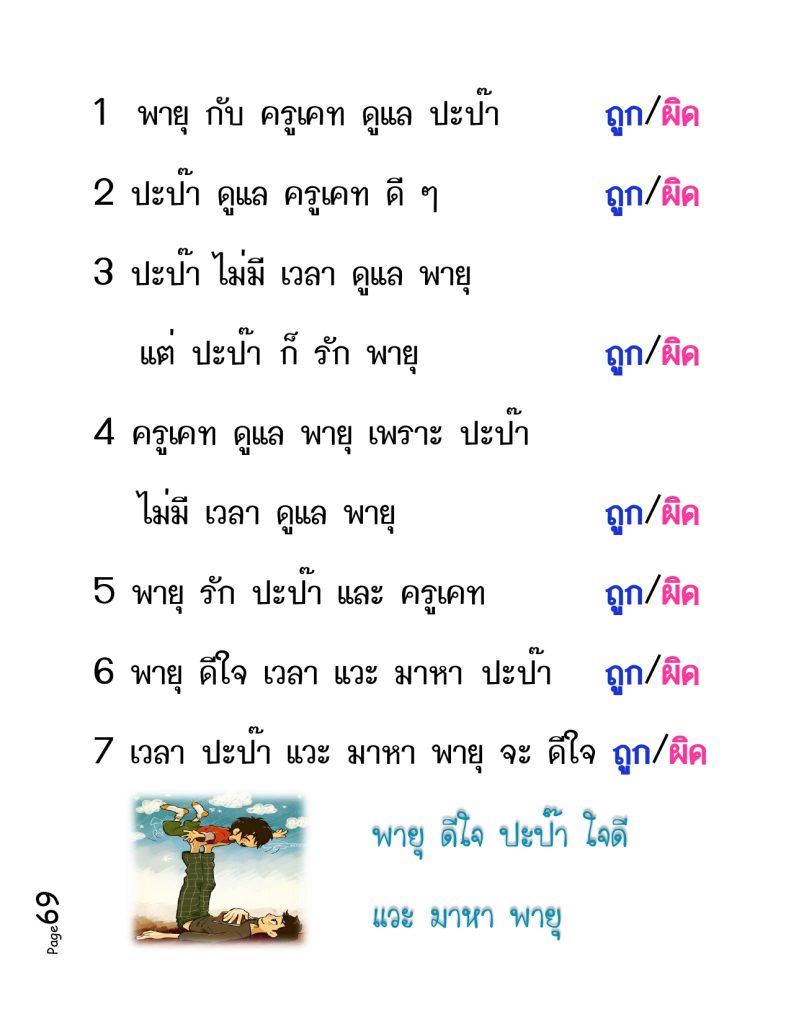
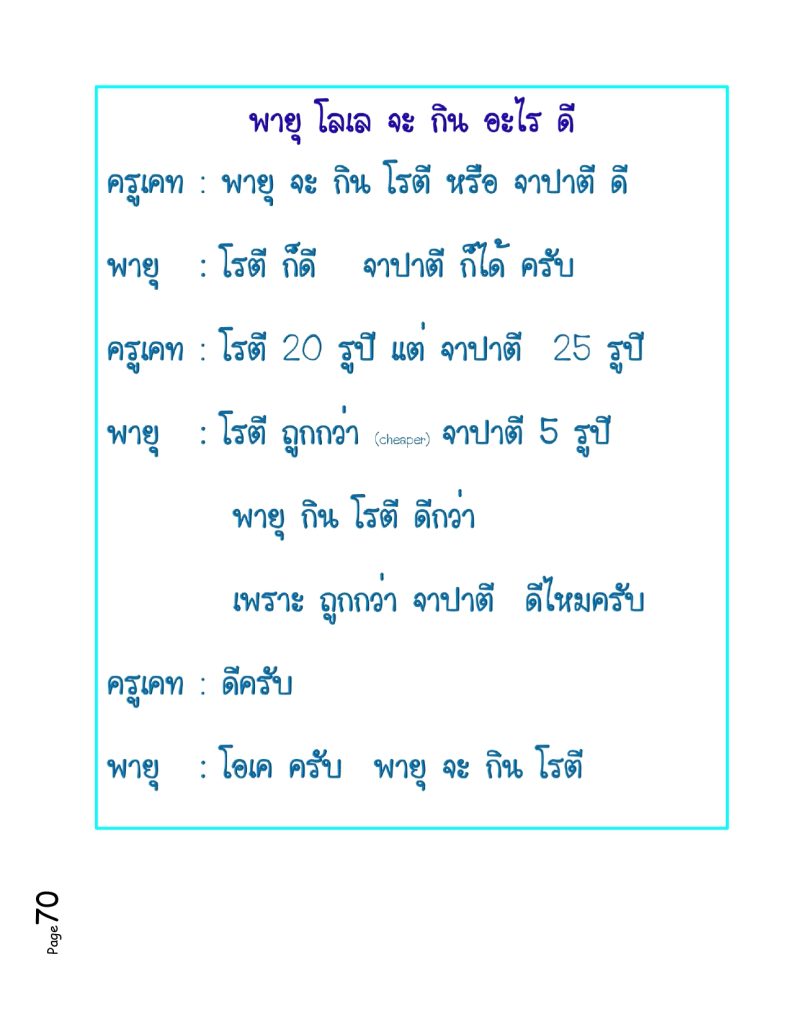
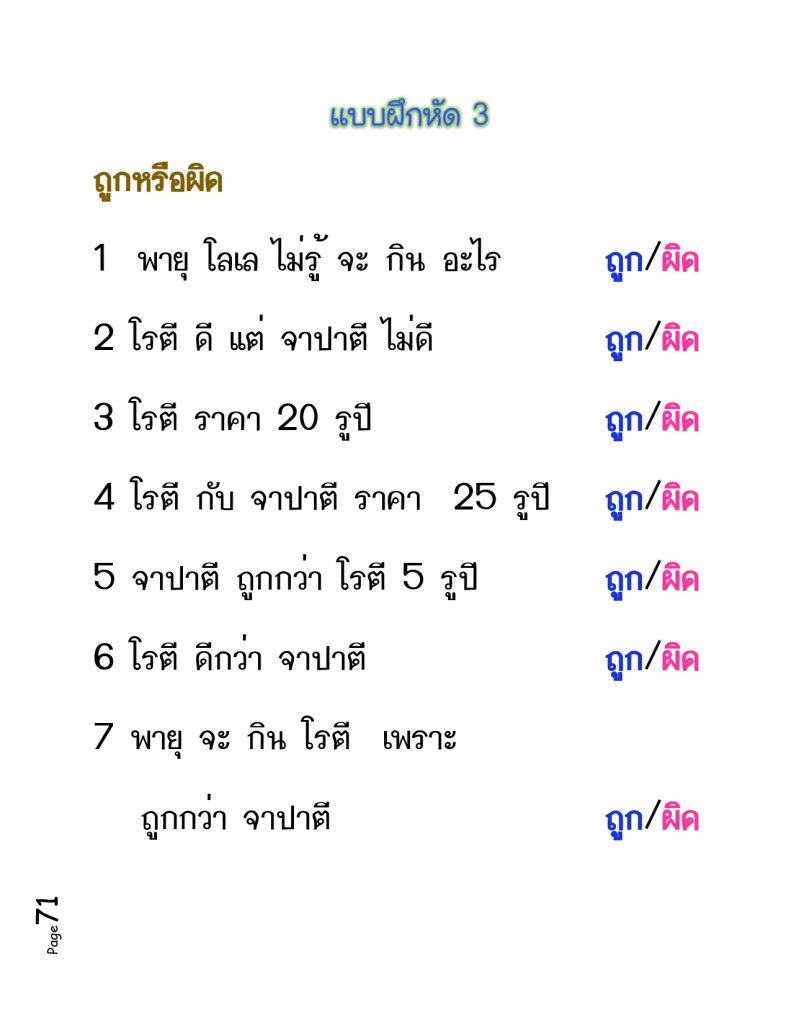
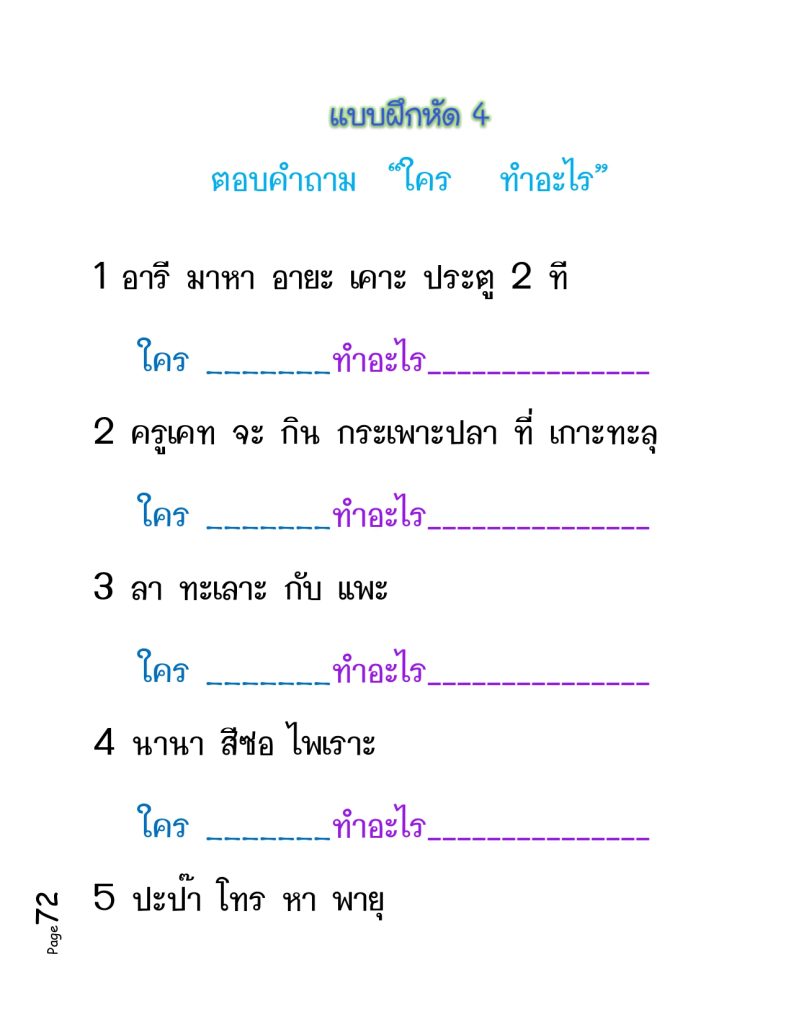
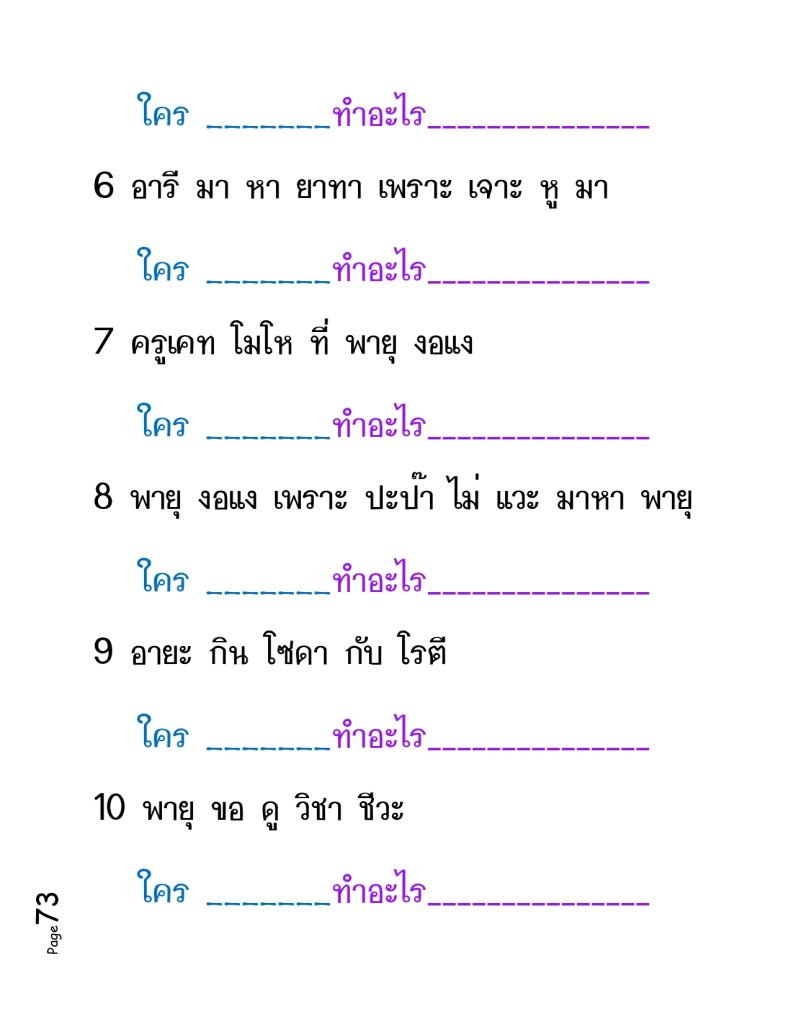
first consonant combine with vowel เ-อะ
The vowel “เ-อะ” (è) in Thai produces a short “e” sound with a slight glottal stop, The vowel “เ-อะ” (è) is unique and somewhat challenging to match exactly with English words
Combining “เ-อะ” with Consonants:
ก (g) + เ-อะ = เกอะ (gè)
จ (j) + เ-อะ = เจอะ (jè)
ด (d) + เ-อะ = เดอะ (dè)
first consonant combine with vowel เ-อ
In Thai, the vowel “เ-อ” (er) produces a sound similar to the “er” in English words like “her”
Combining “เ-อ” with Consonants:
ก (g) + เ-อ = เกอ (ger)
จ (j) + เ-อ = เจอ (jer)
ด (d) + เ-อ = เดอ (der)
บ (b) + เ-อ = เบอ (ber)
first consonant combine with vowel เ-ียะ
The vowel “เ-ียะ” (ia) in Thai is a short vowel that combines a short “i” sound with a slight “a” sound. It’s used to create syllables with a specific short vowel sound that is somewhat akin to a combination of “i” and “a.”
Combining “เ-ียะ” with Consonants:
ก (g) + เ-ียะ = เกียะ (gìa)
จ (j) + เ-ียะ = เจียะ (jìa)
ด (d) + เ-ียะ = เดียะ (dìa)
first consonant combine with vowel เ-ีย
The vowel “เ-ีย” (ia) in Thai sounds quite similar to the “ear” in English, though with some nuances in pronunciation. It has a long vowel sound that blends the “i” and “a” sounds smoothly together, creating a single syllable with a similar quality to the English “ear.”
Combining “เ-ีย” with Consonants:
Here’s how “เ-ีย” combines with different consonants to form syllables:
ก (g) + เ-ีย = เกีย (gia)
จ (j) + เ-ีย = เจีย (jia)
ด (d) + เ-ีย = เดีย (dia)
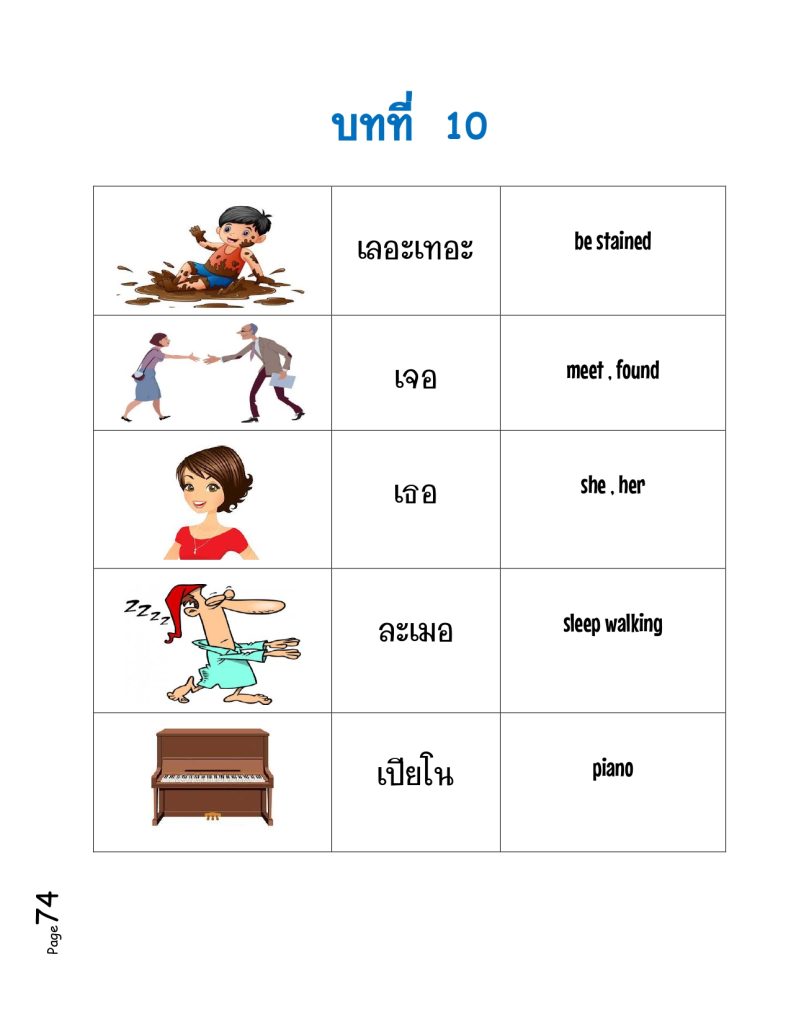
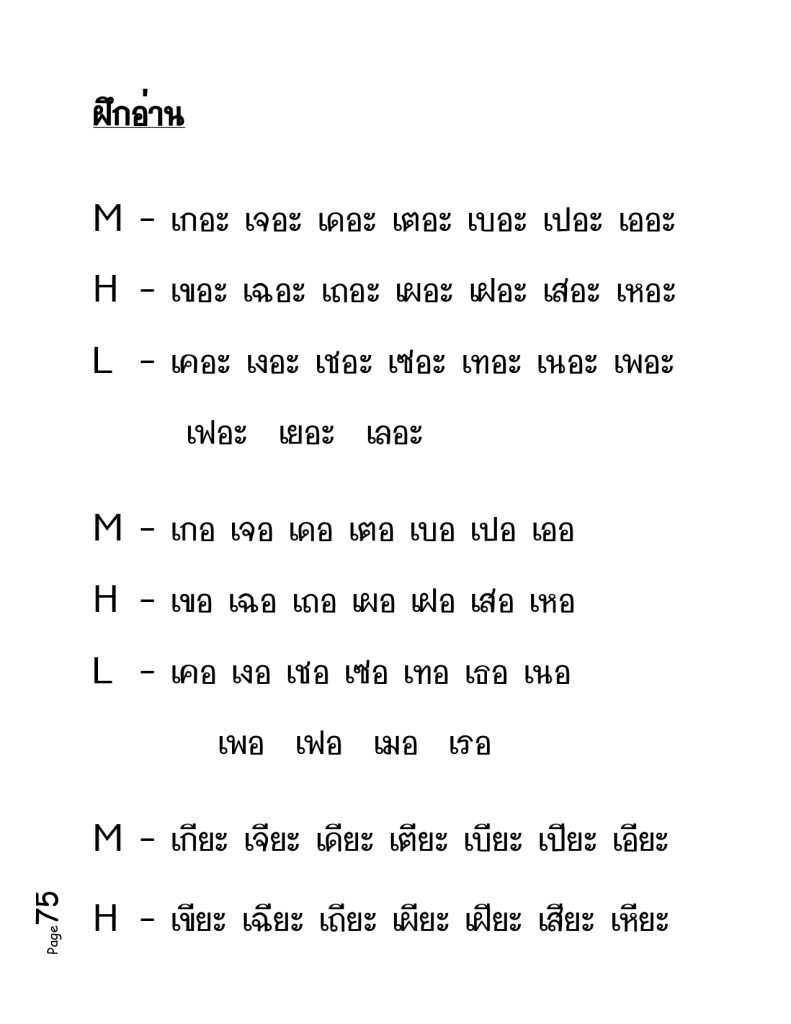
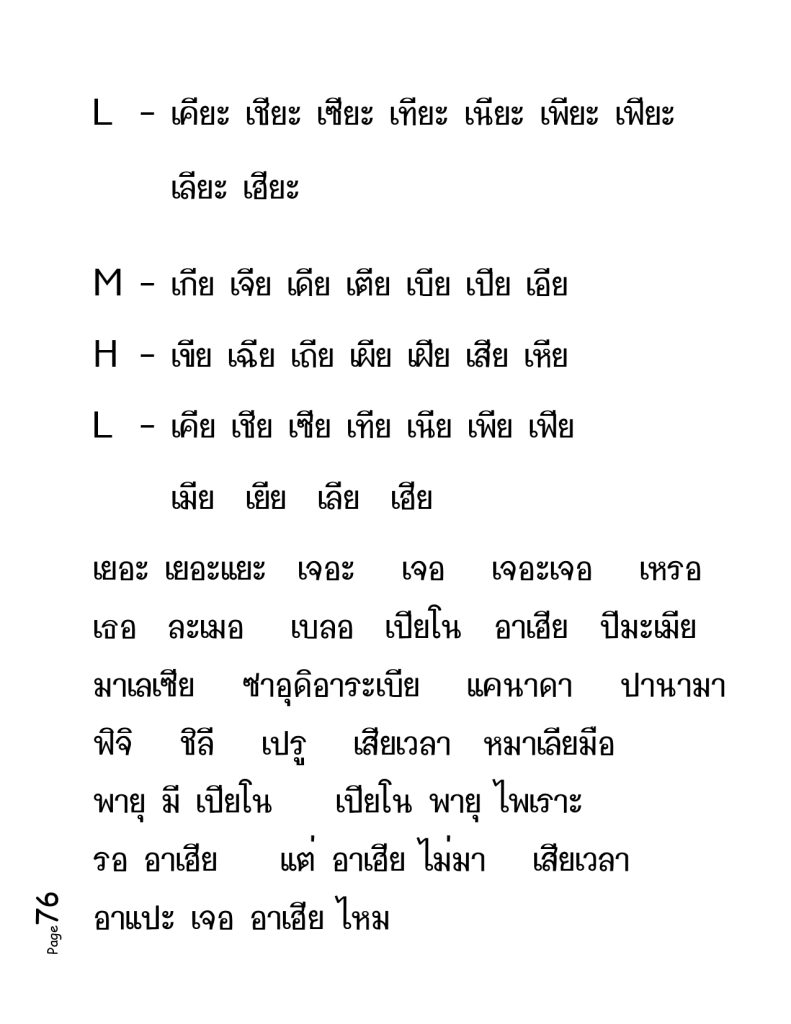
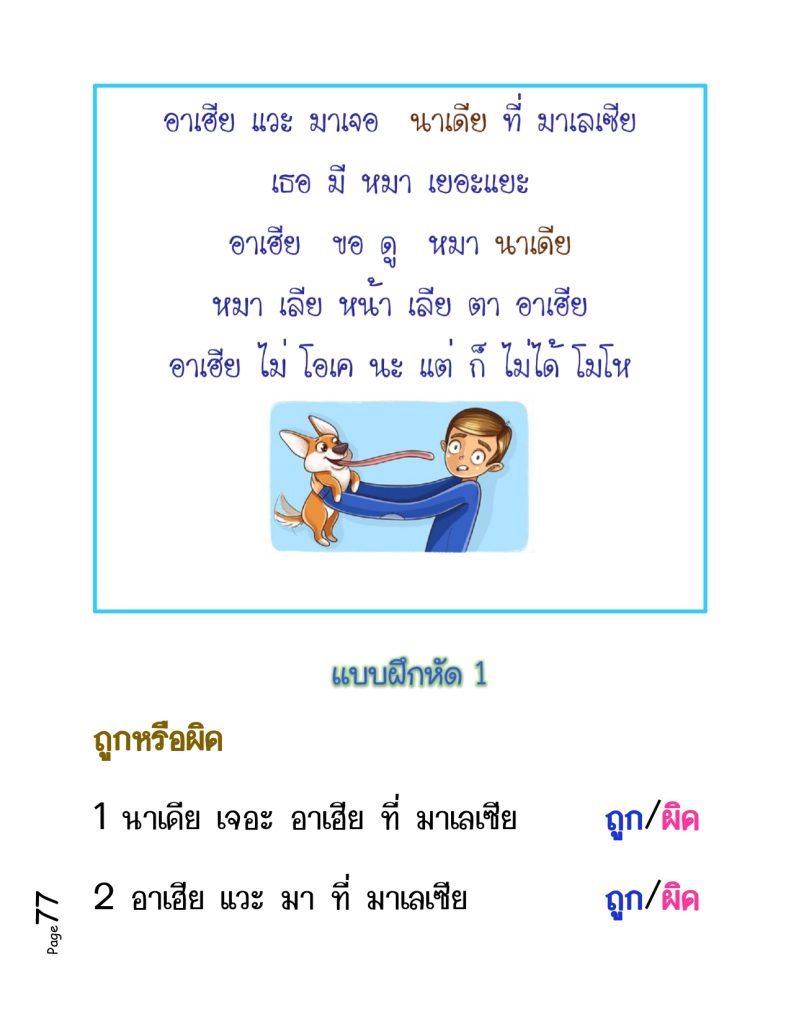
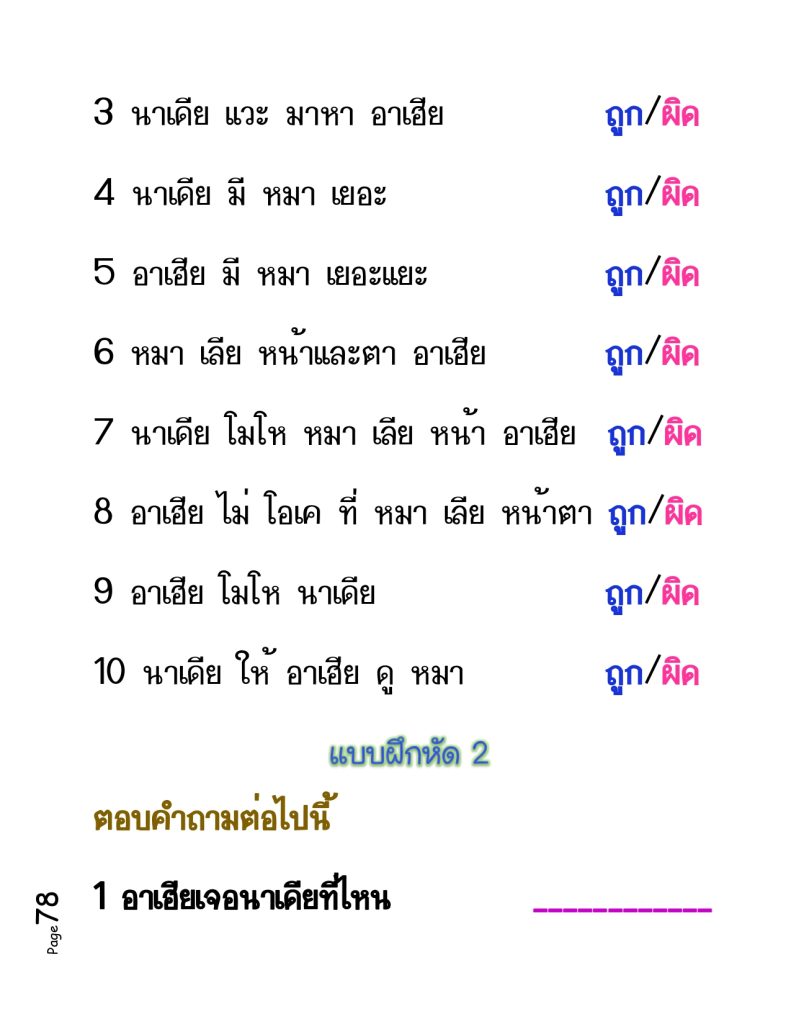
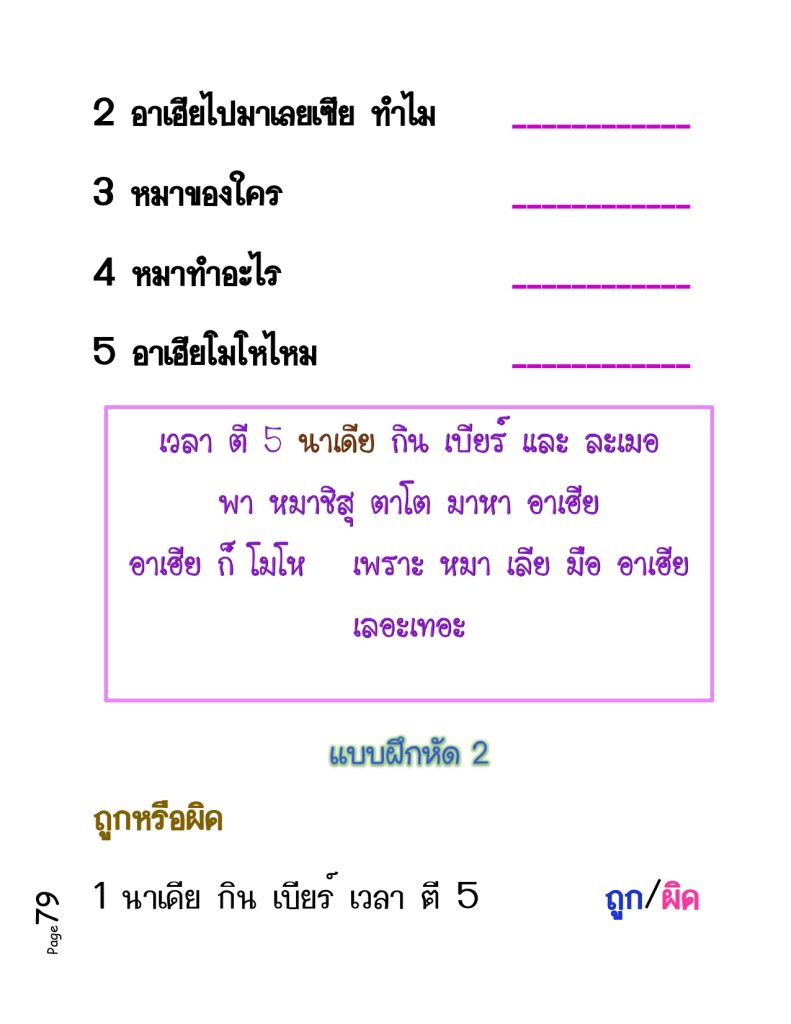
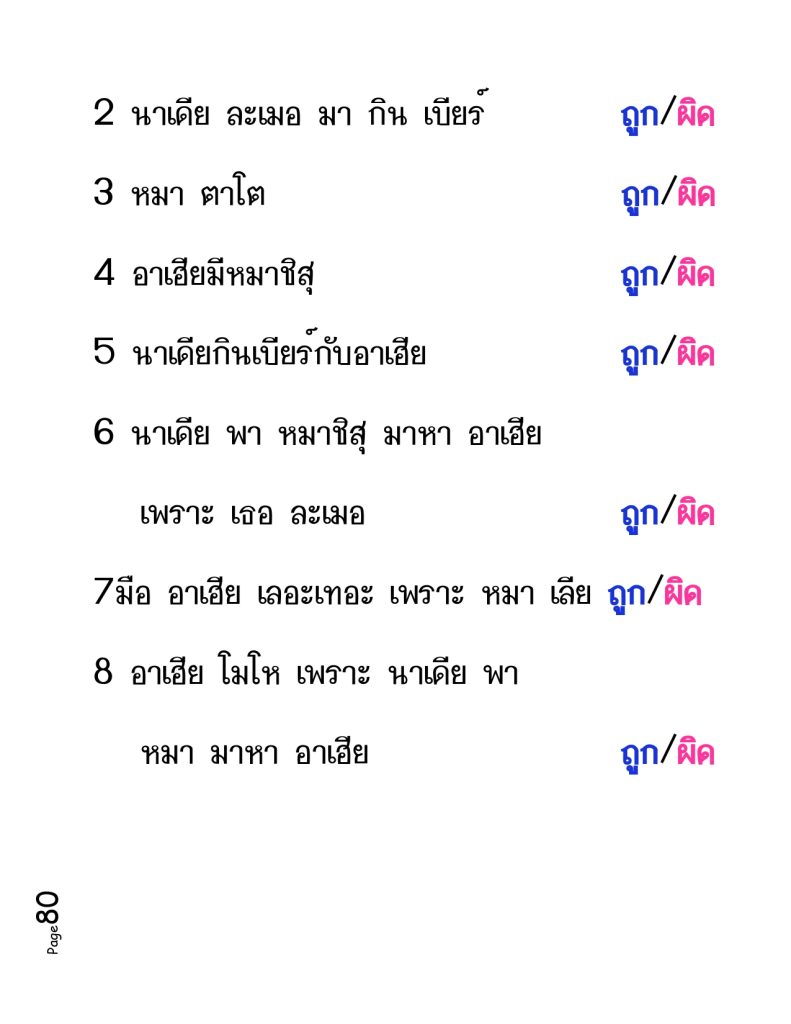
first consonant combine with vowel เ-ือะ
The vowel “เ-ือะ” in Thai combines a short “ue” sound with a final “a” sound, somewhat like a clipped “uea” sound in English. This vowel is relatively unique and not always directly translatable into English sounds, but it is crucial for accurate pronunciation in Thai.
Combining “เ-ือะ” with Consonants:
ก (g) + เ-ือะ = เกือะ (kùea).
จ (j) + เ-ือะ = เจือะ (jùea)
first consonant combine with vowel เ-ือ
Thai vowel “เ-ือ” (uea) is indeed unique and does not have an exact equivalent in English. Its pronunciation involves a specific tongue position and lip rounding that doesn’t directly correspond to any single English vowel sound.
Combining “เ-ือ” with Consonants
ก (g) + เ-ือ = เกือ (guea)
จ (j) + เ-ือ = เจือ (juea)
ส (s) + เ-ือ = เสือ (suea) means Tiger
ร (r) + เ-ือ = เรือ (ruea) means boat , ship
Lorem ipsum dolor sit amet, consectetur adipiscing elit. Ut elit tellus, luctus nec ullamcorper mattis, pulvinar dapibus leo.
first consonant combine with vowel -ัวะ
The vowel -ัวะ (ùa) in Thai is a short vowel sound that blends “u” with “a” in a specific way.
Combining -ัวะ” with Consonants
ก (g) + ัวะ = กัวะ (gùa)
จ (j) + ัวะ = จัวะ (jùa)
ด (d) + ัวะ = ตัวะ (dùa)
first consonant combine with vowel -ัว
The vowel –ัว” (ua) in Thai is a long vowel that blends a rounded “u” sound with an “a” sound. It is pronounced with a continuous, smooth quality.
ก (g) + ัว = กัว (gua)
ต (dt) + ัว = ตัว (dtua)
บ (b) + ัว = บัว (bua)
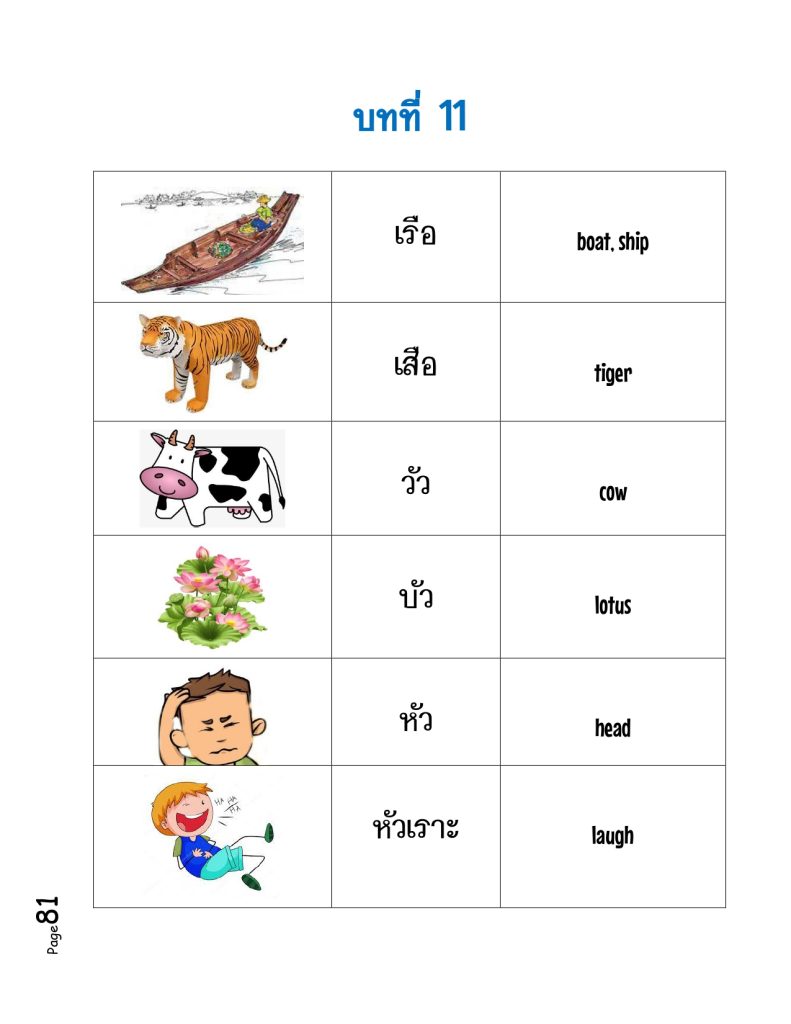
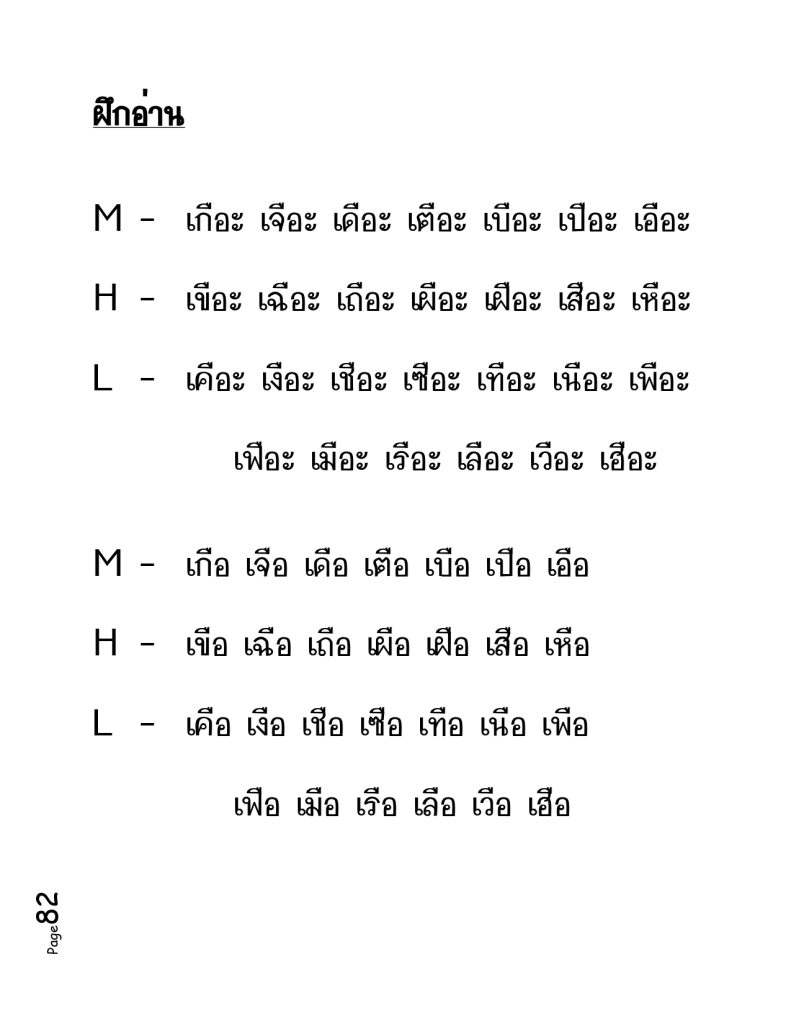
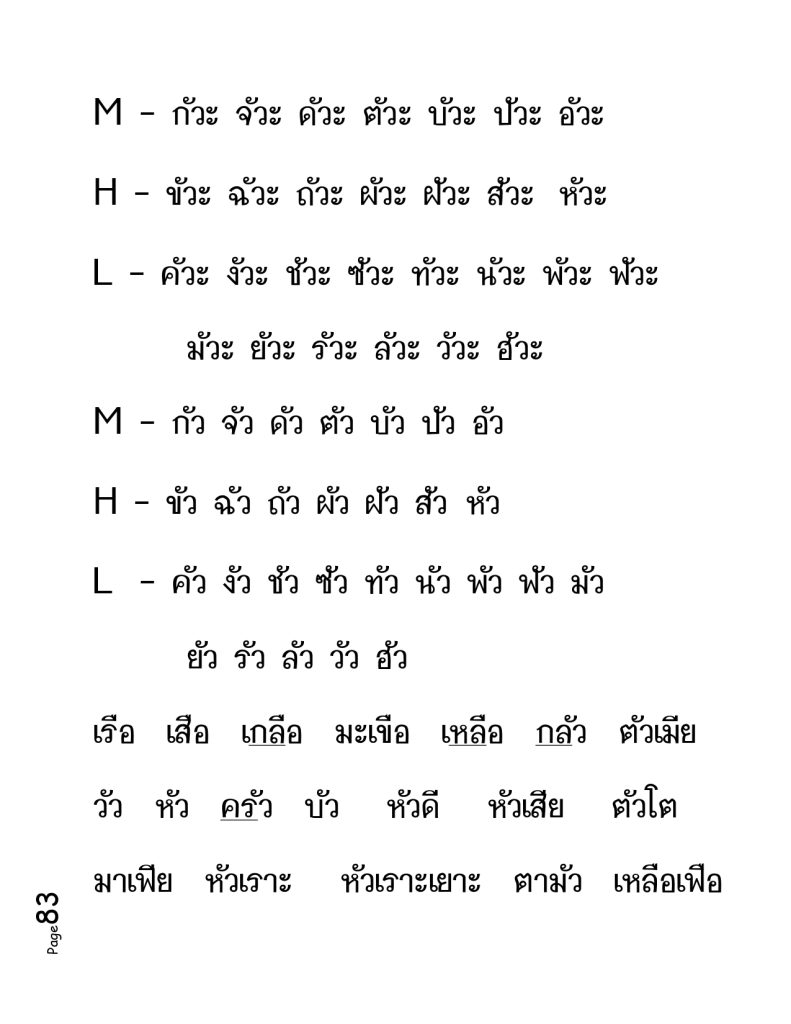
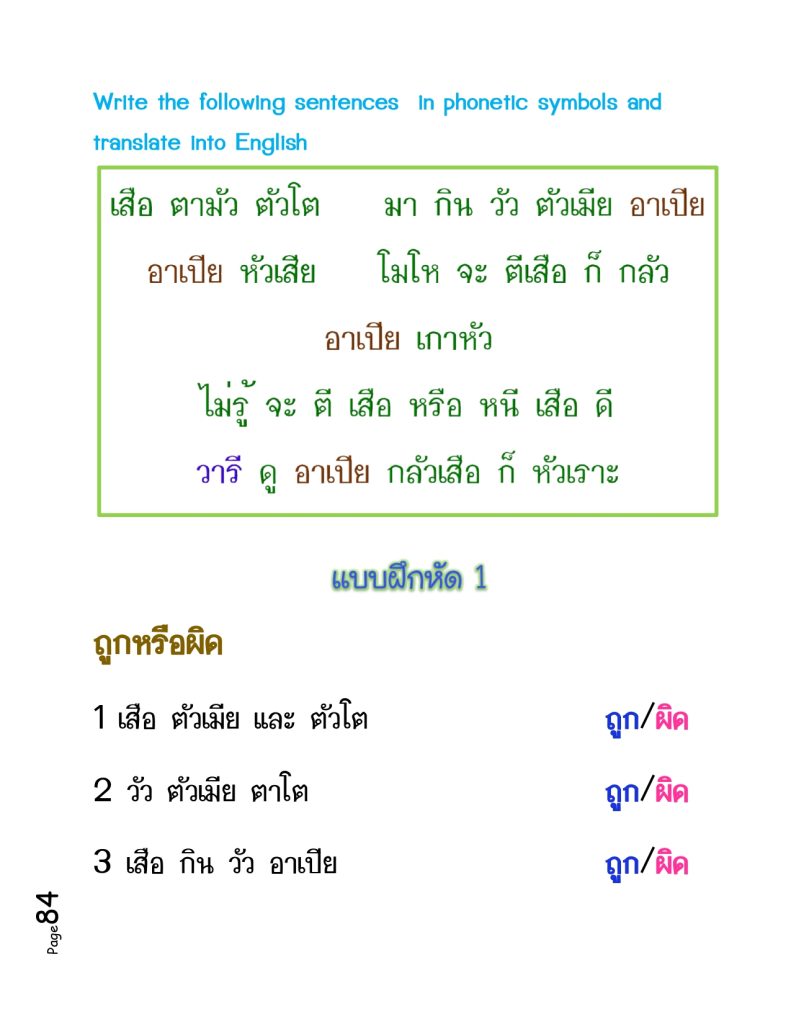
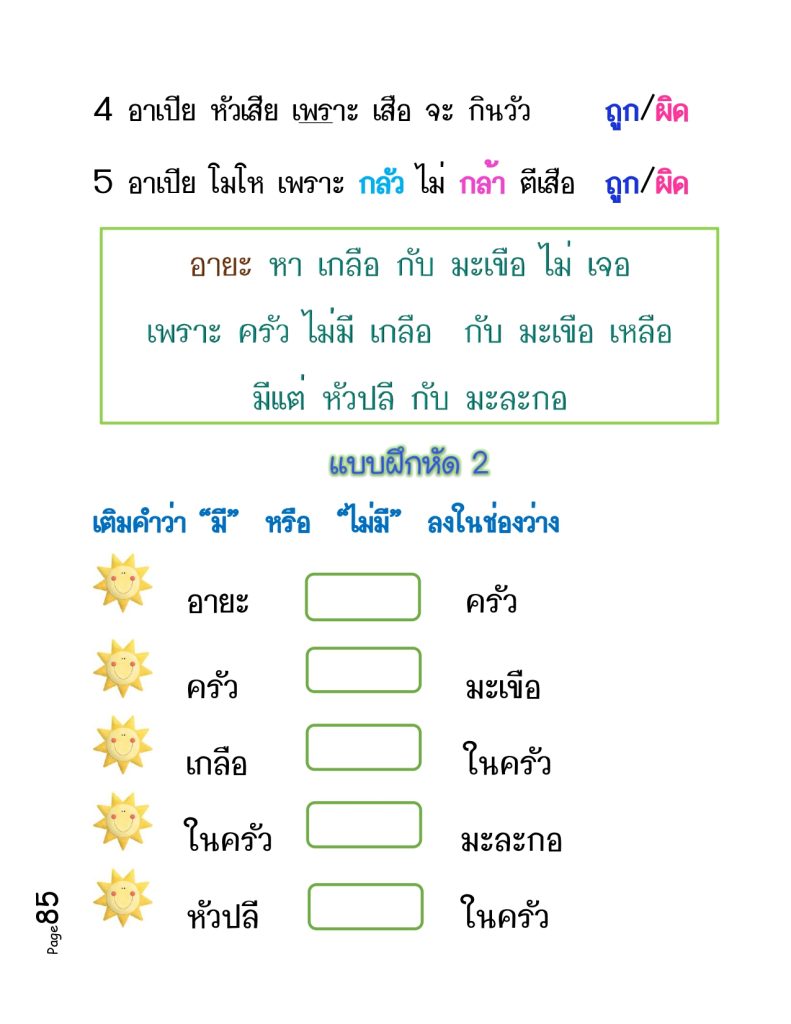
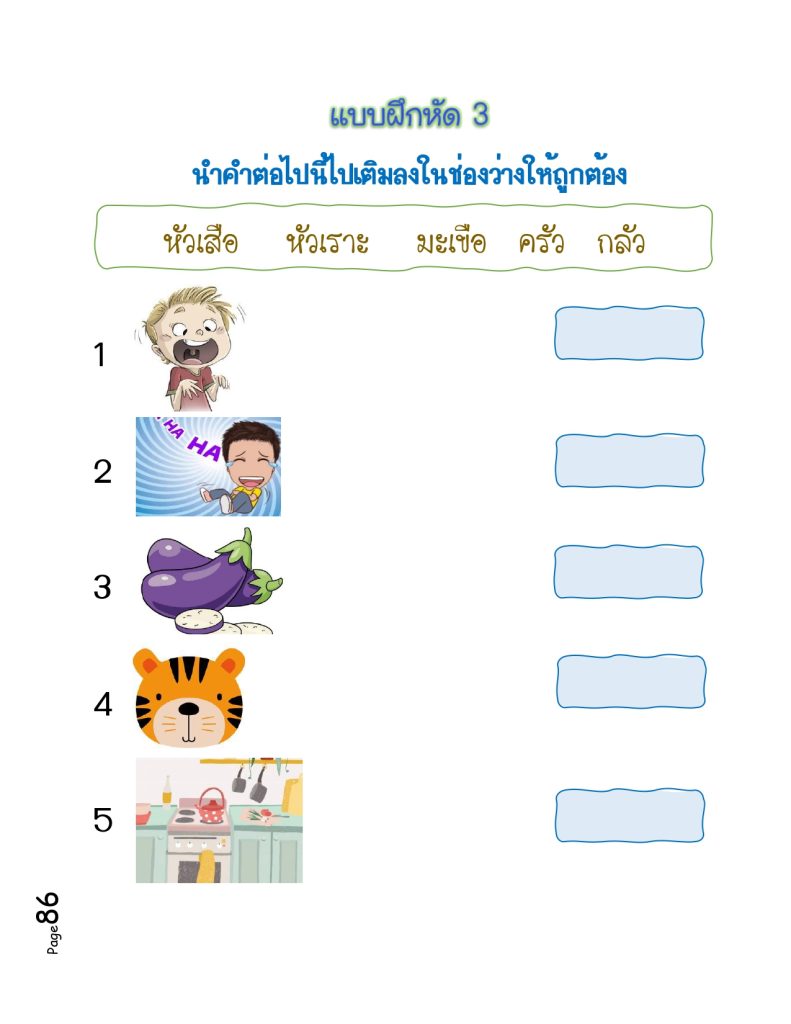
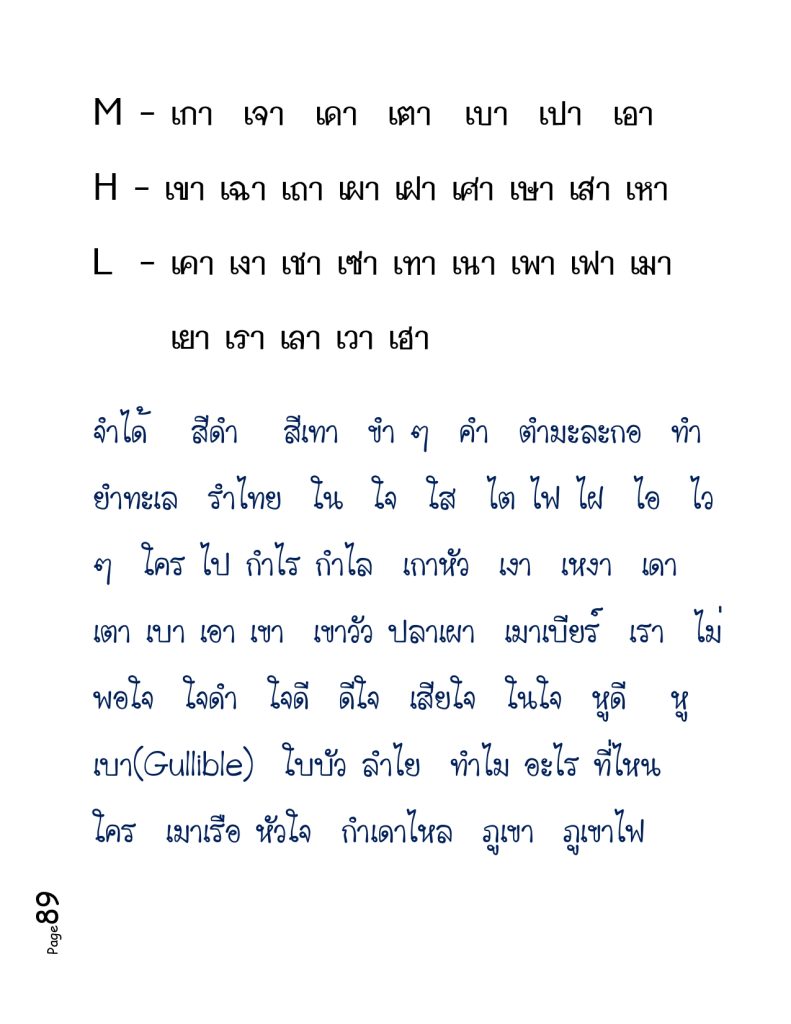
first consonant combine with vowel -ำ
The vowel – ำ(am) in Thai is a nasalized vowel sound. It combines the vowel “a” with a nasal “m” sound, which is pronounced with the mouth slightly open and the nasal cavity involved.
Characteristics of -ำ (am)
Nasalized Vowel: “ำ” represents a nasalized vowel sound, blending “a” with a nasal “m” sound.
Live Syllable Rule: This vowel is always part of a live syllable, meaning it is never used with a final consonant in Thai.
Combining – ำ with Consonants
ก (g) + ำ = กำ (gam)
จ (j) + ำ = จำ (jam)
ด (d) + ำ = ดำ (dam)
บ (b) + ำ = บำ (bam)
first consonant combine with vowel ไ- and ใ-
The vowels “ไ-“ (ai) and “ใ-“ (ai) in Thai both represent the “ai” sound, but they are used in different contexts and have different orthographic rules.
syllables that use the vowels “ไ-“ (ai) and “ใ-“ (ai) are always considered live syllables. This means they never end with a final consonant.
“ไ-“ and “ใ-“ both produce only live syllables.
Examples of Live Syllables
“ไ-” (ai) Examples:
ไก่ (gài) – “chicken”
ไกล (glai) – “far”
ไม้ (mái) – “wood”
“ใ-” (ai) Examples:
ใกล้ (klâi) – “near”
ใจ (jai) – “heart”
ใช่ (châi) –”yes , correct “
first consonant combine with vowel เ-า
The vowel “เ-า” (ao) in Thai is a special vowel that always forms live syllables and is never followed by a final consonant. This means that when using this vowel, the syllable will end with the vowel sound itself and not with a final consonant.
Examples
Here are some examples of words with “เ-า”:
เกา (kao) – “to scratch” or “old” (as in “เก่า”).
เดา (dao) – “to guess”.
เบา (bao) – “light” (in weight).
เมา (mao) – “drunk”.
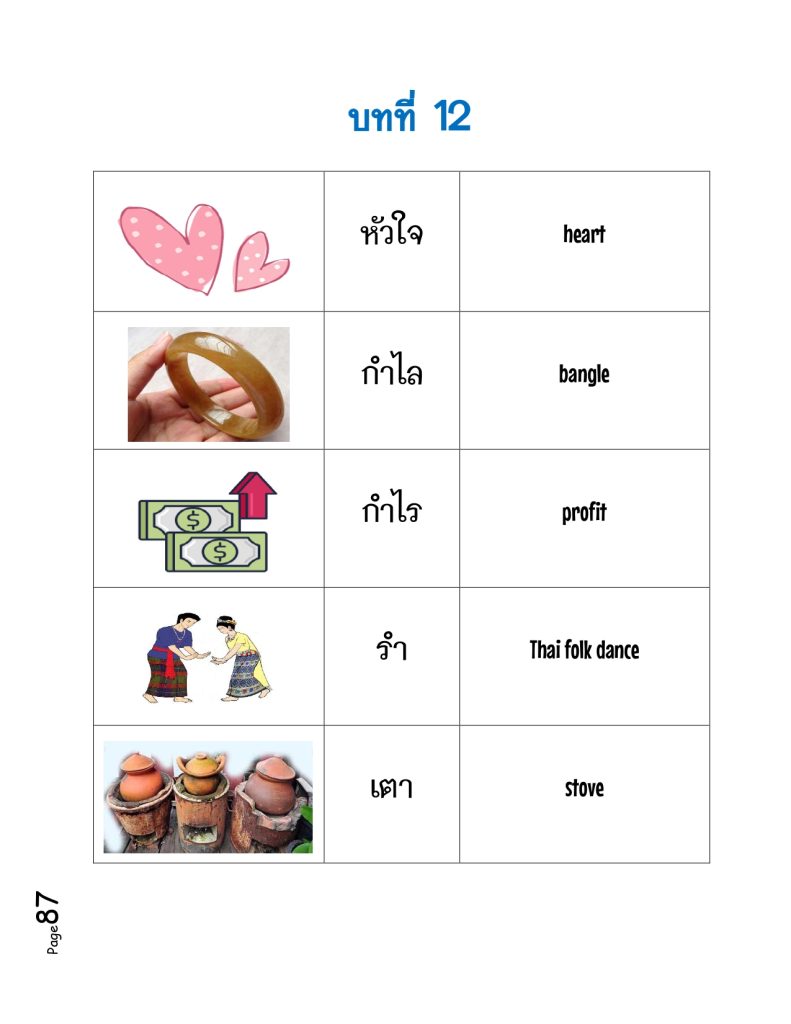
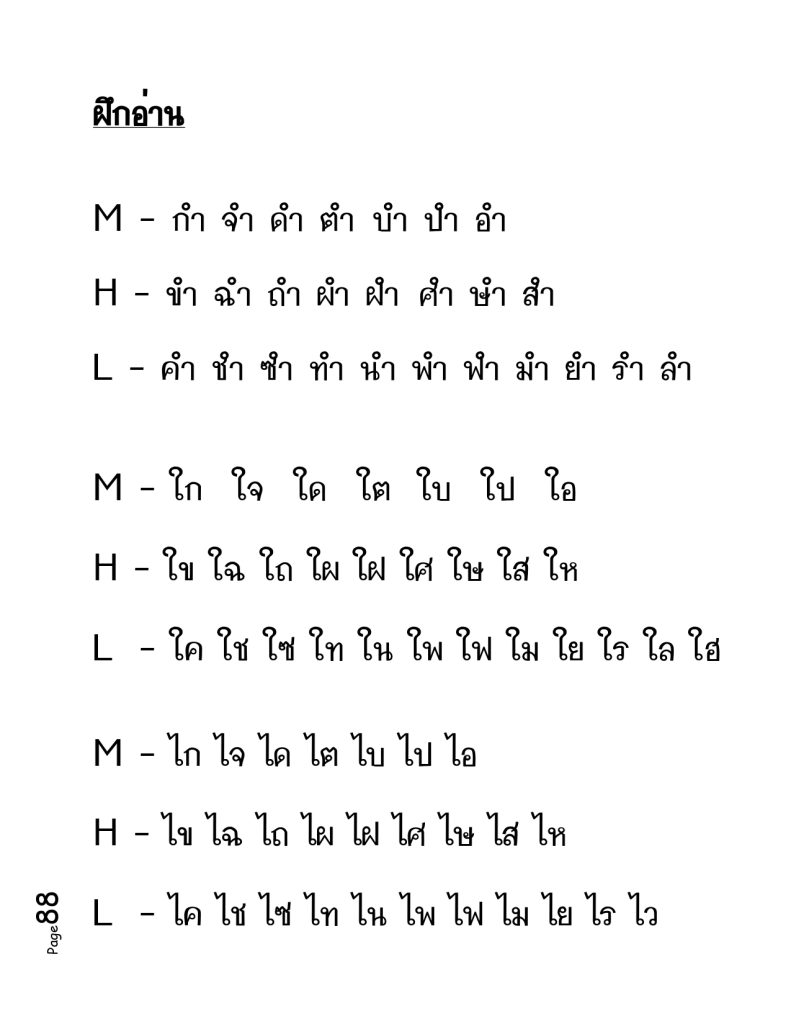

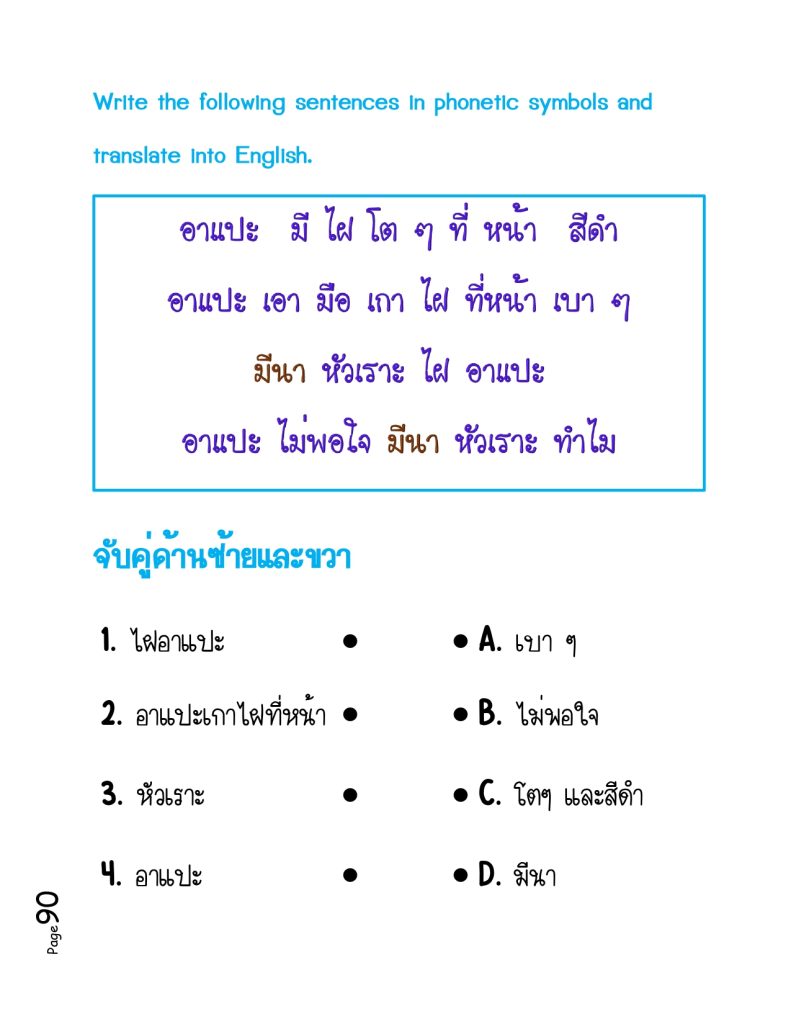

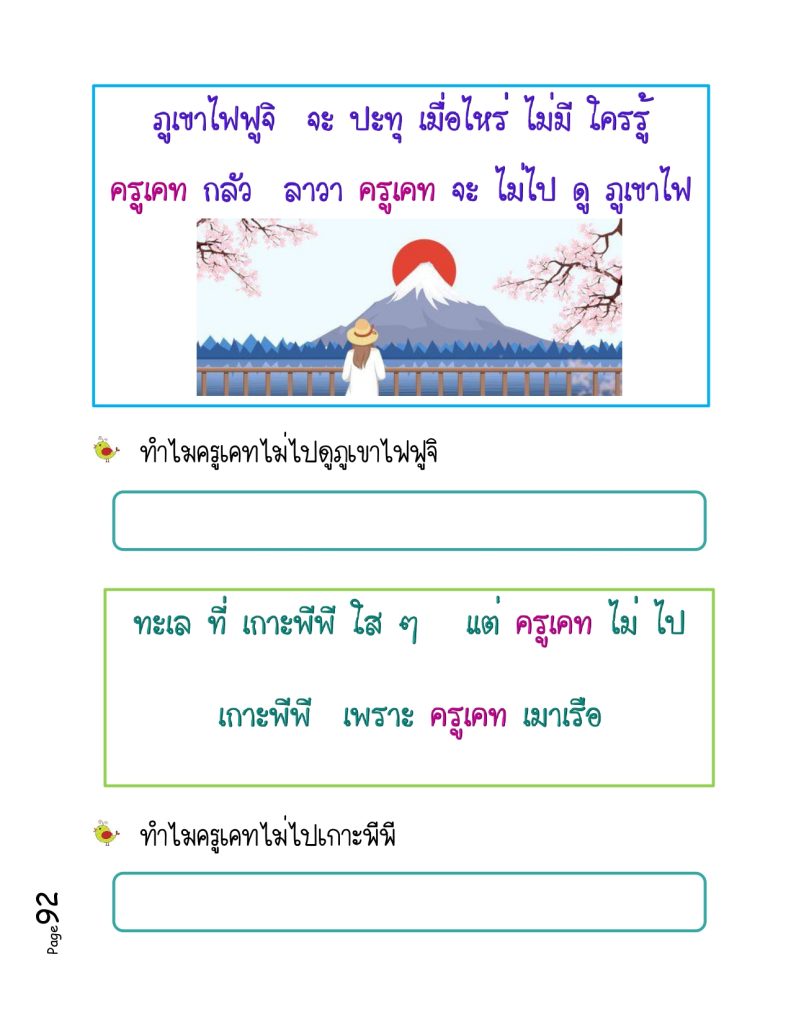
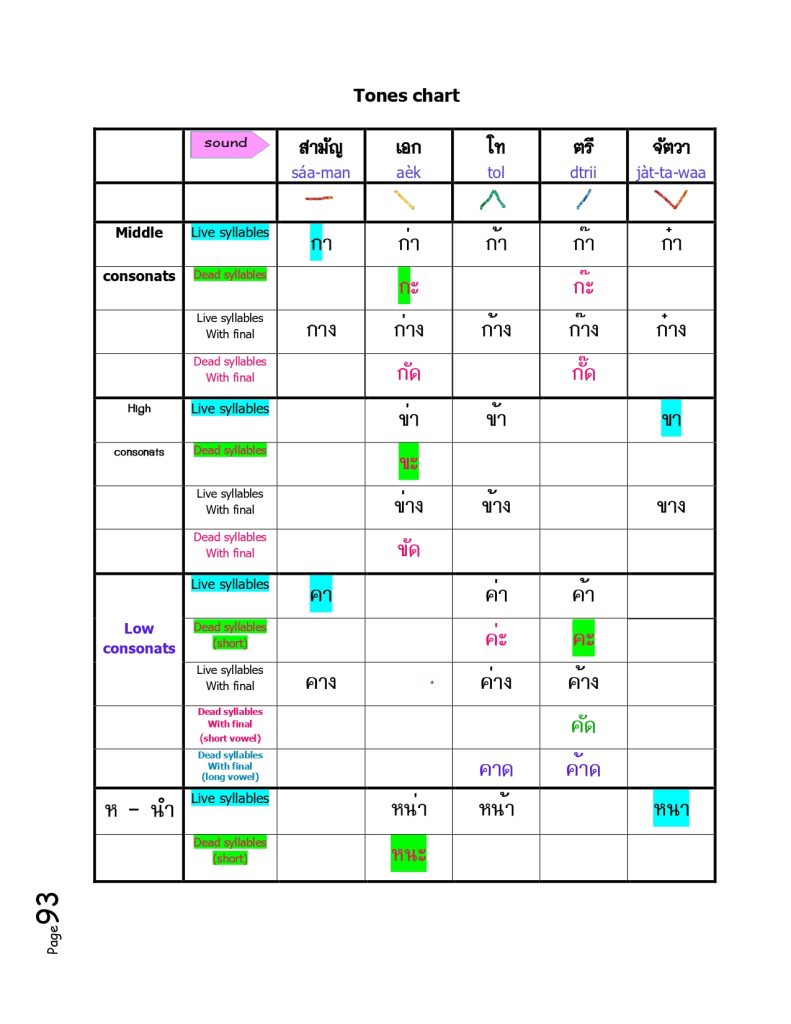
Lorem ipsum dolor sit amet, consectetur adipiscing elit. Ut elit tellus, luctus nec ullamcorper mattis, pulvinar dapibus leo.